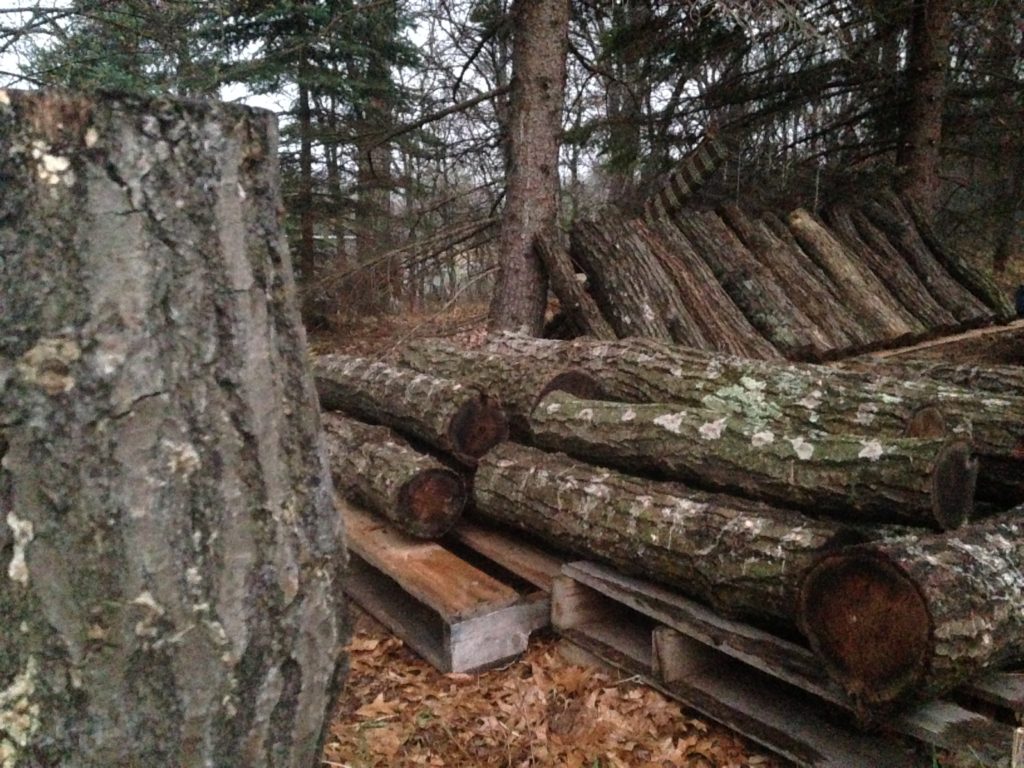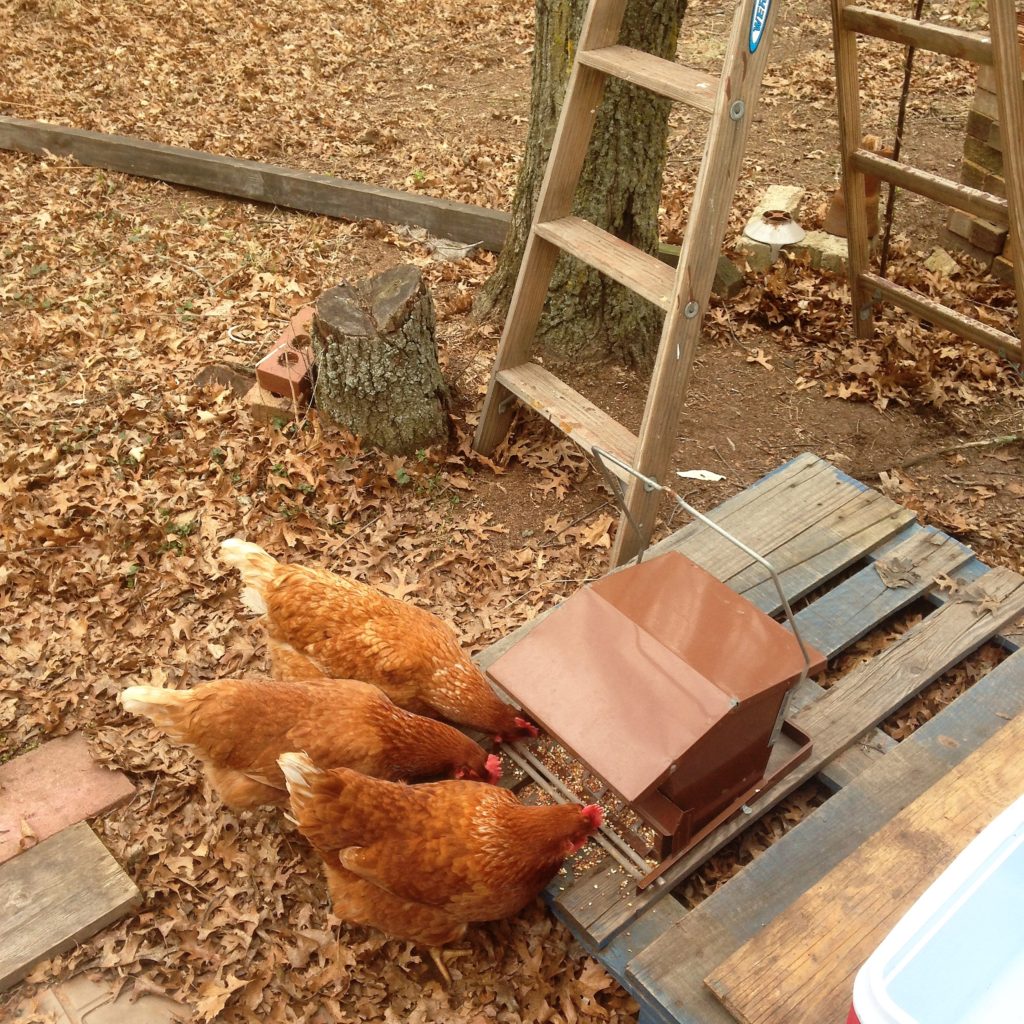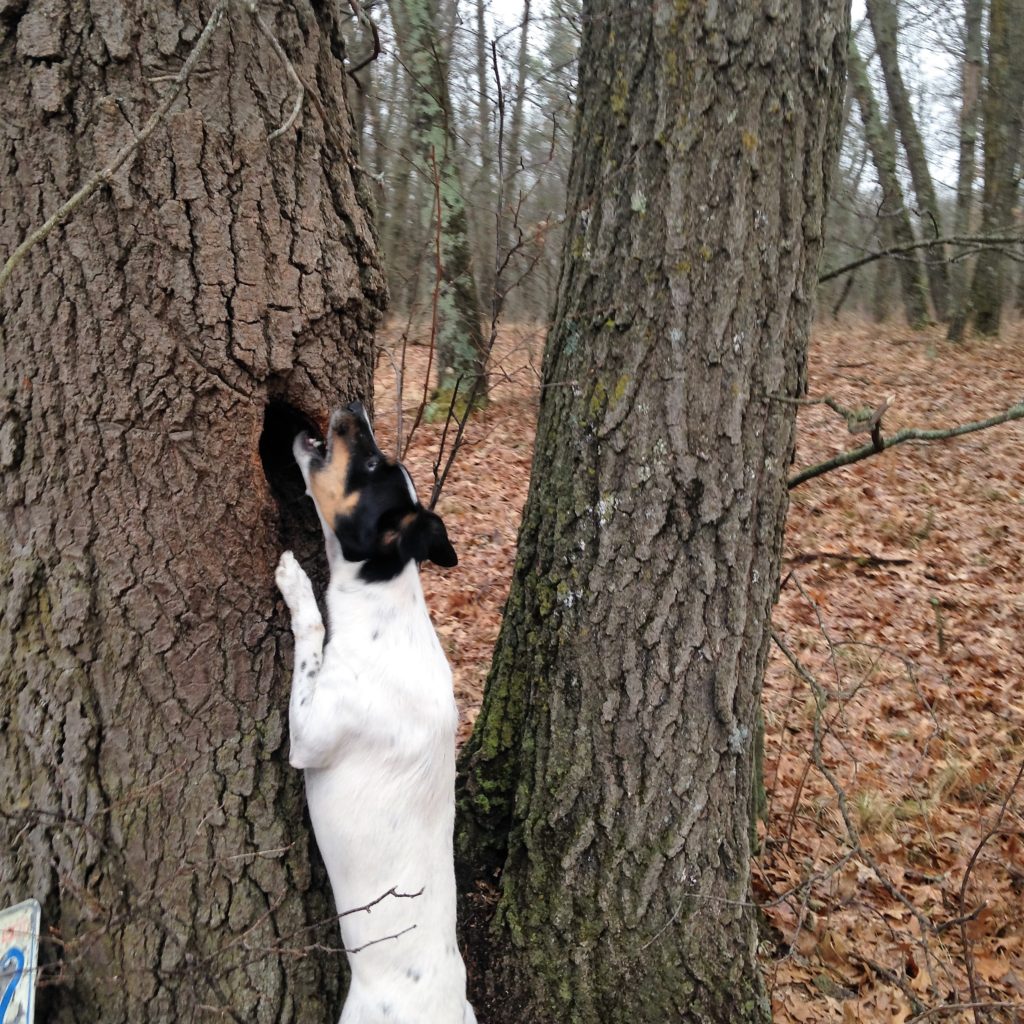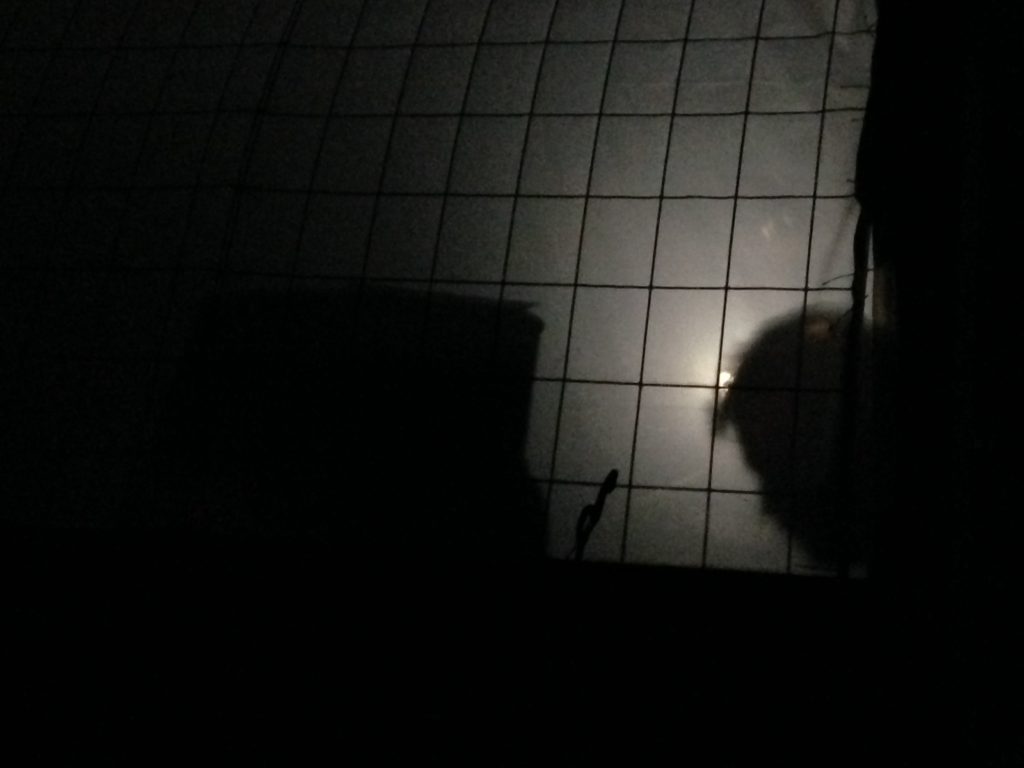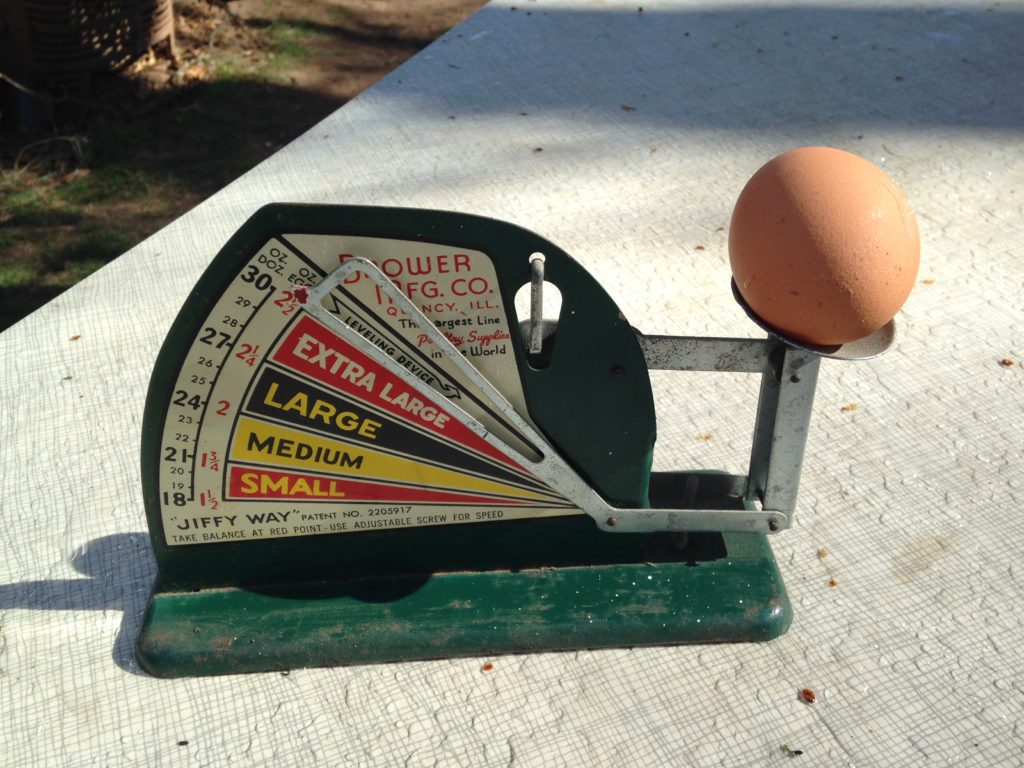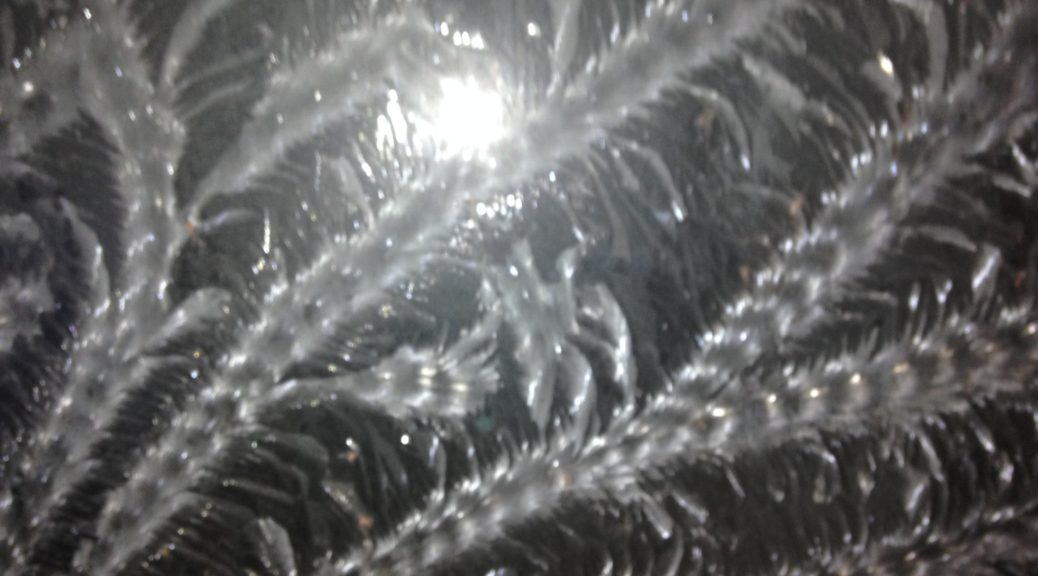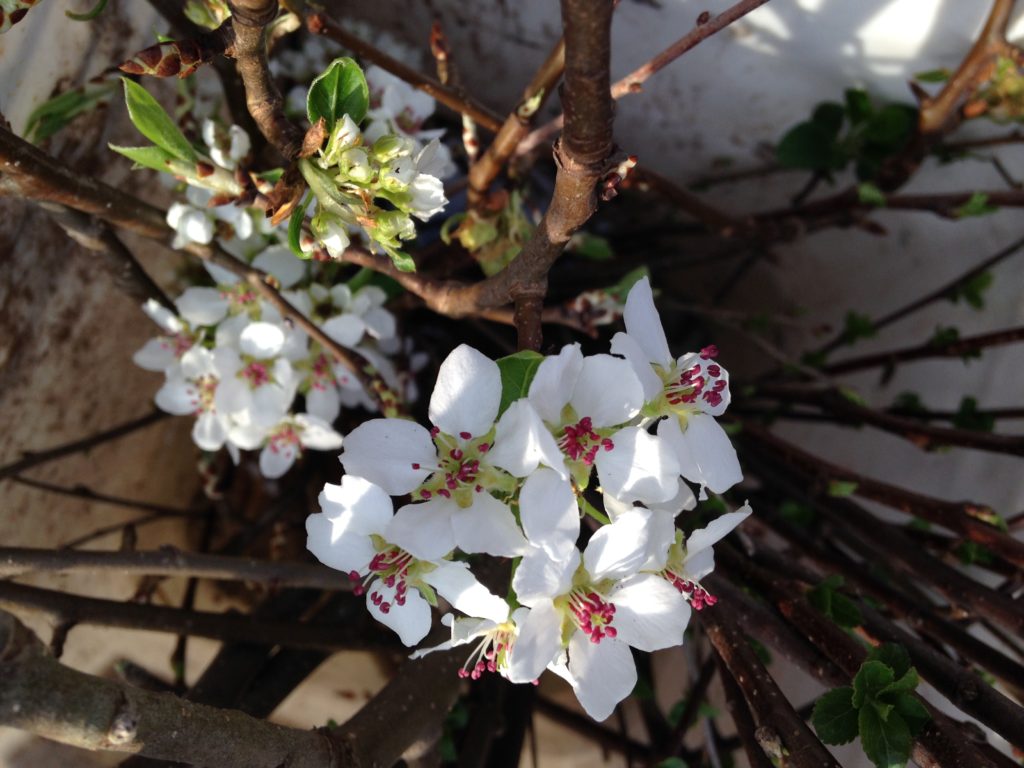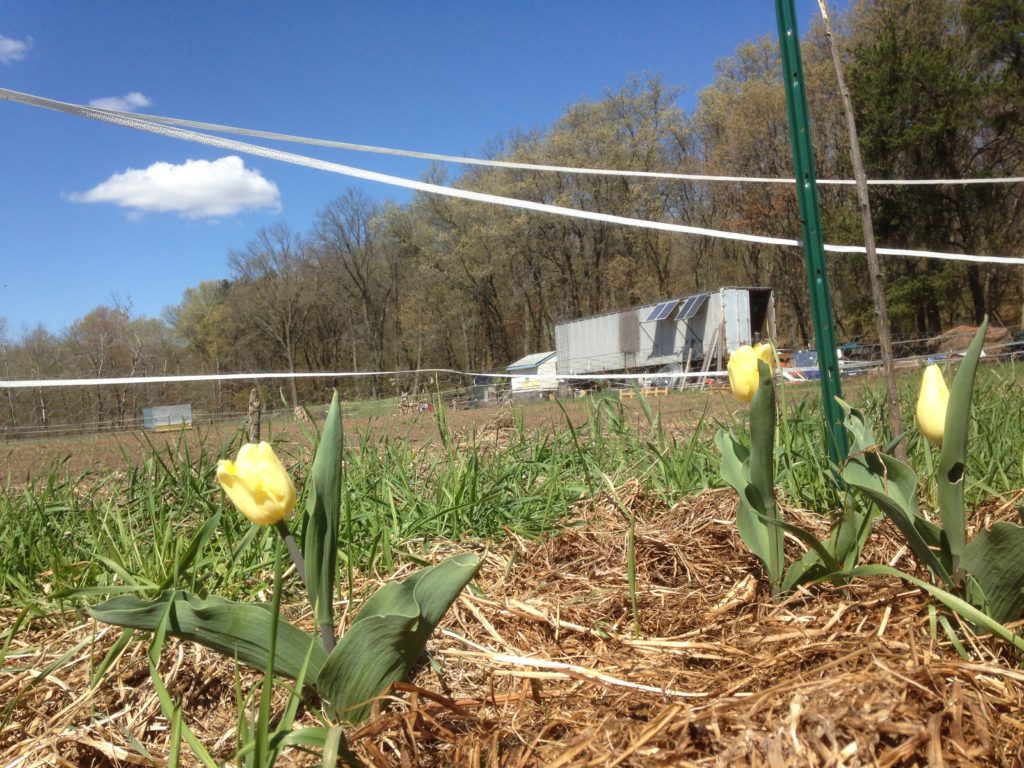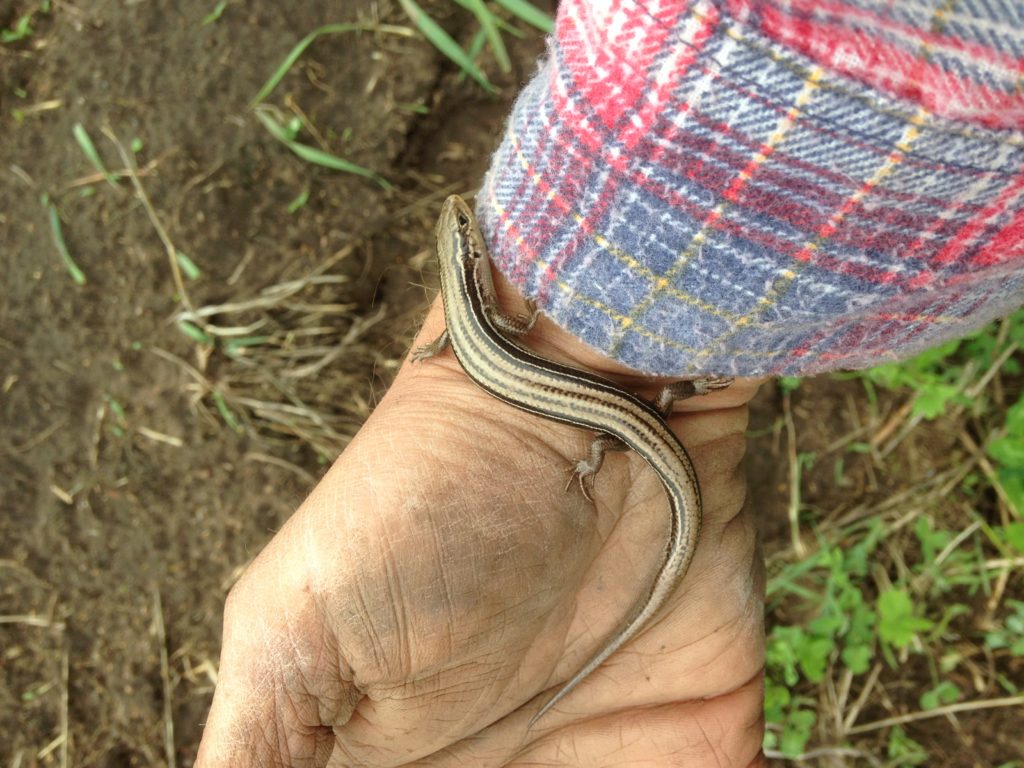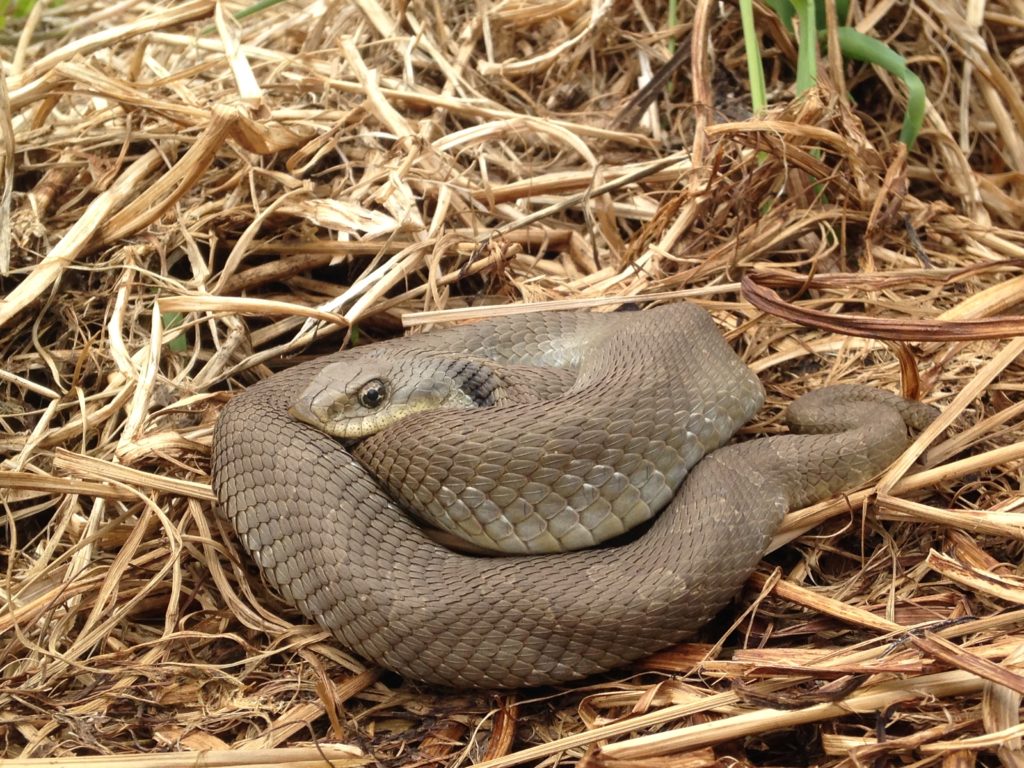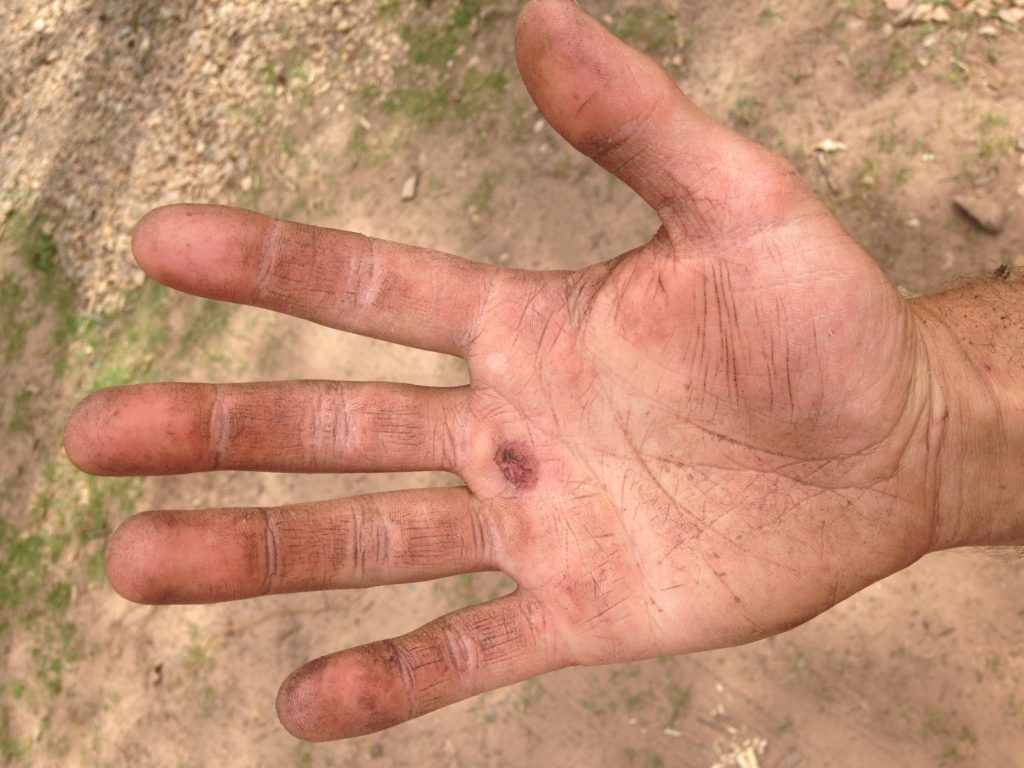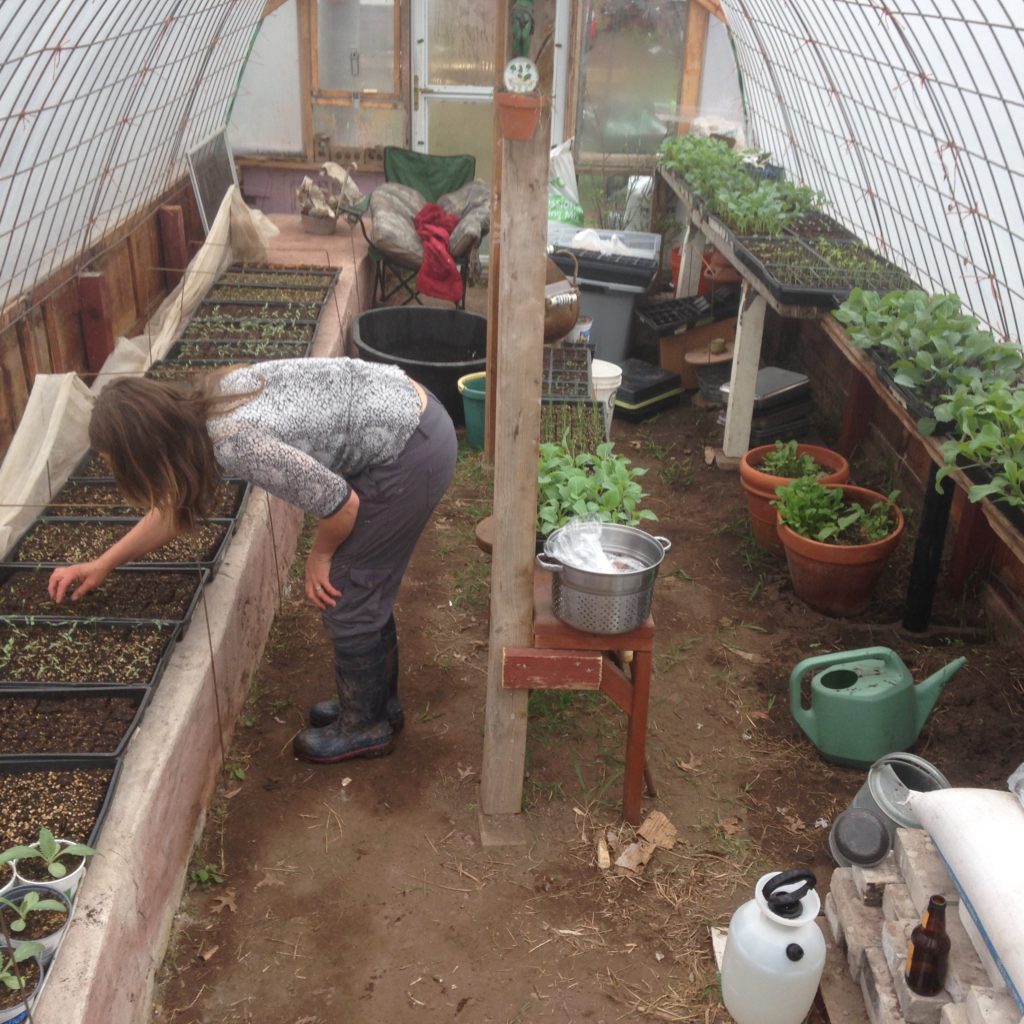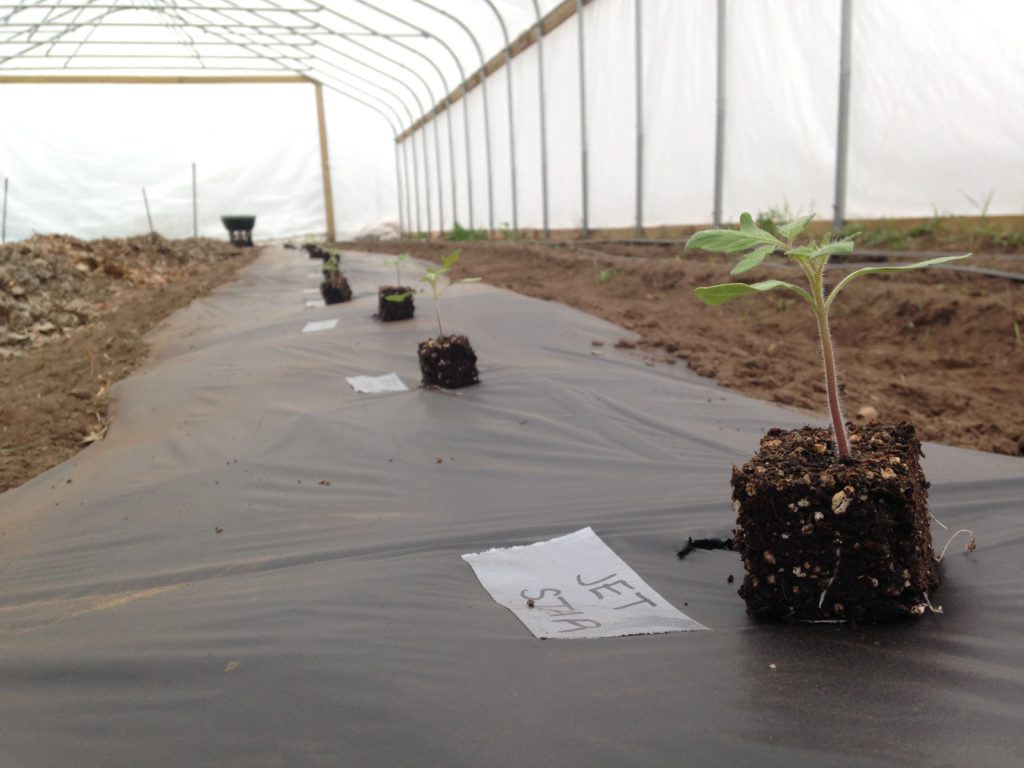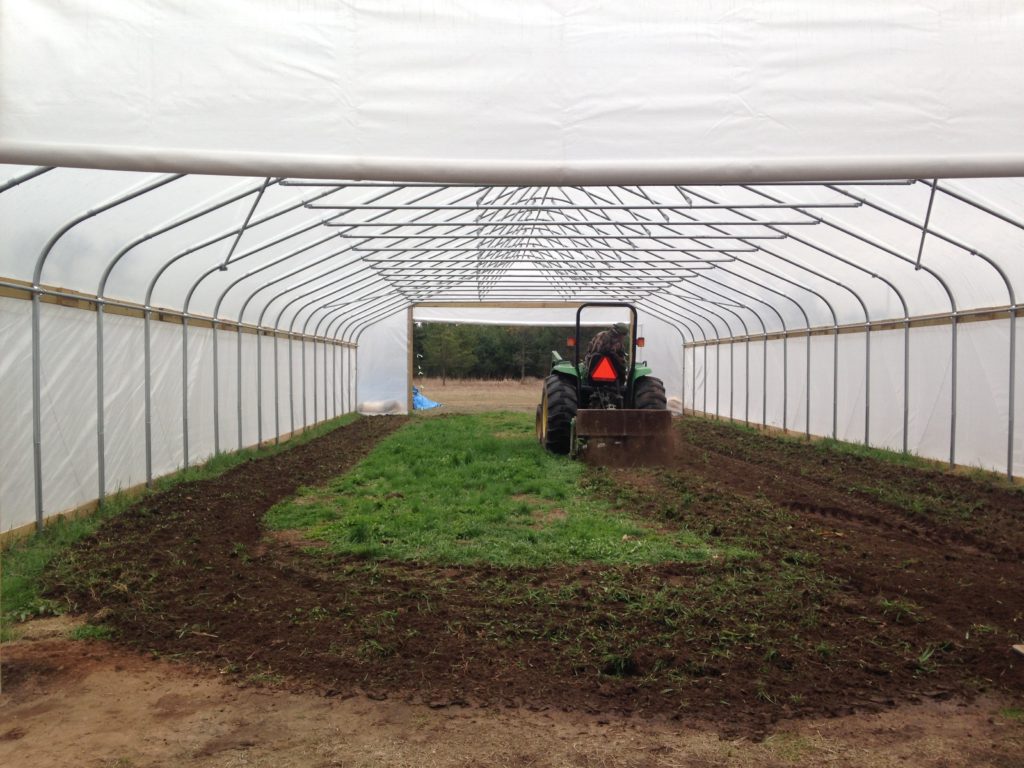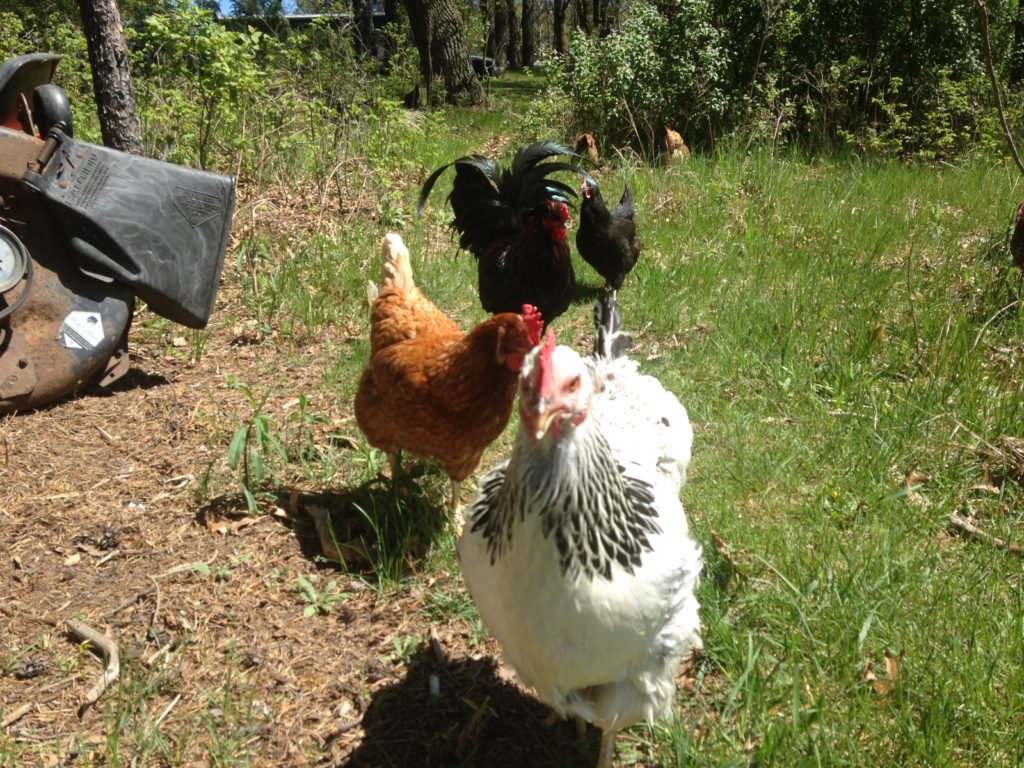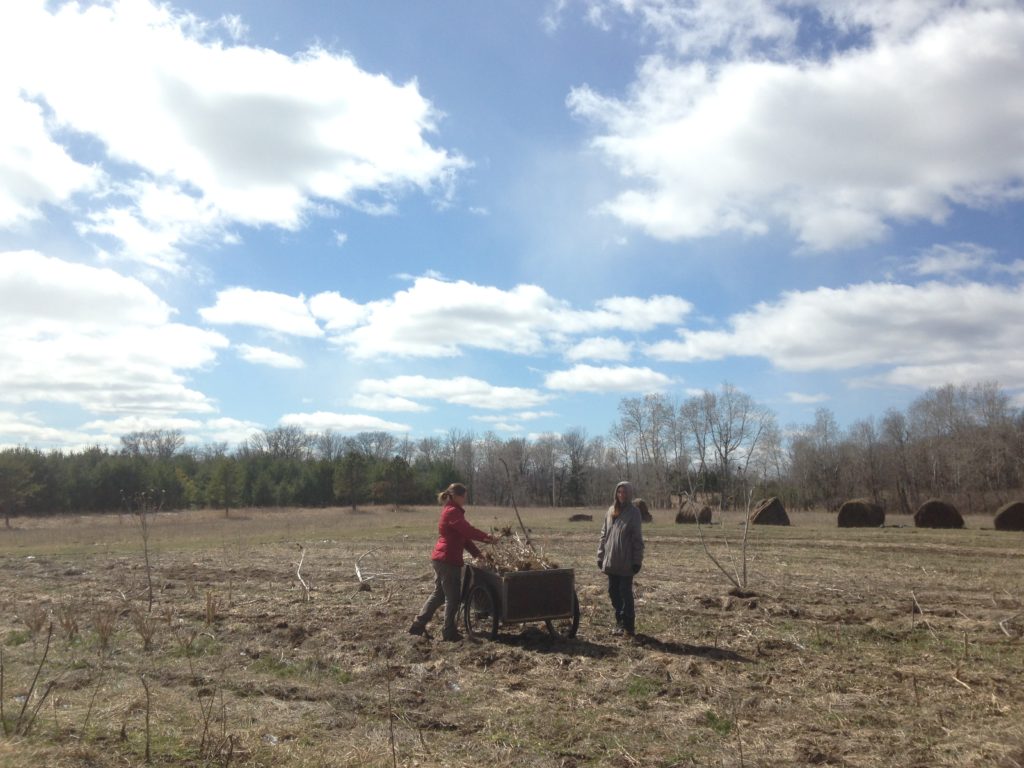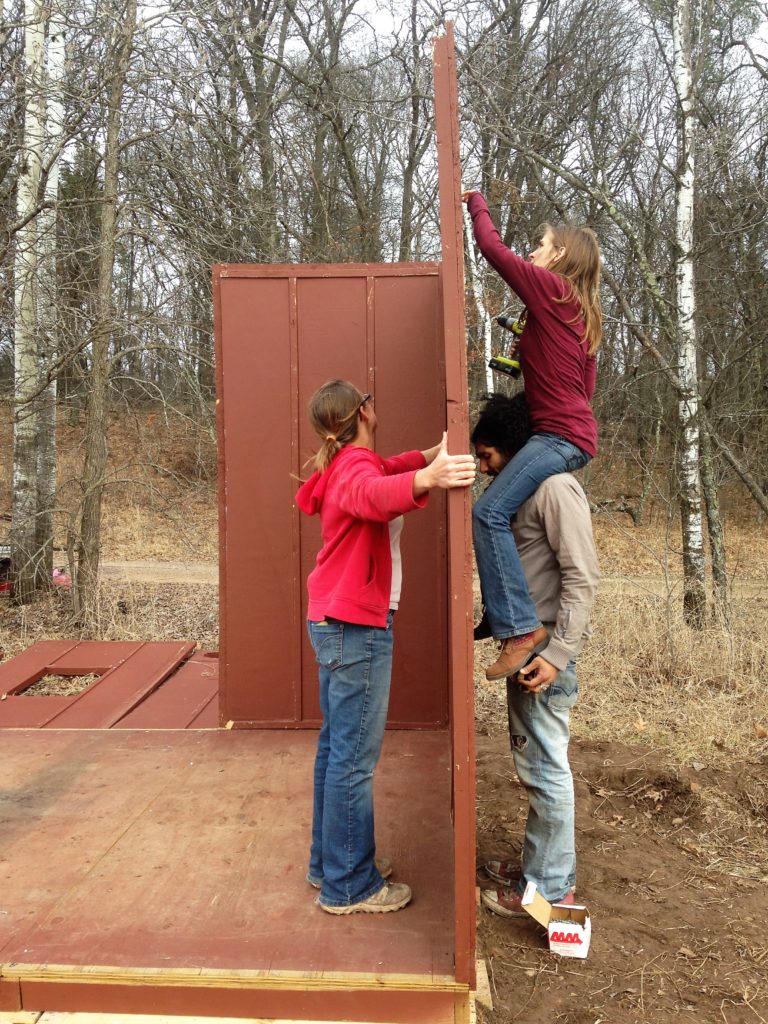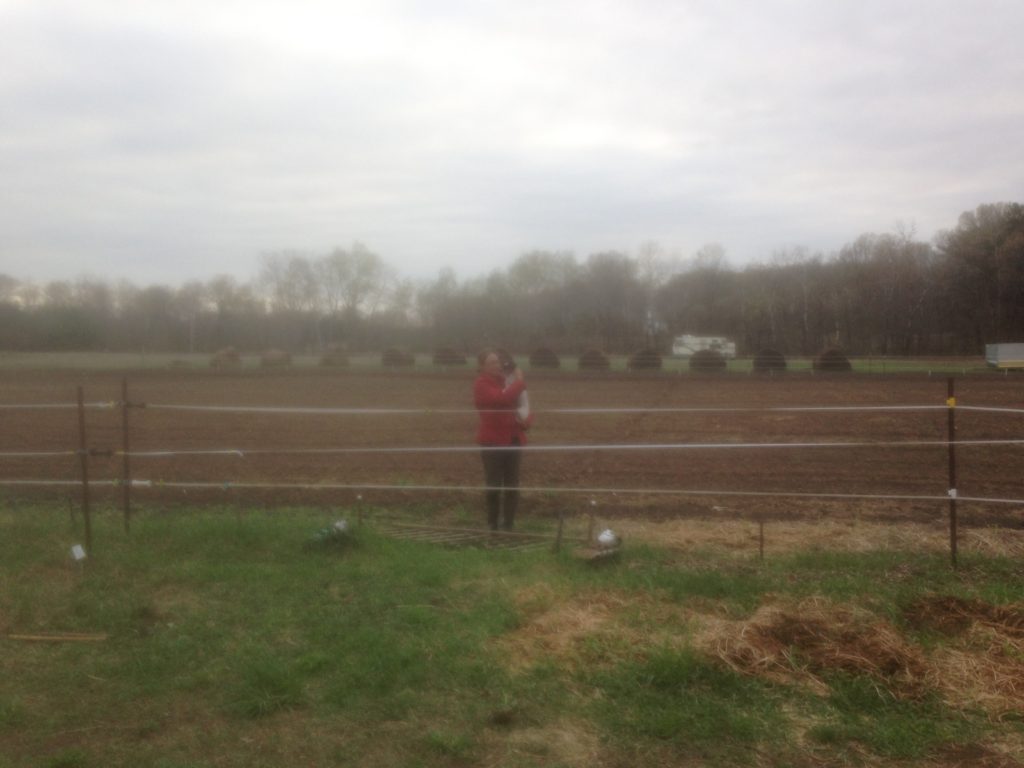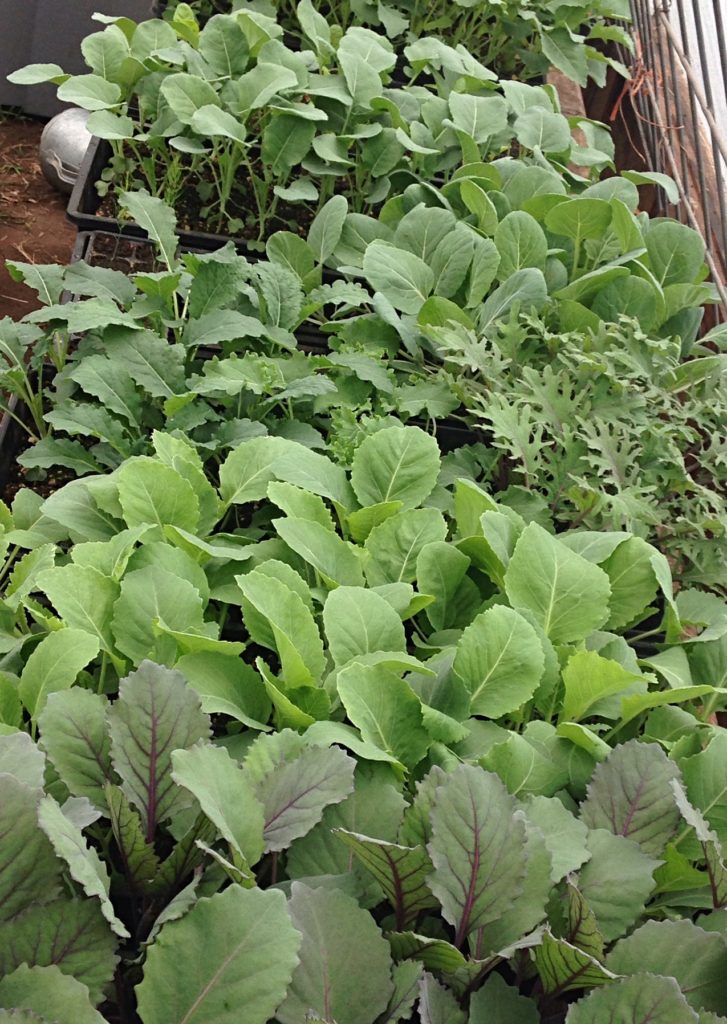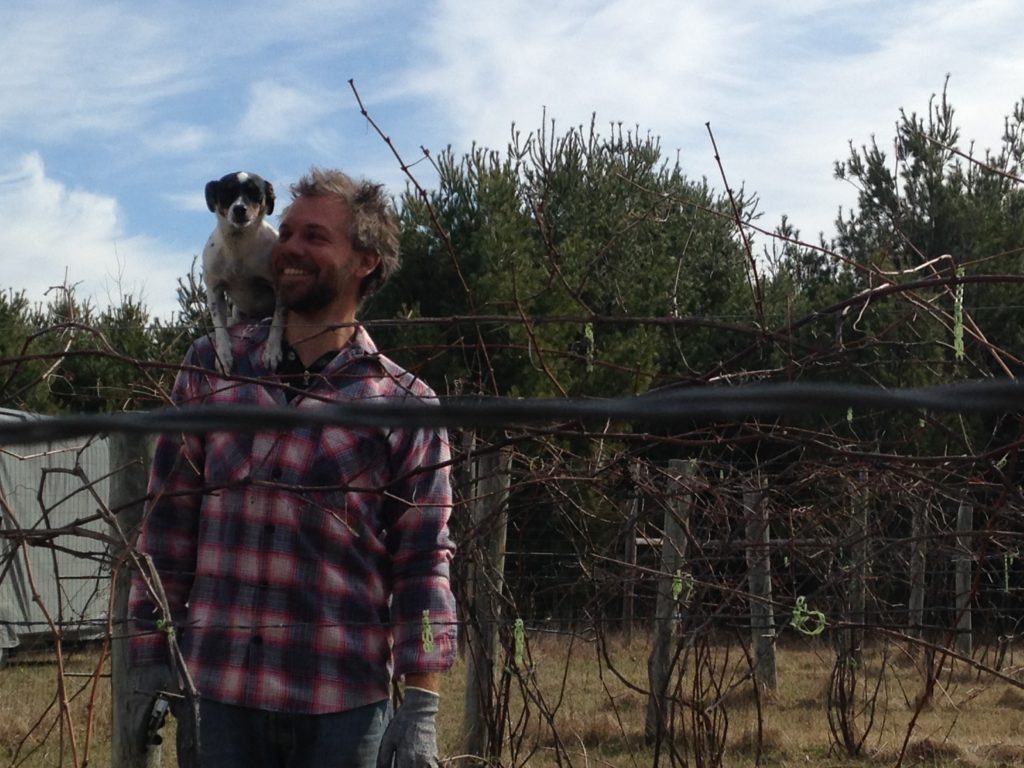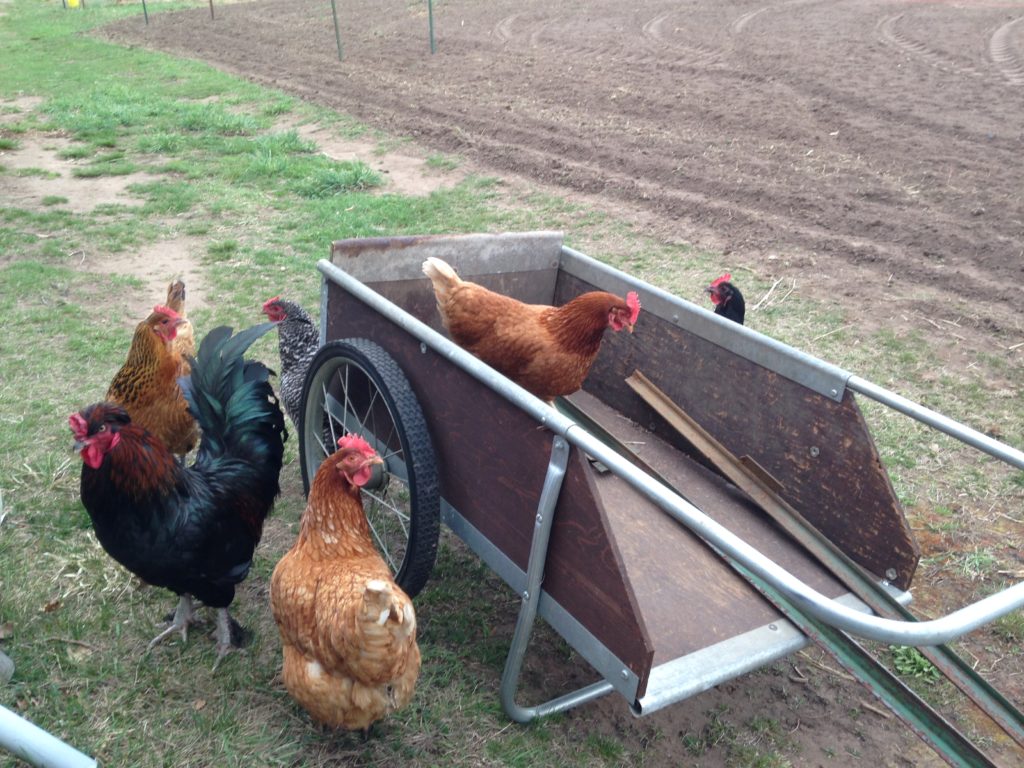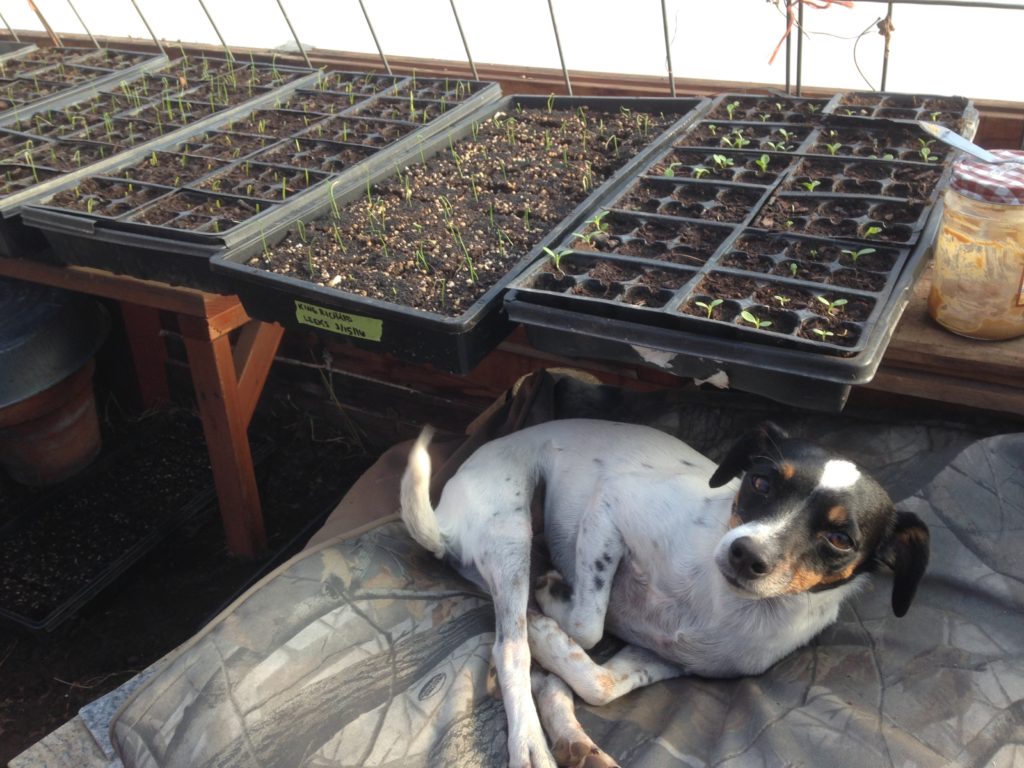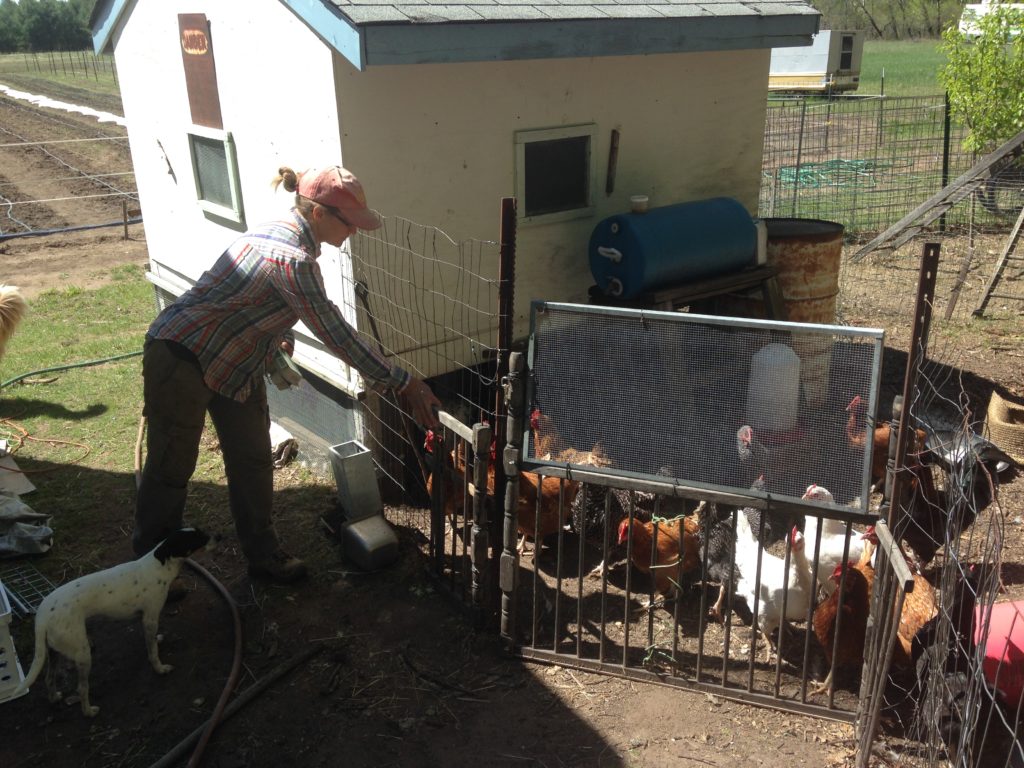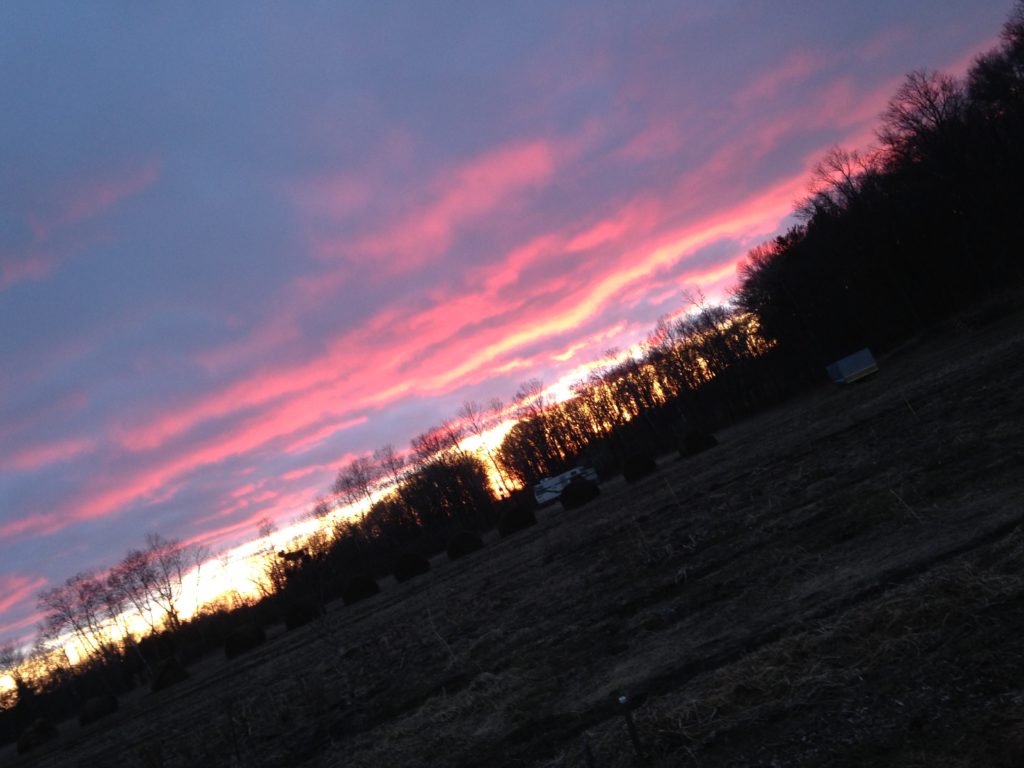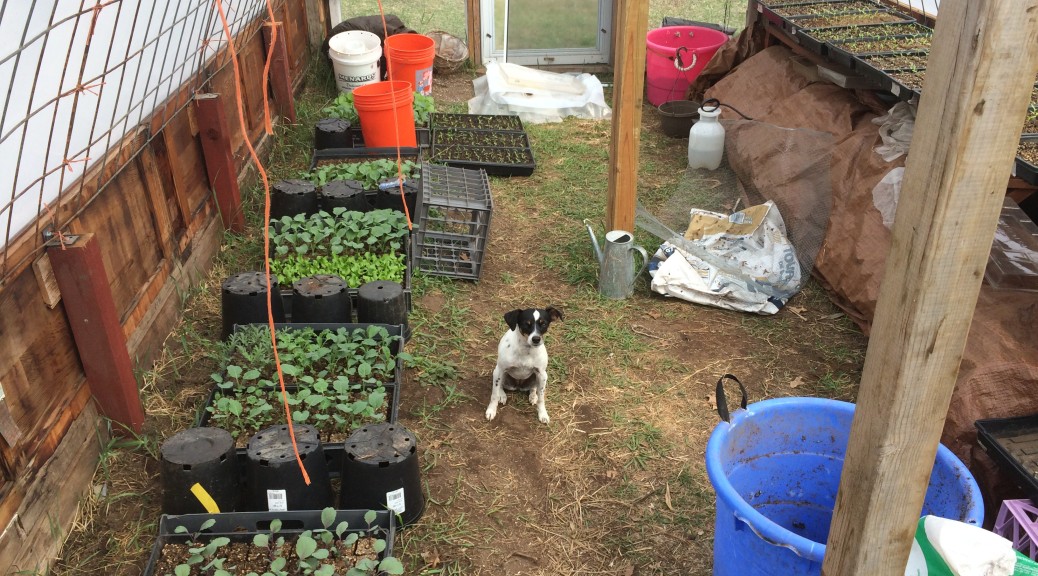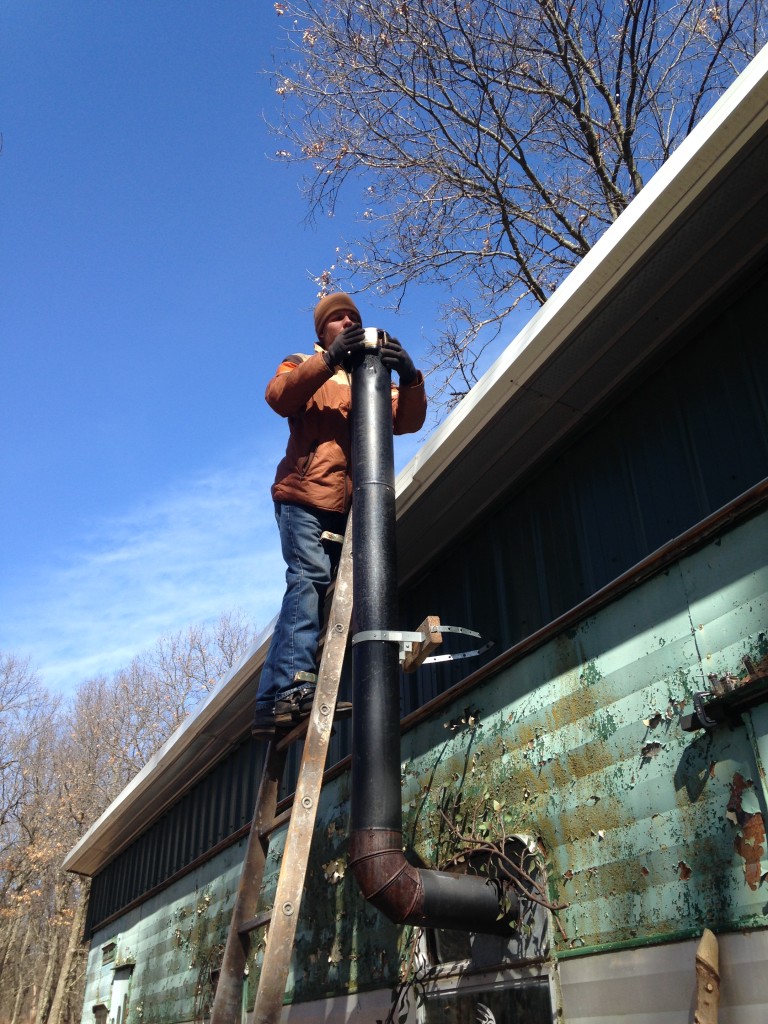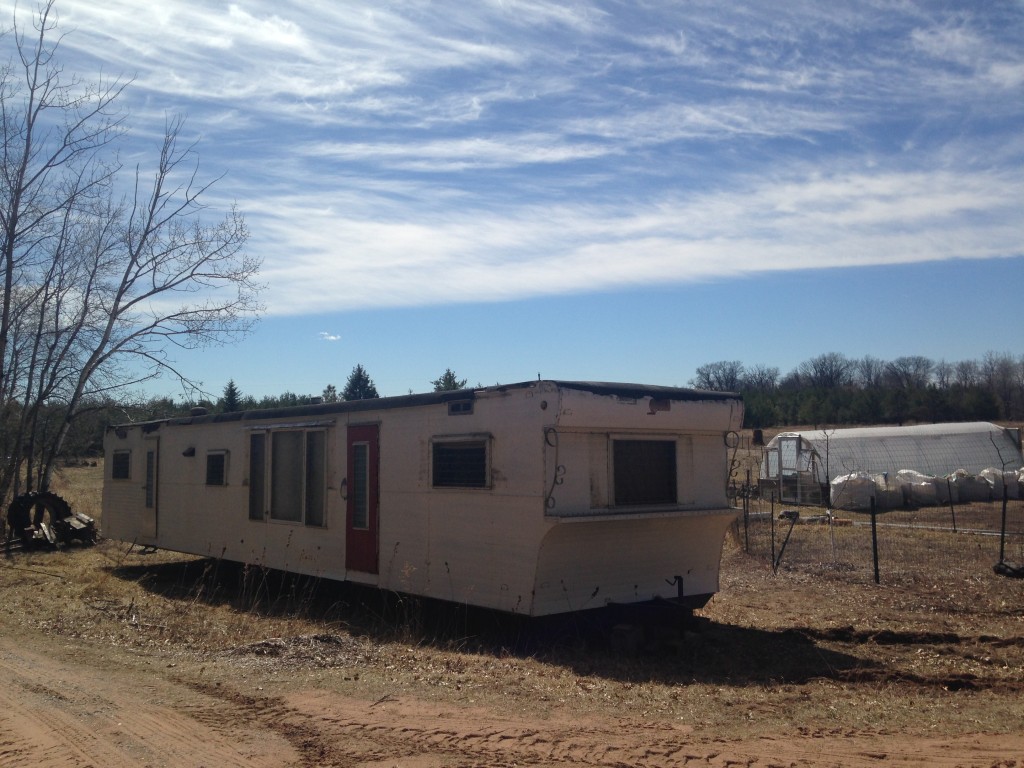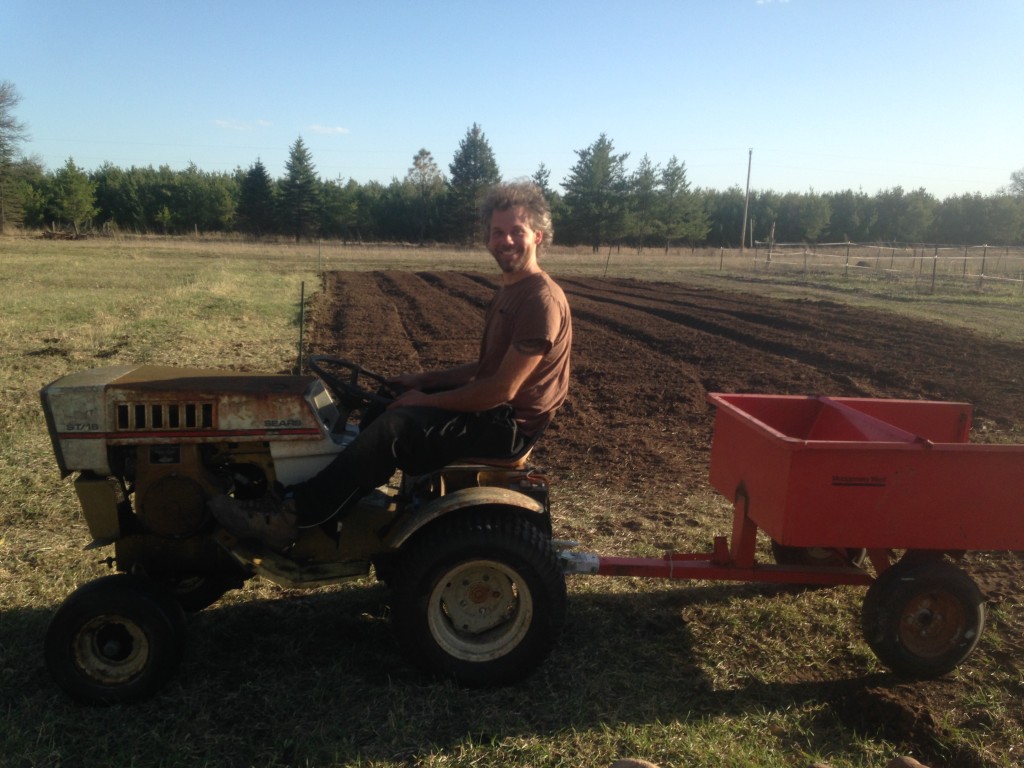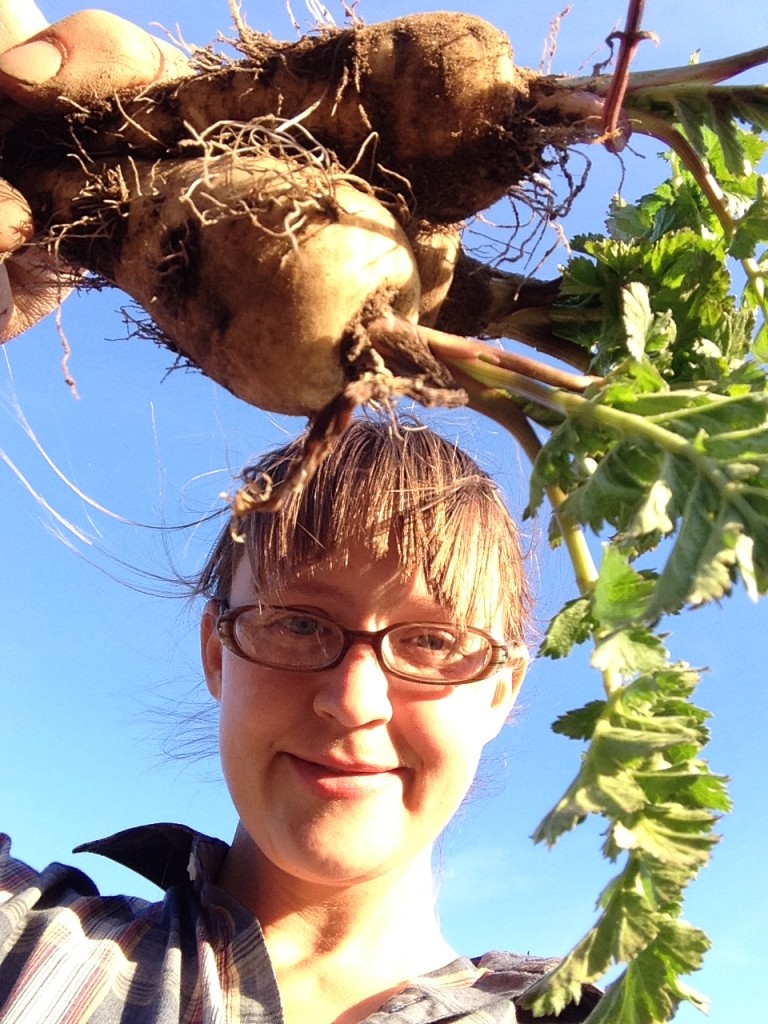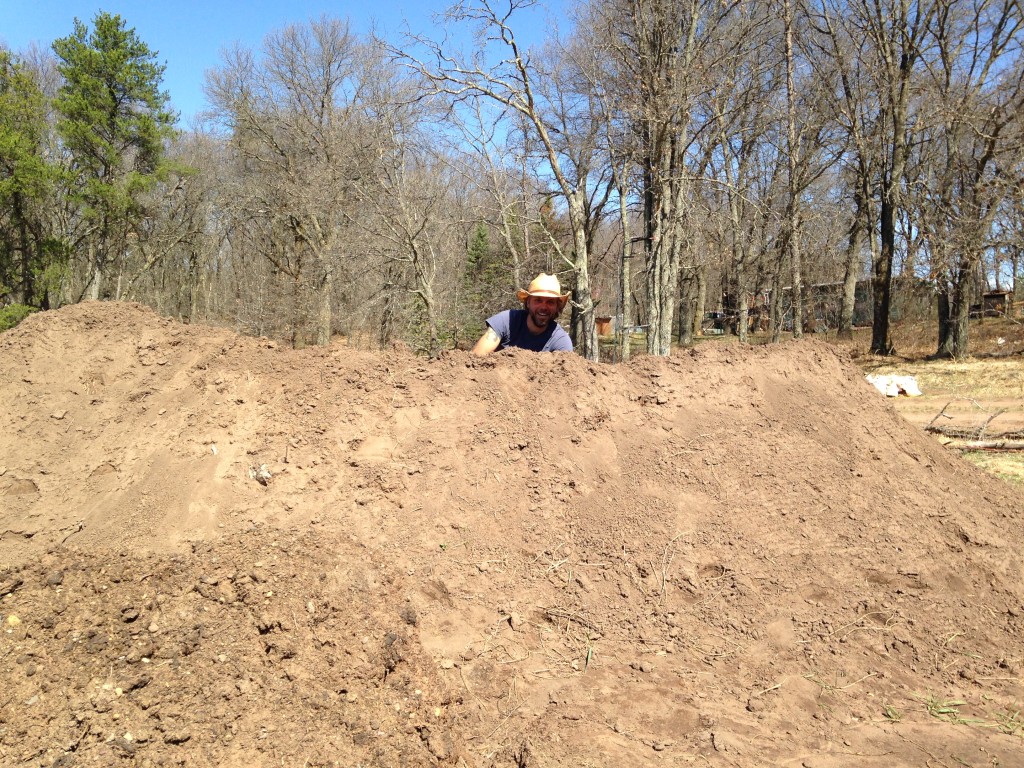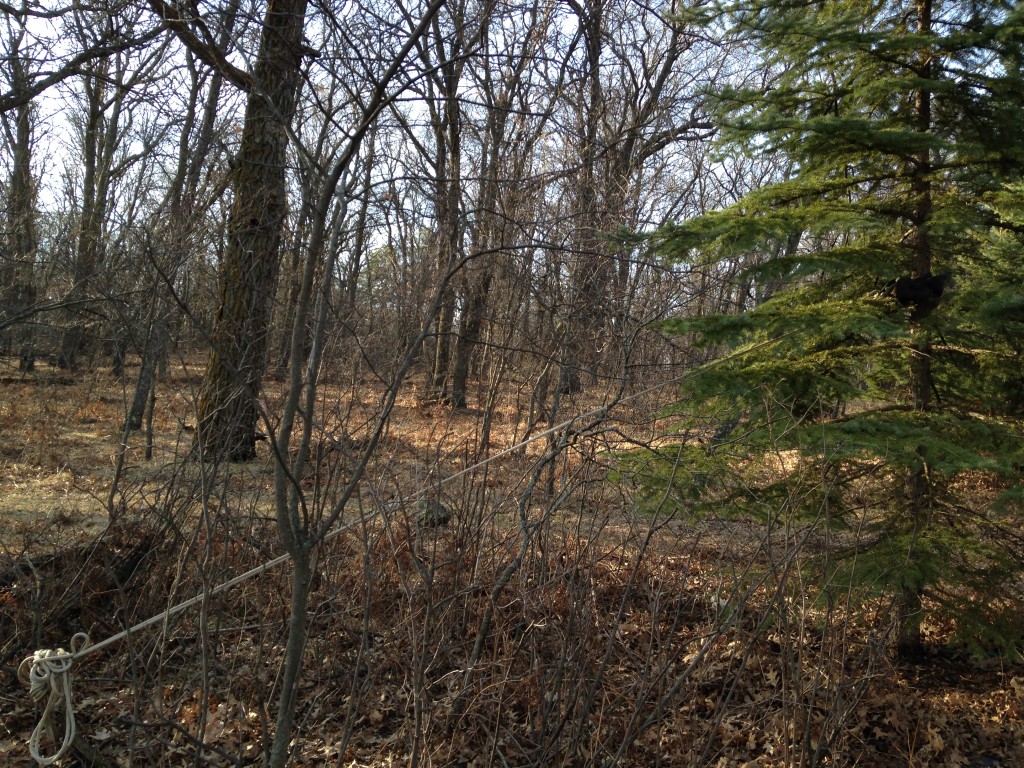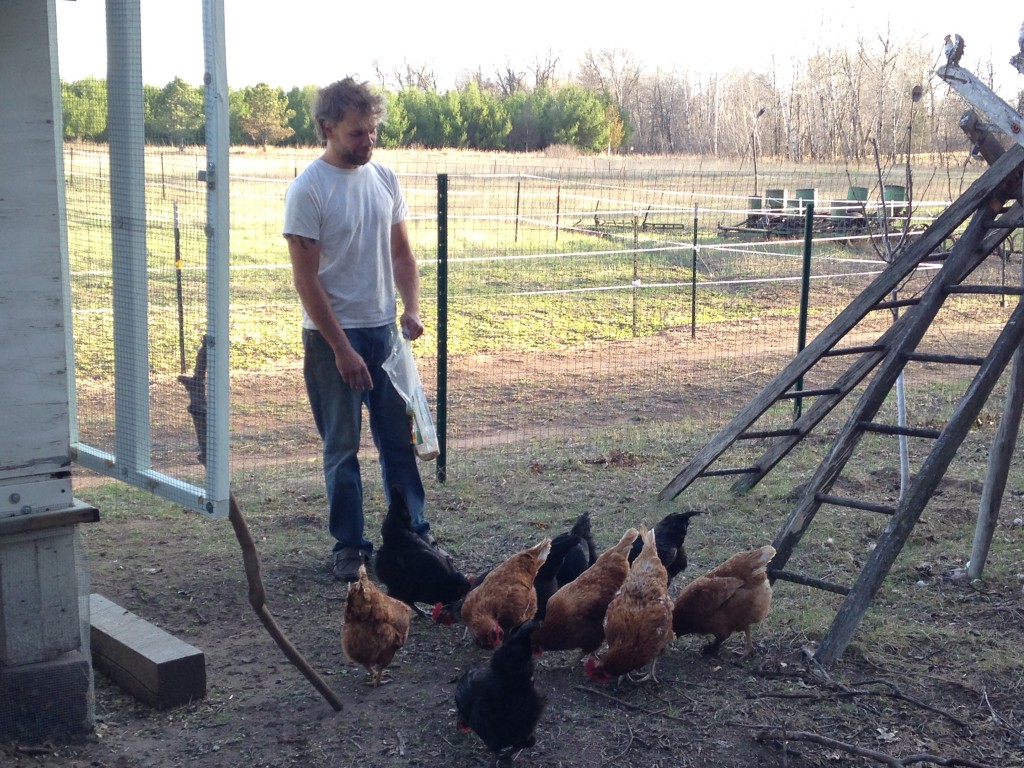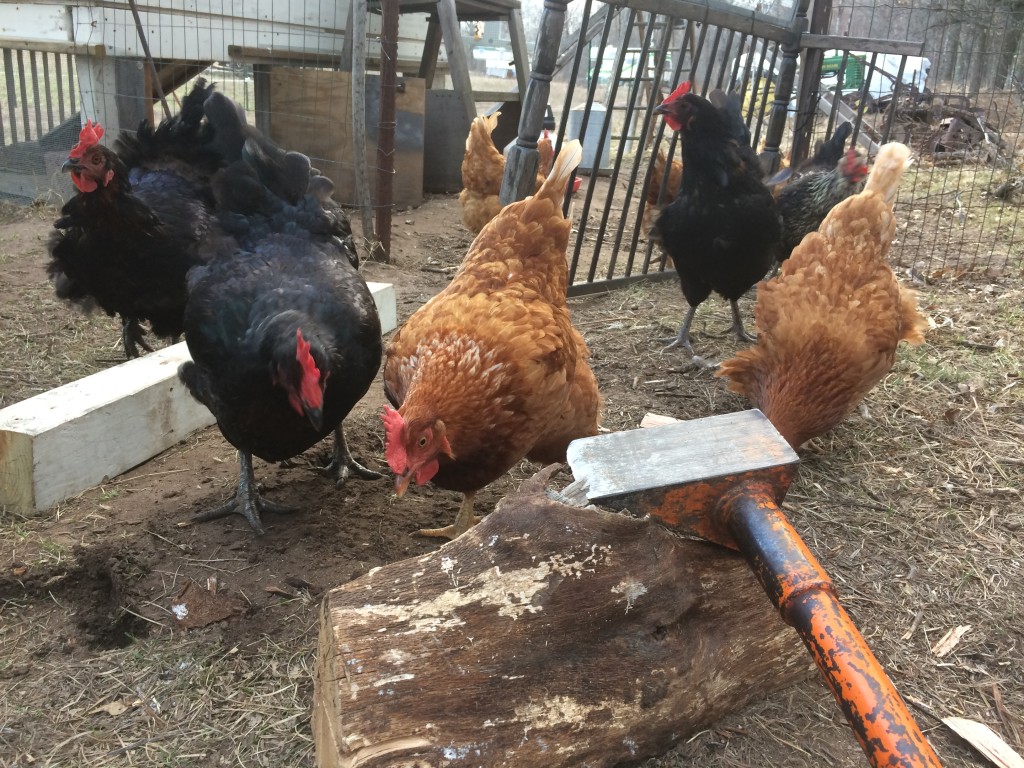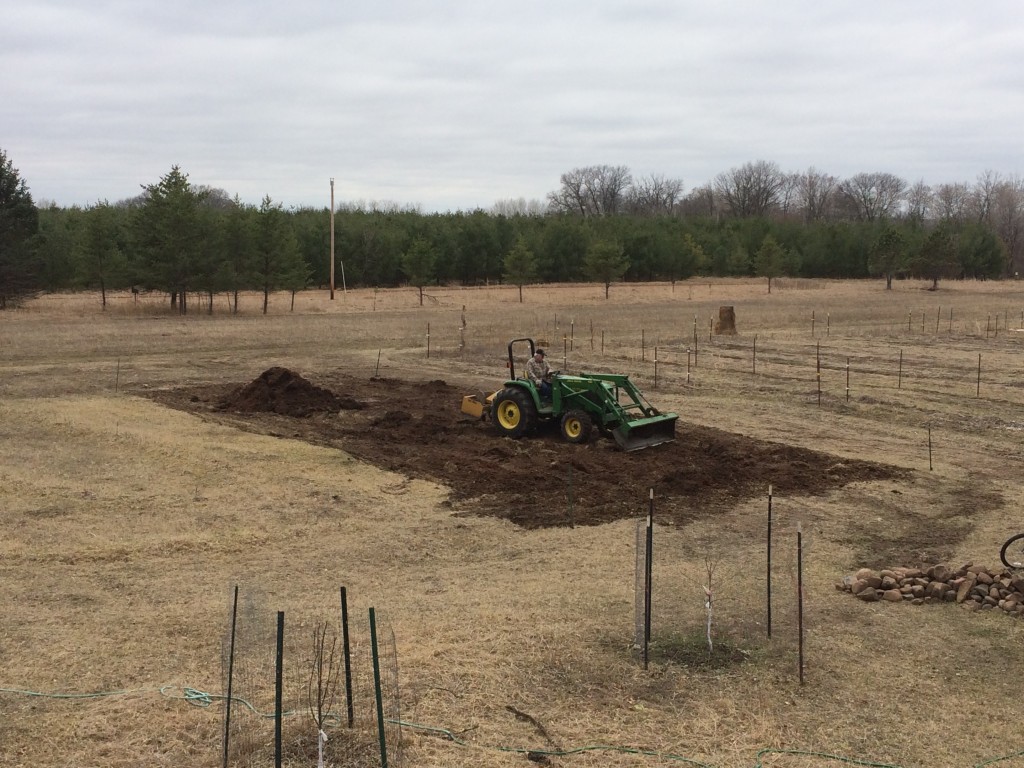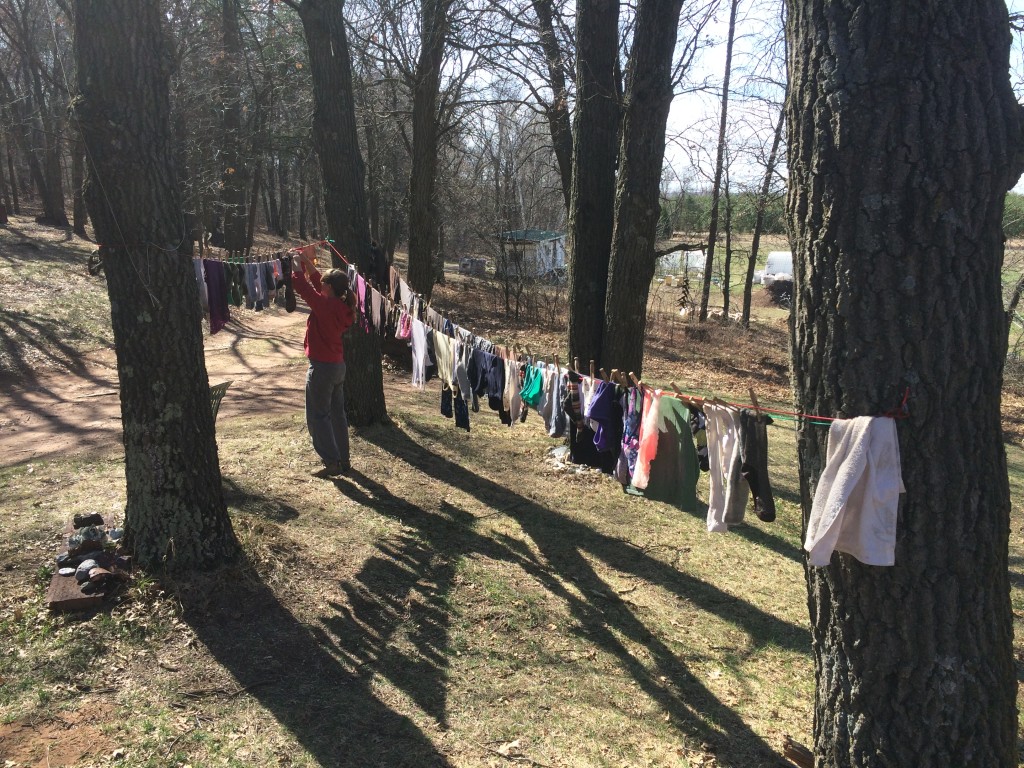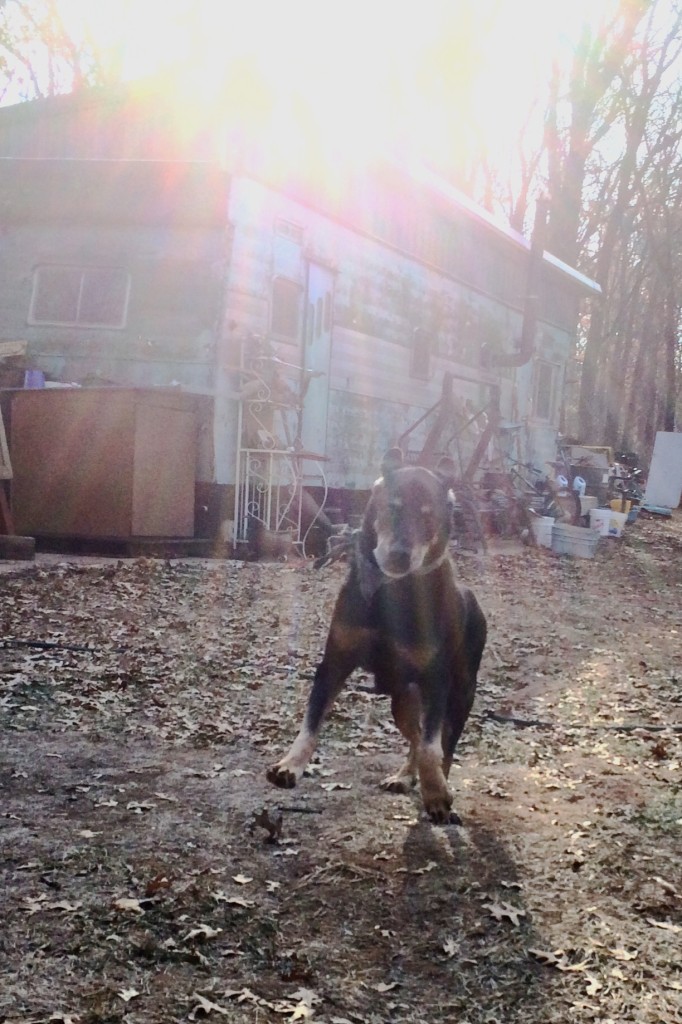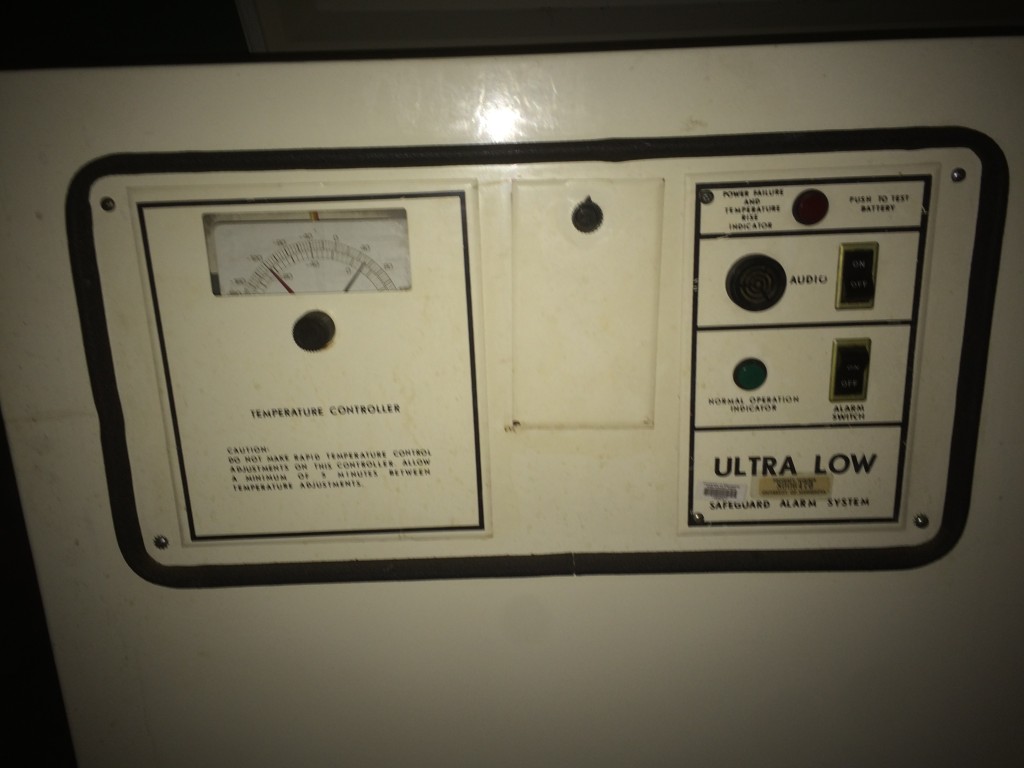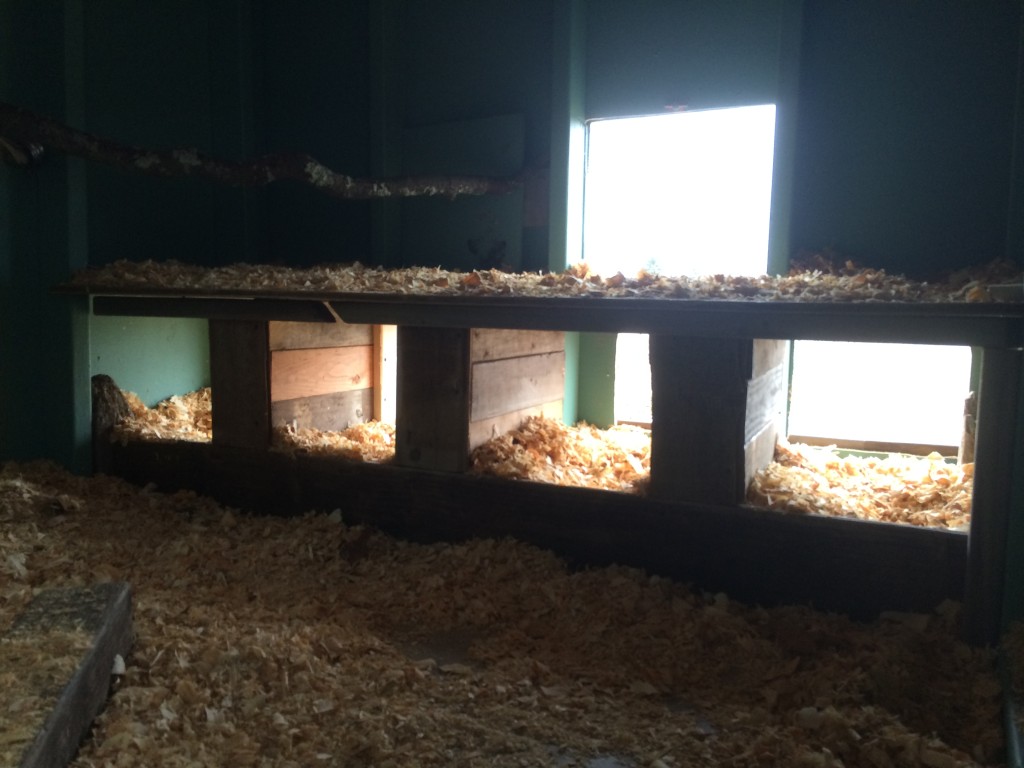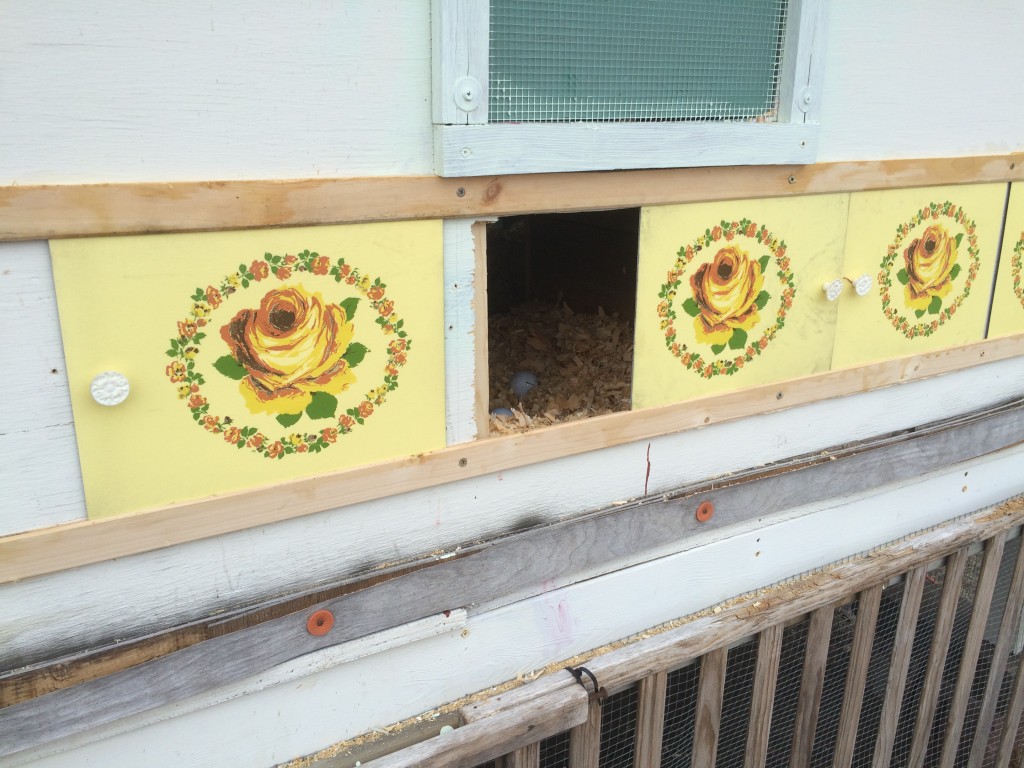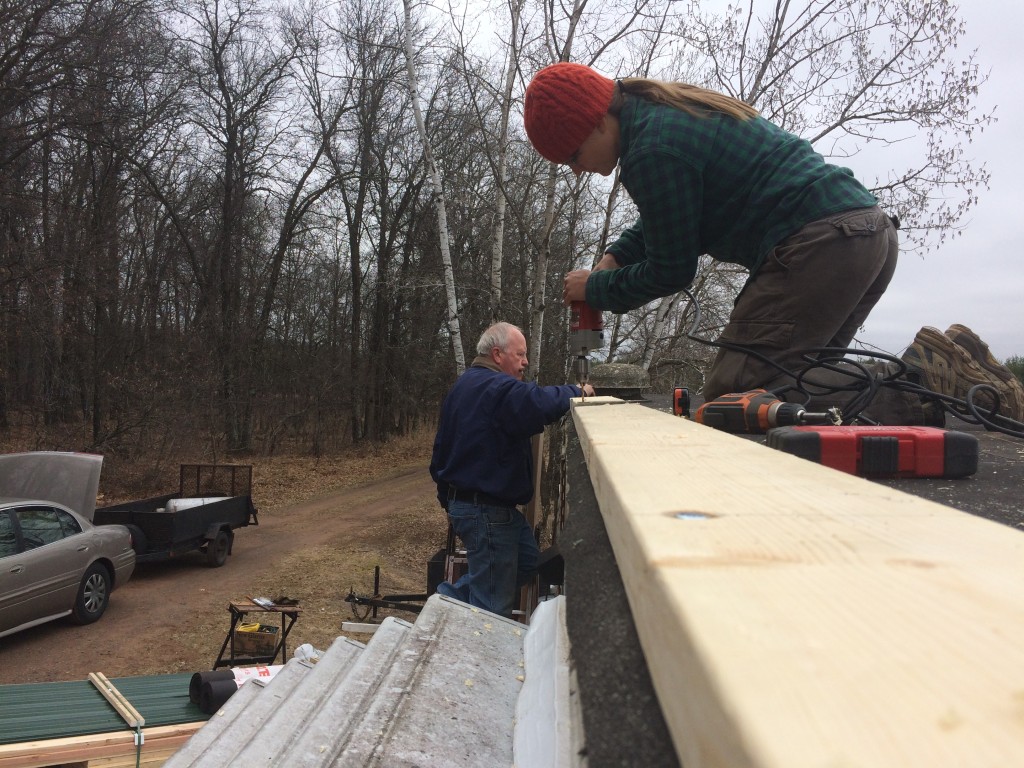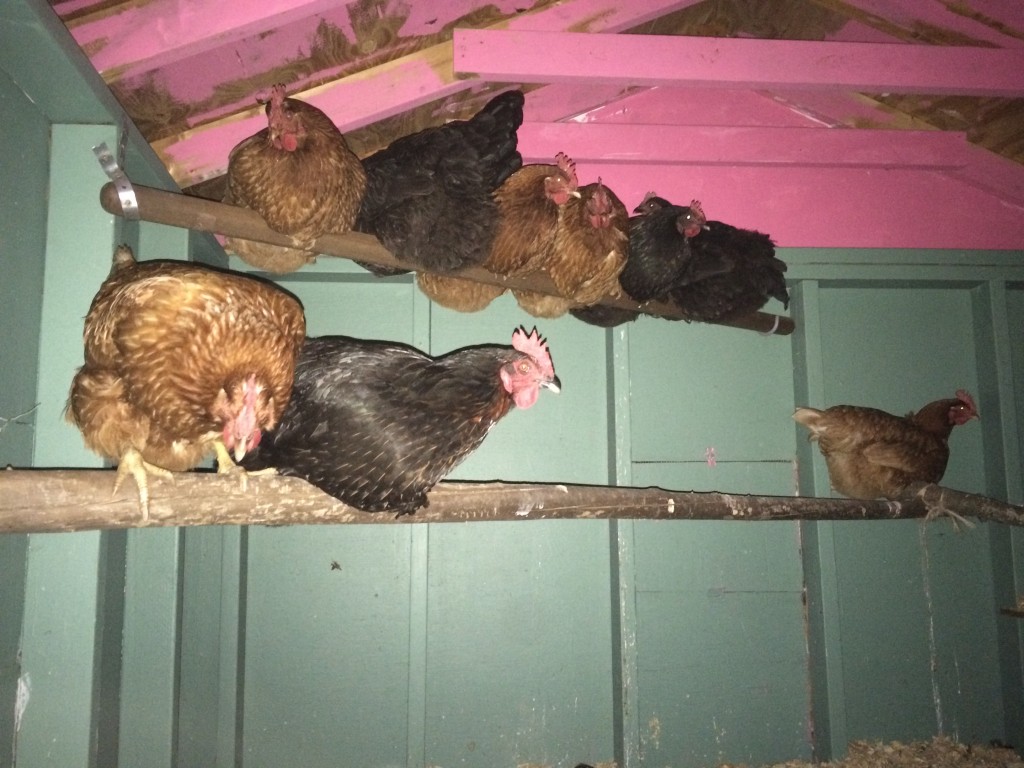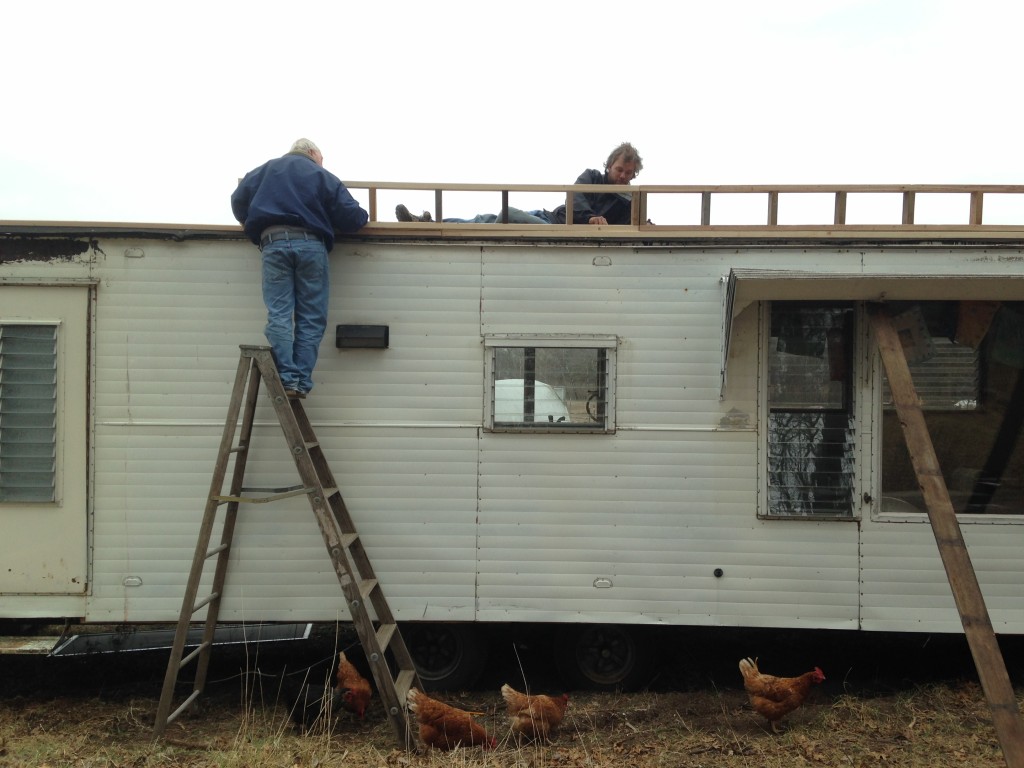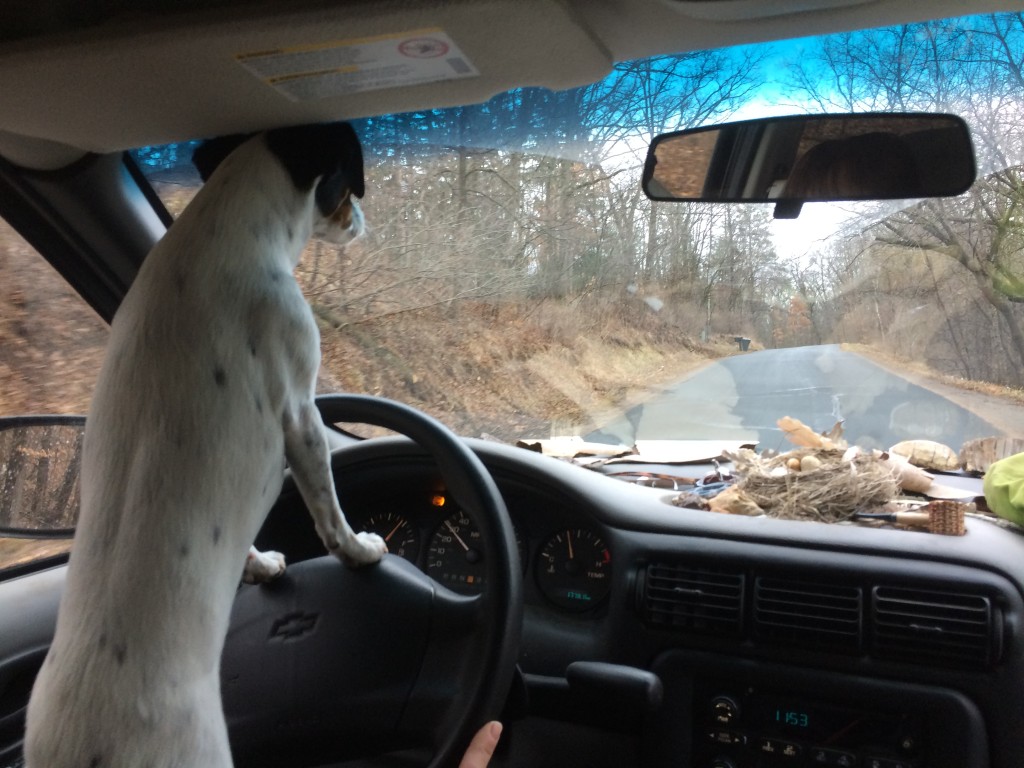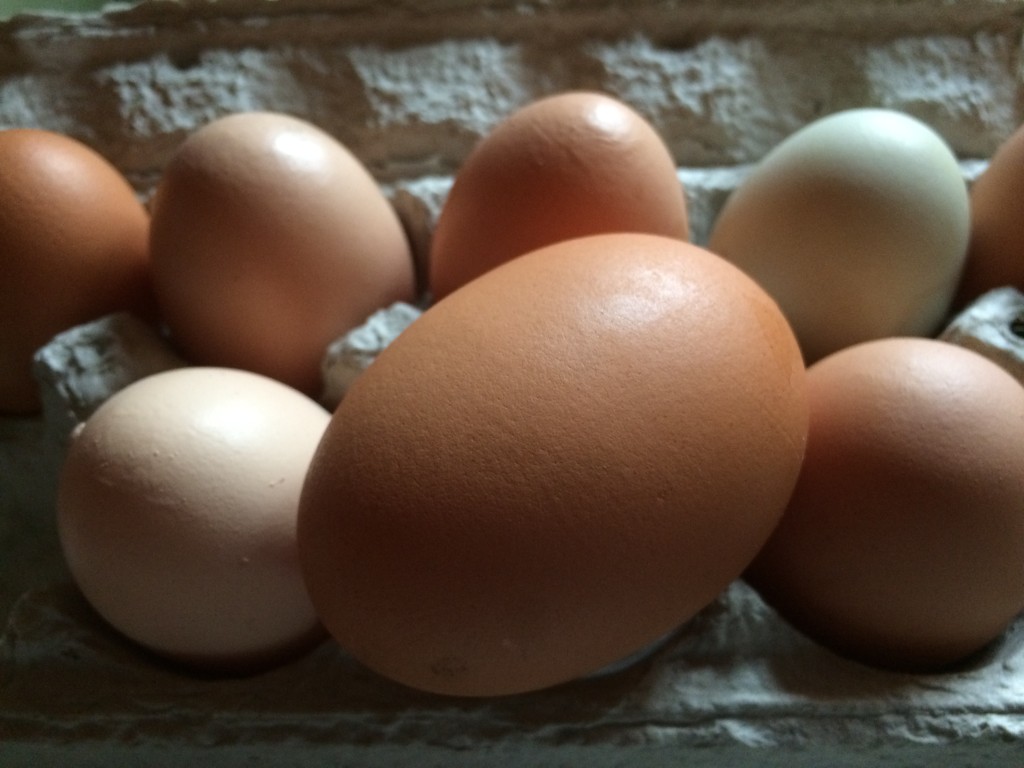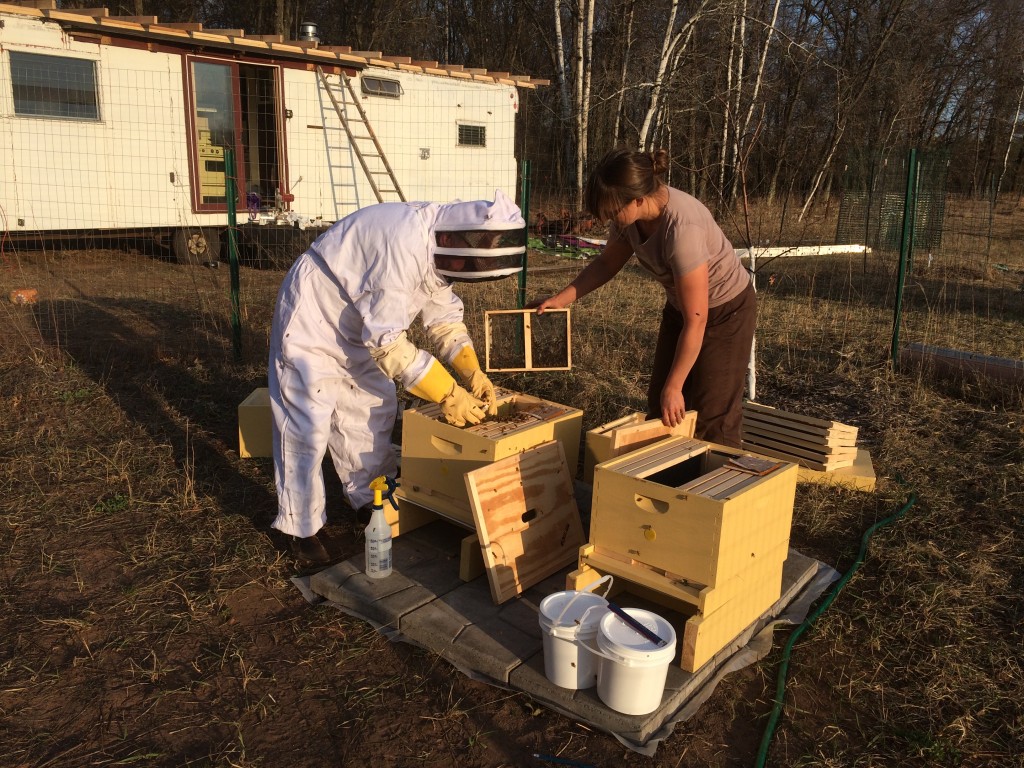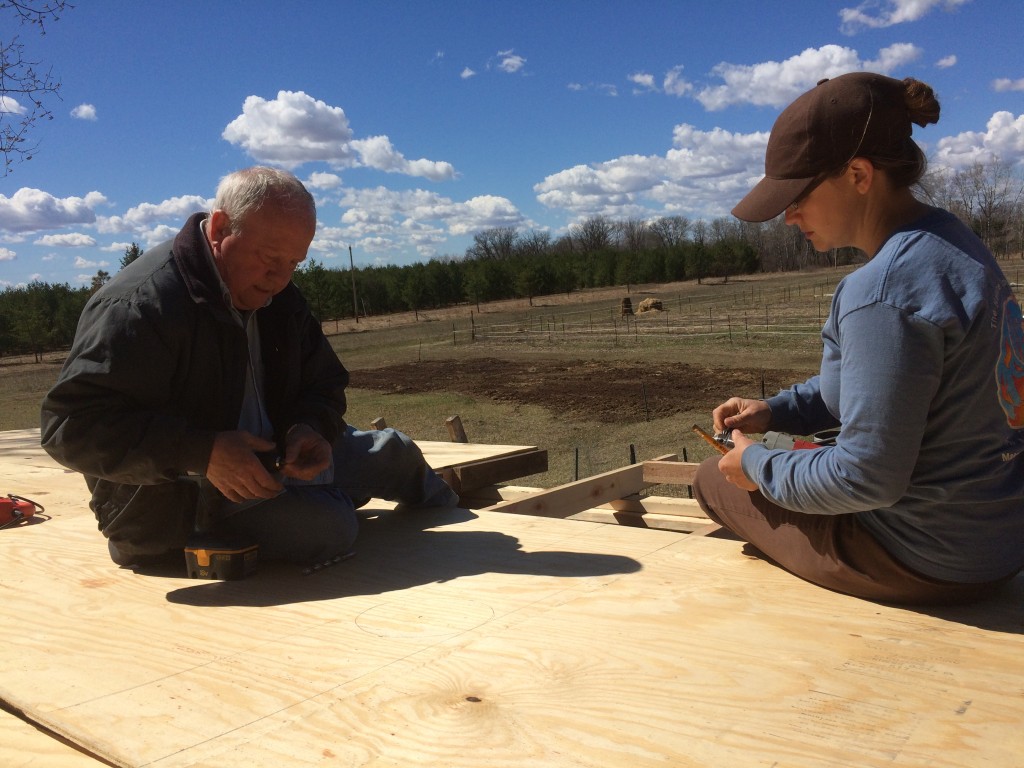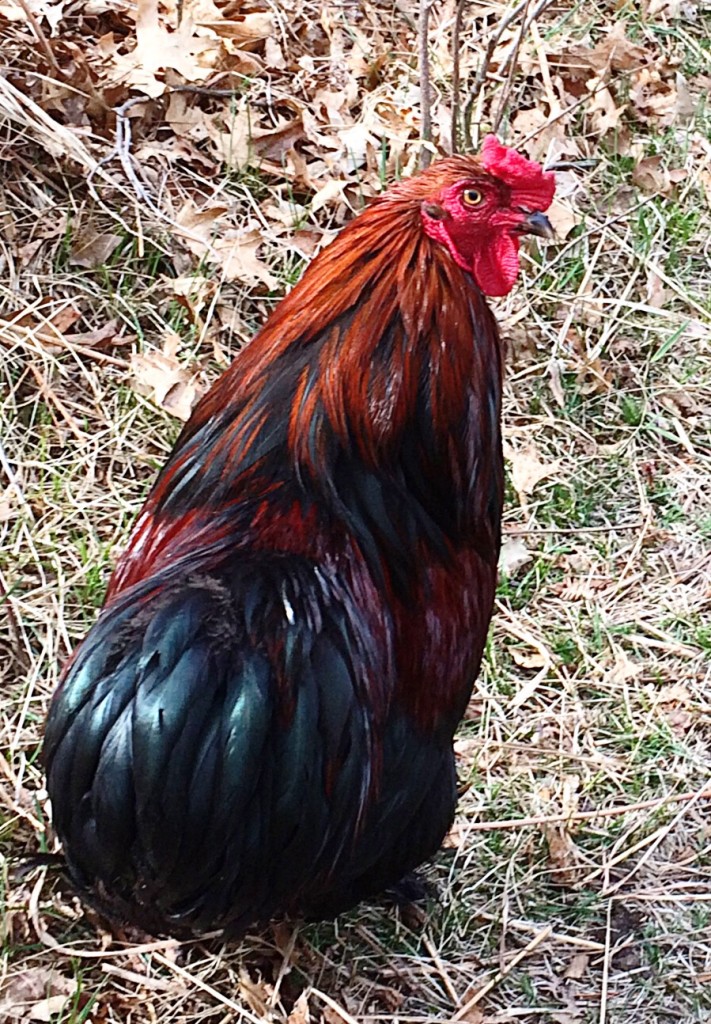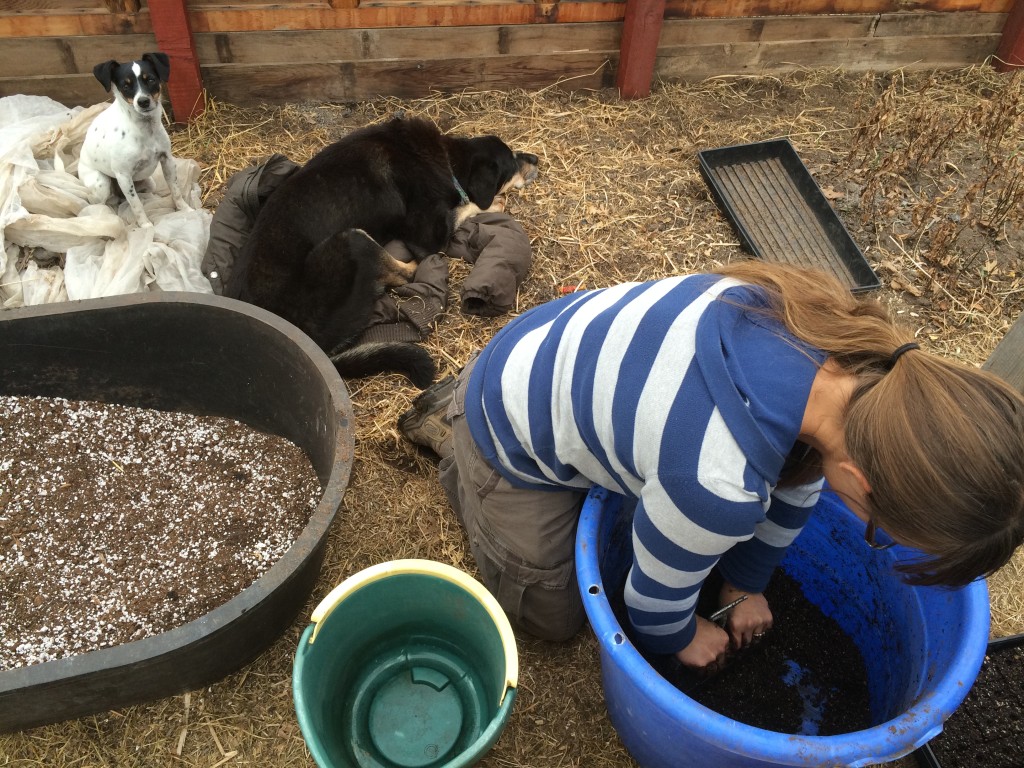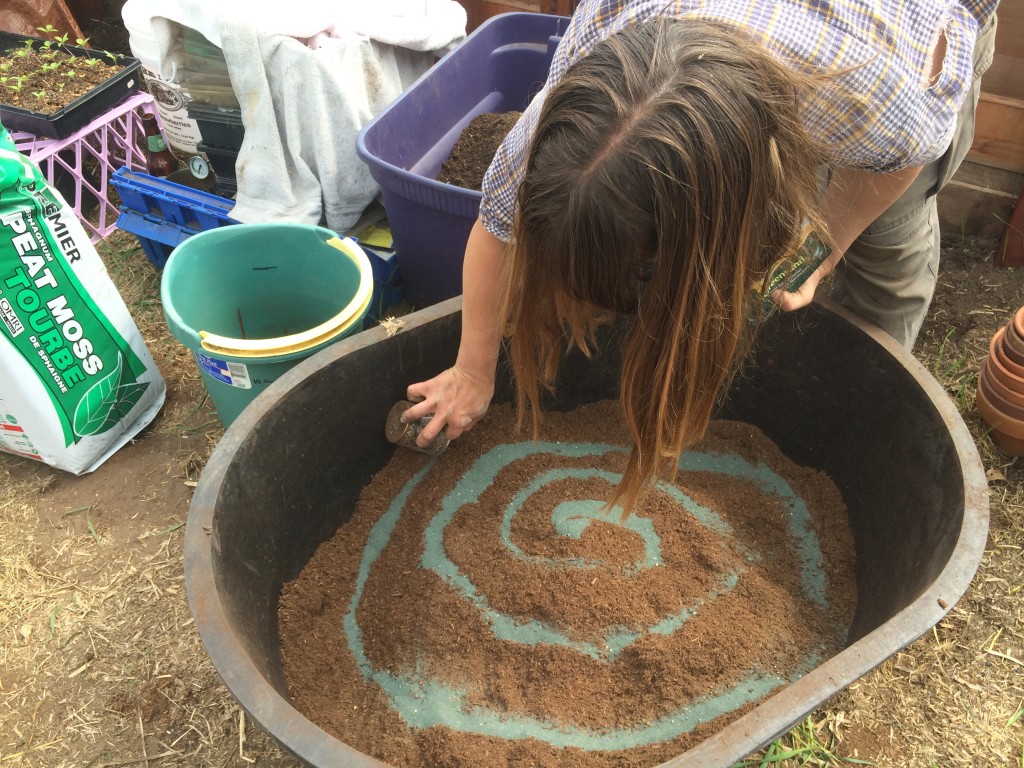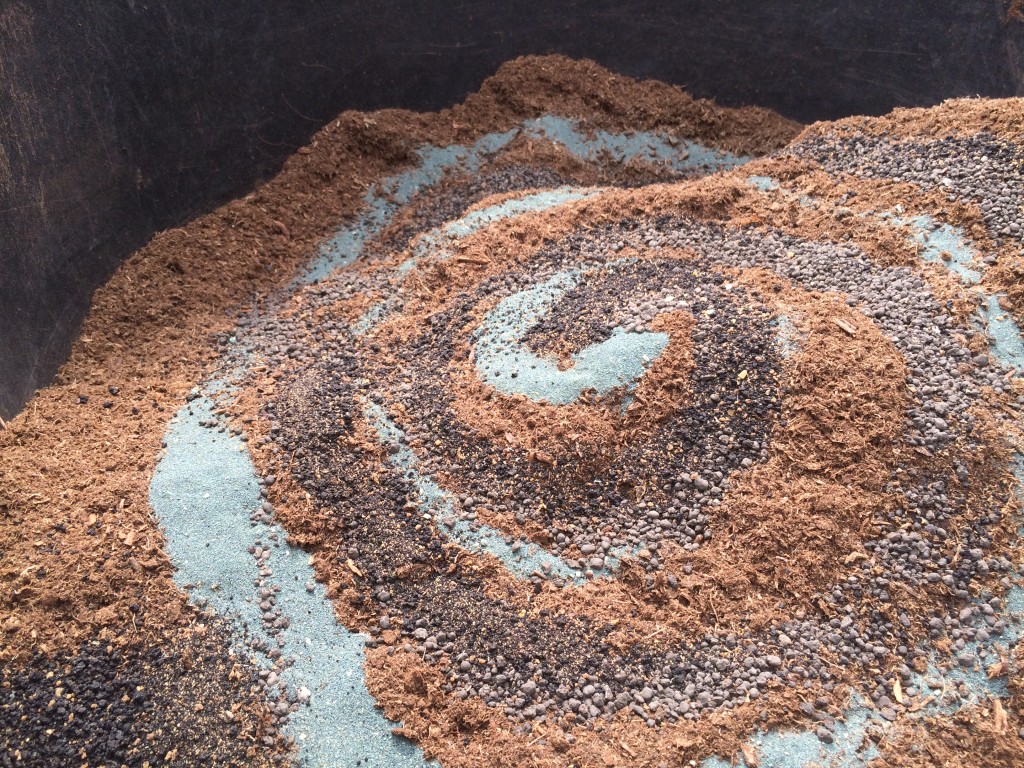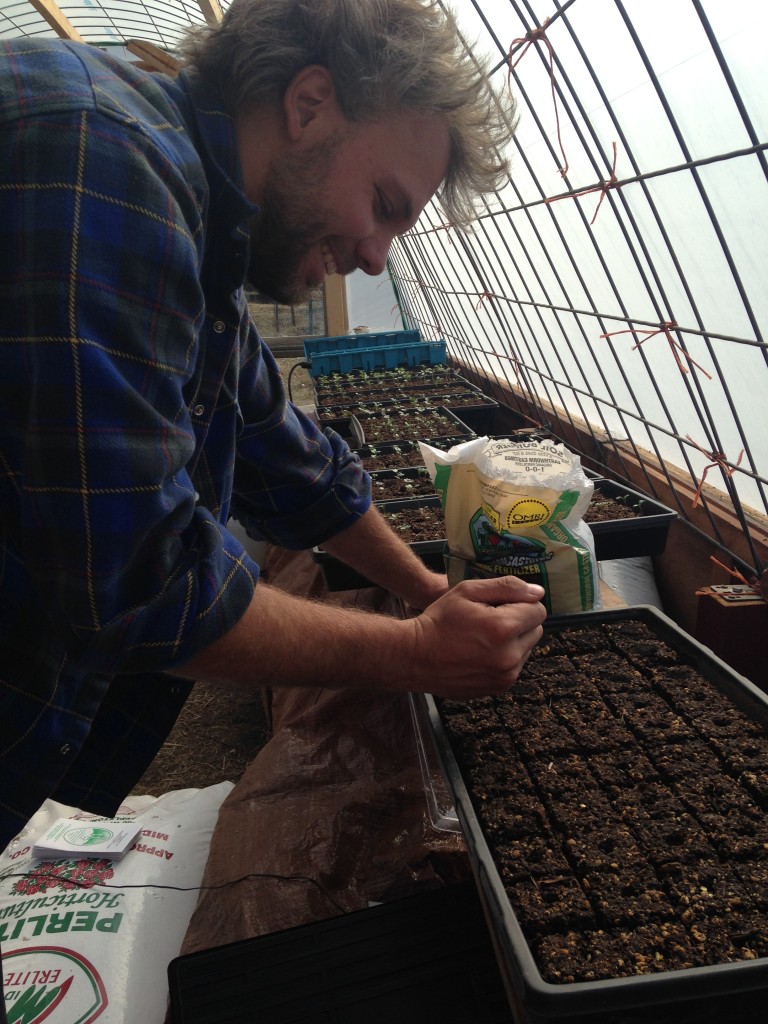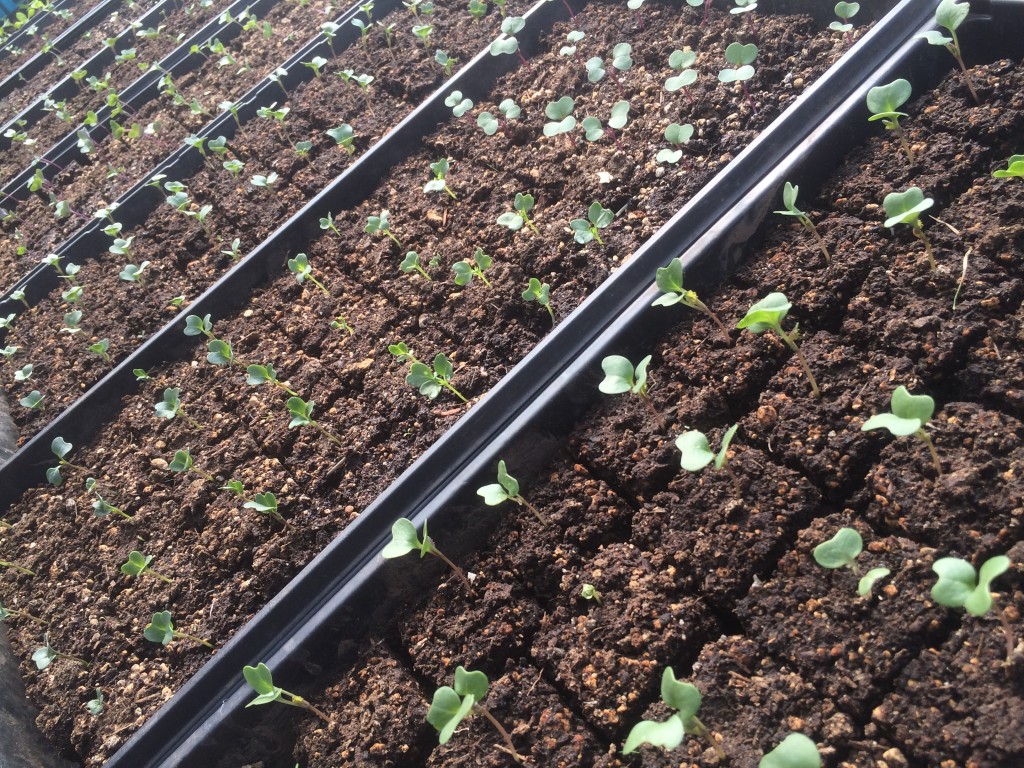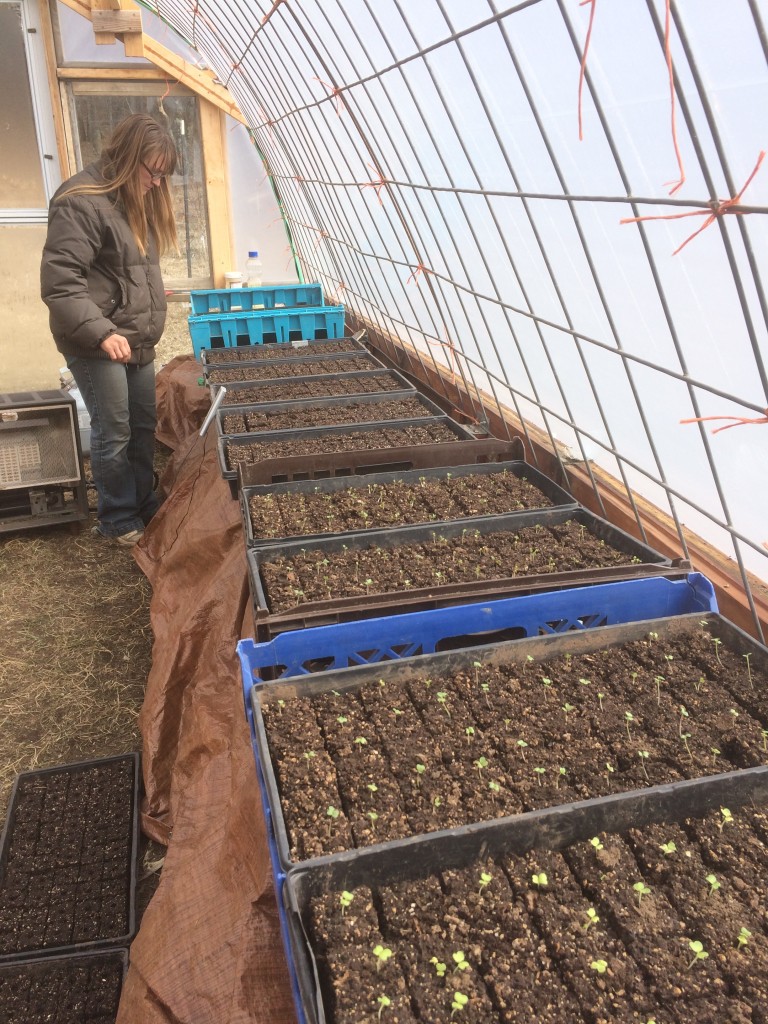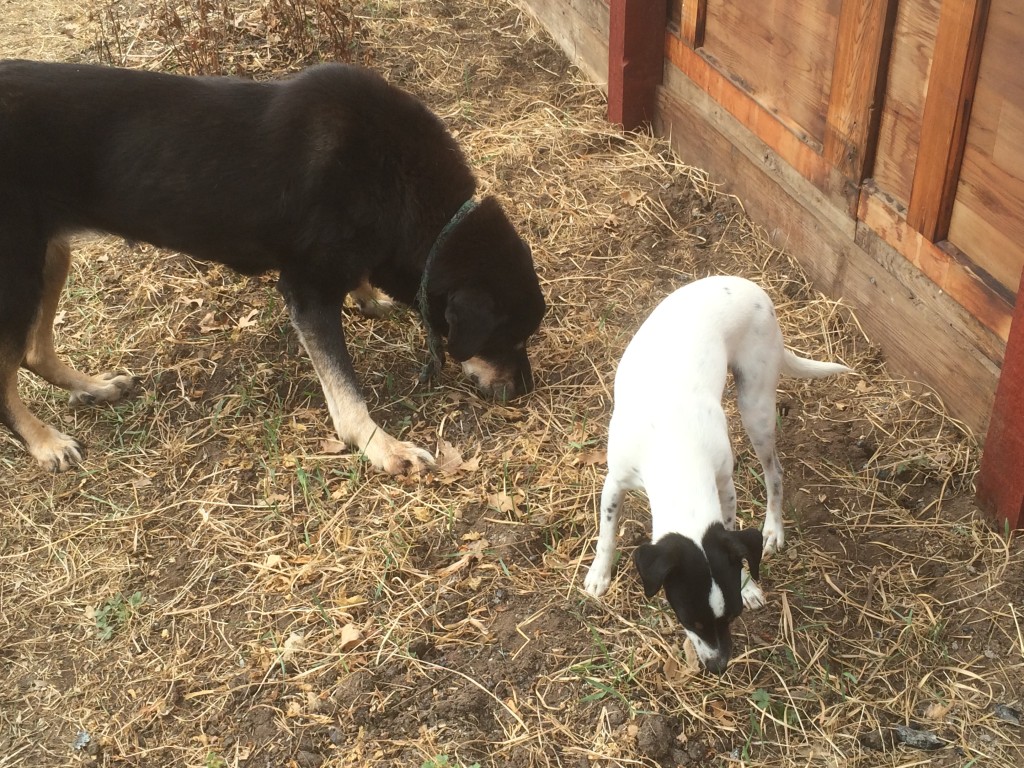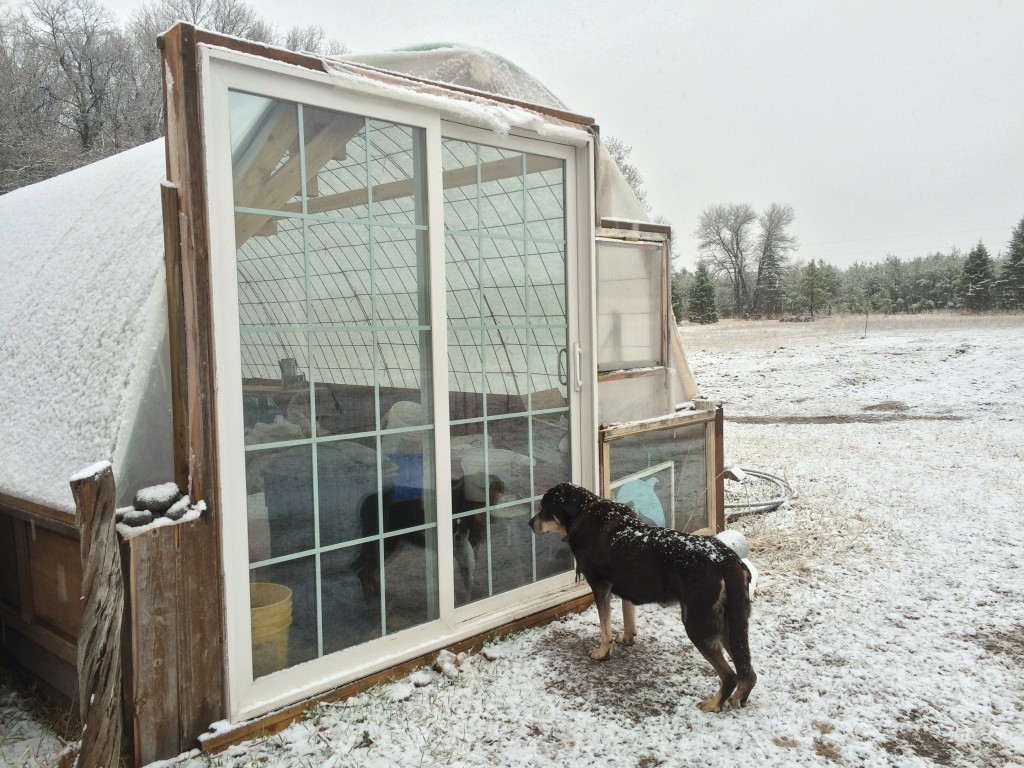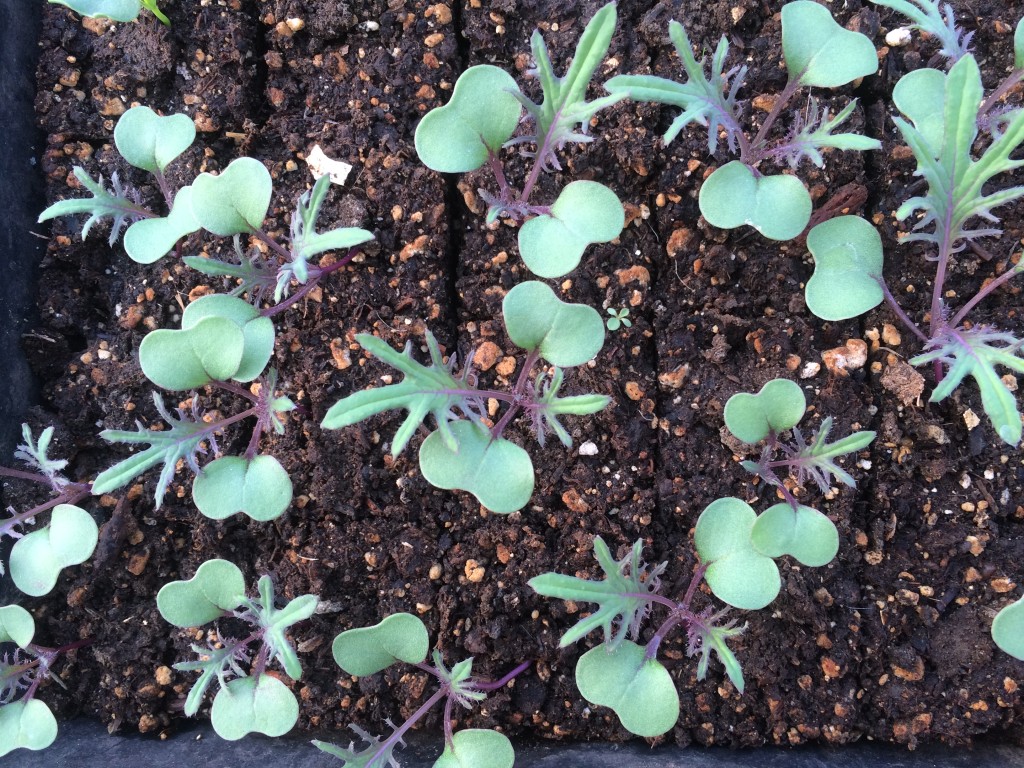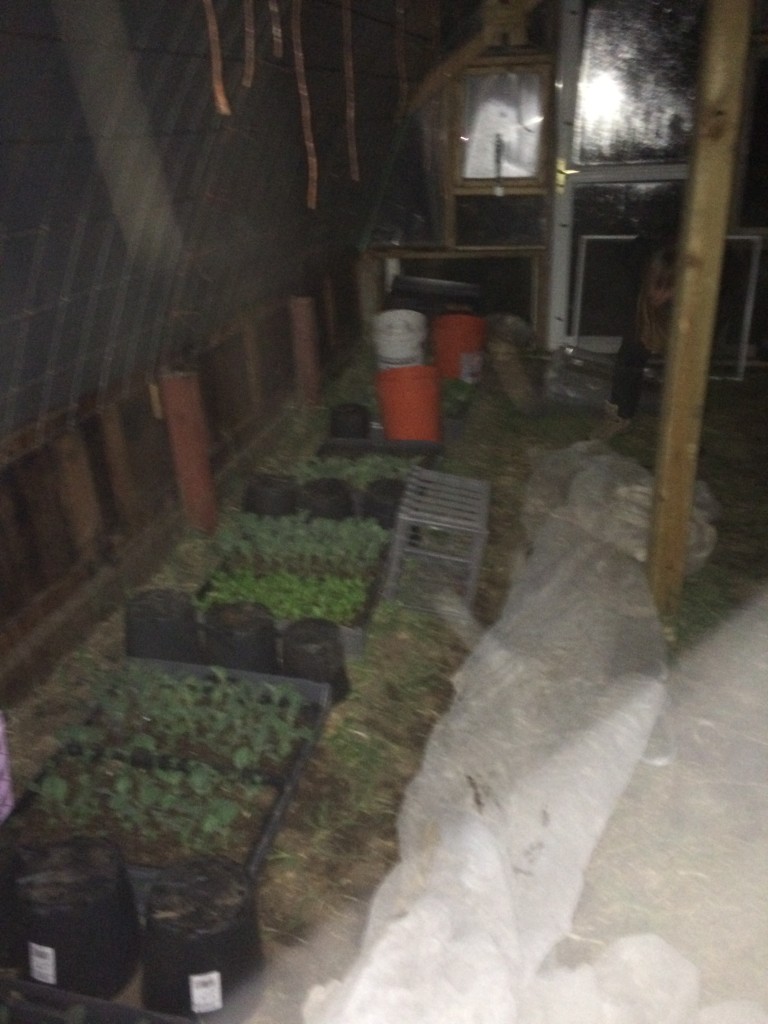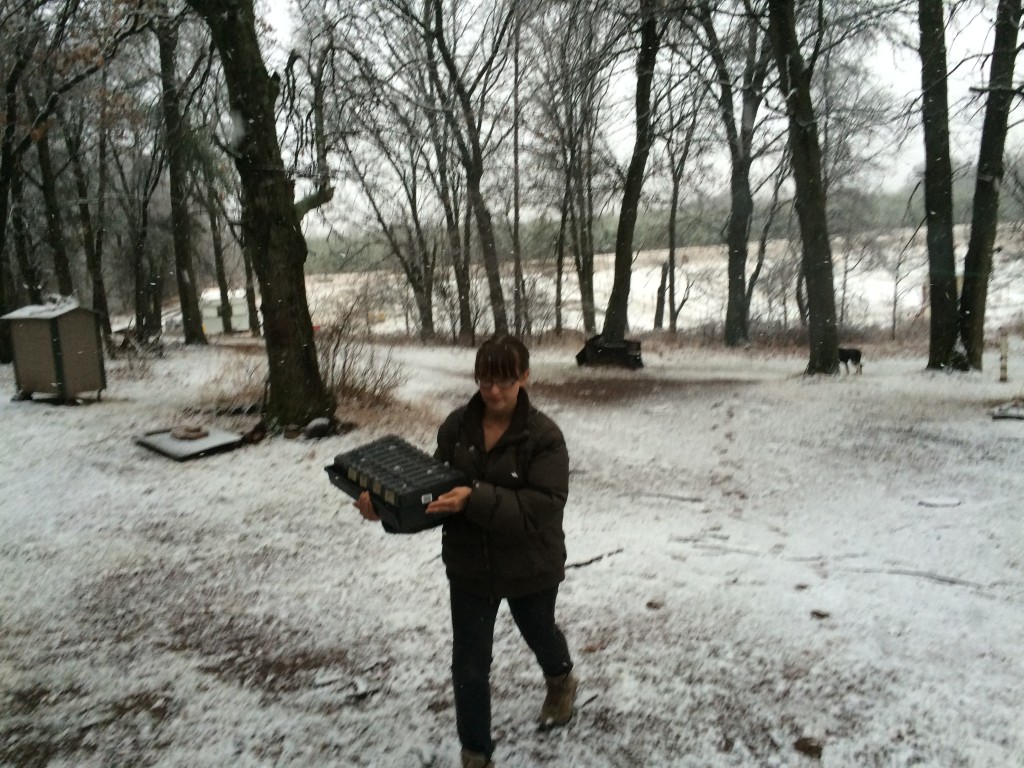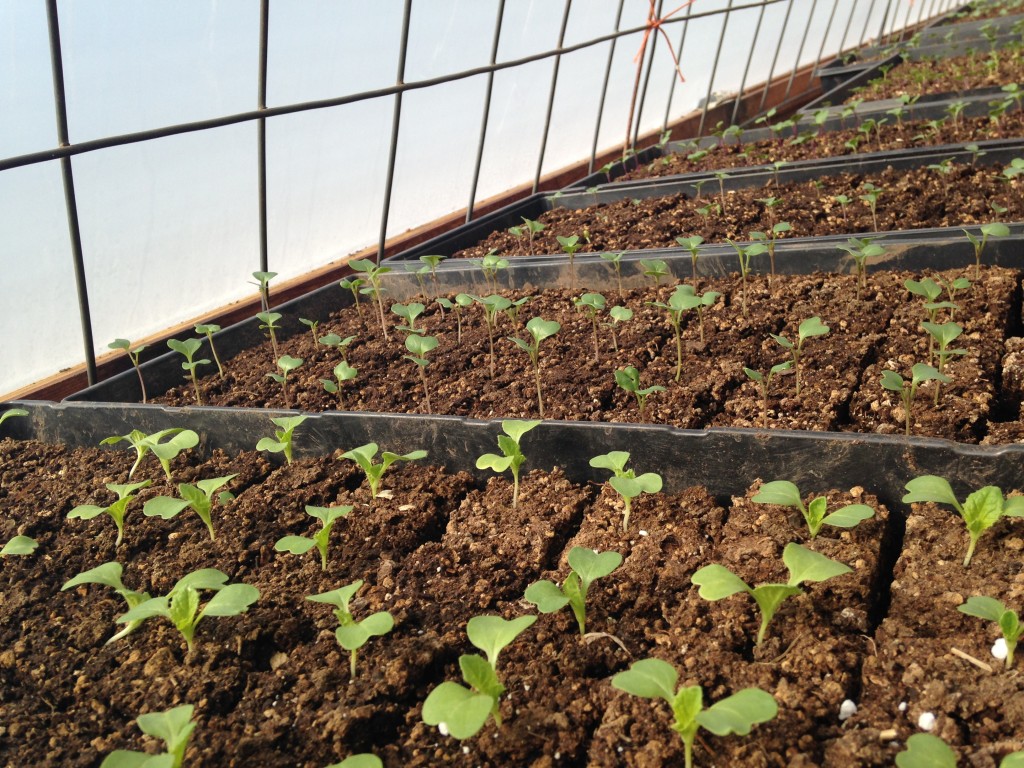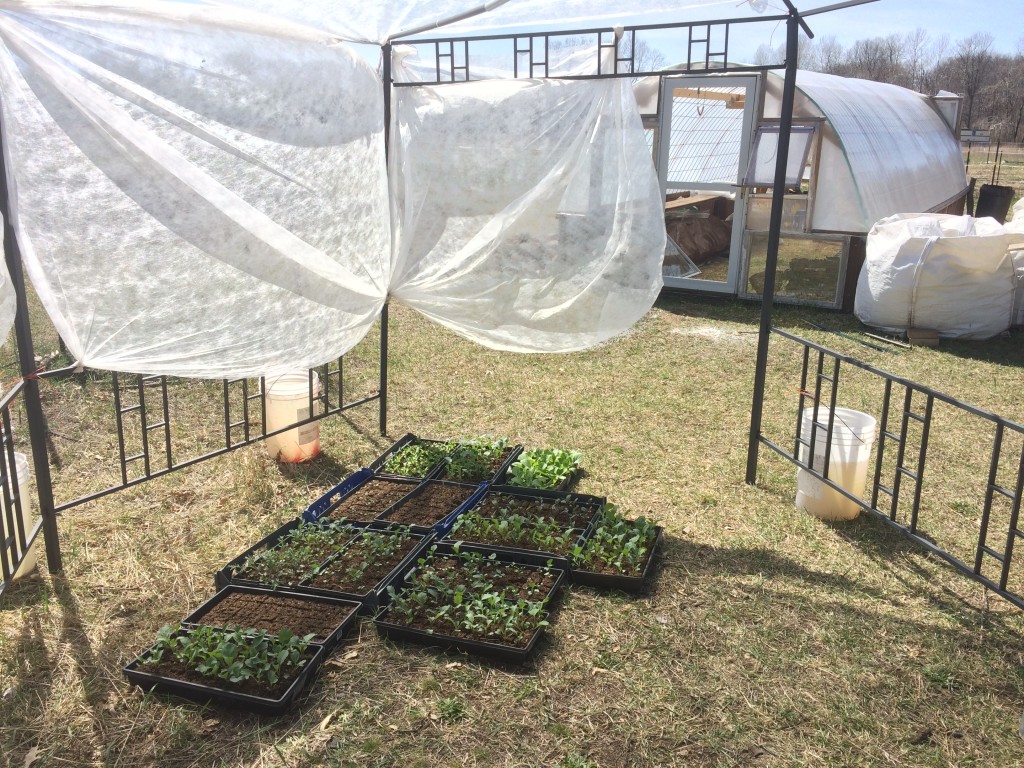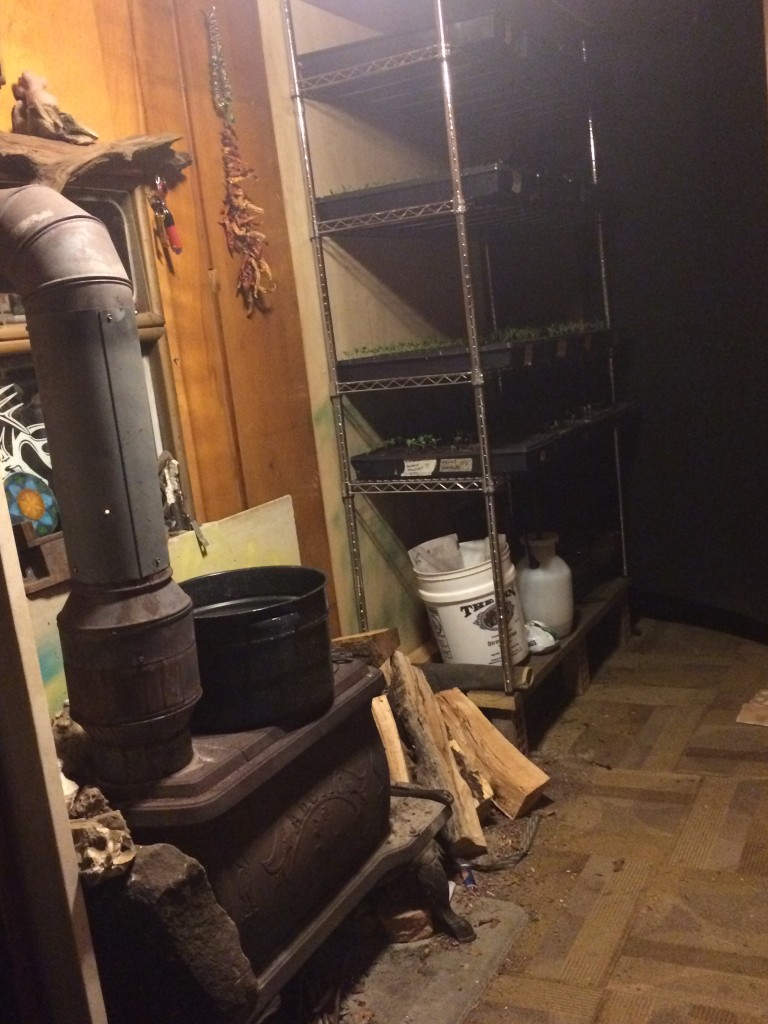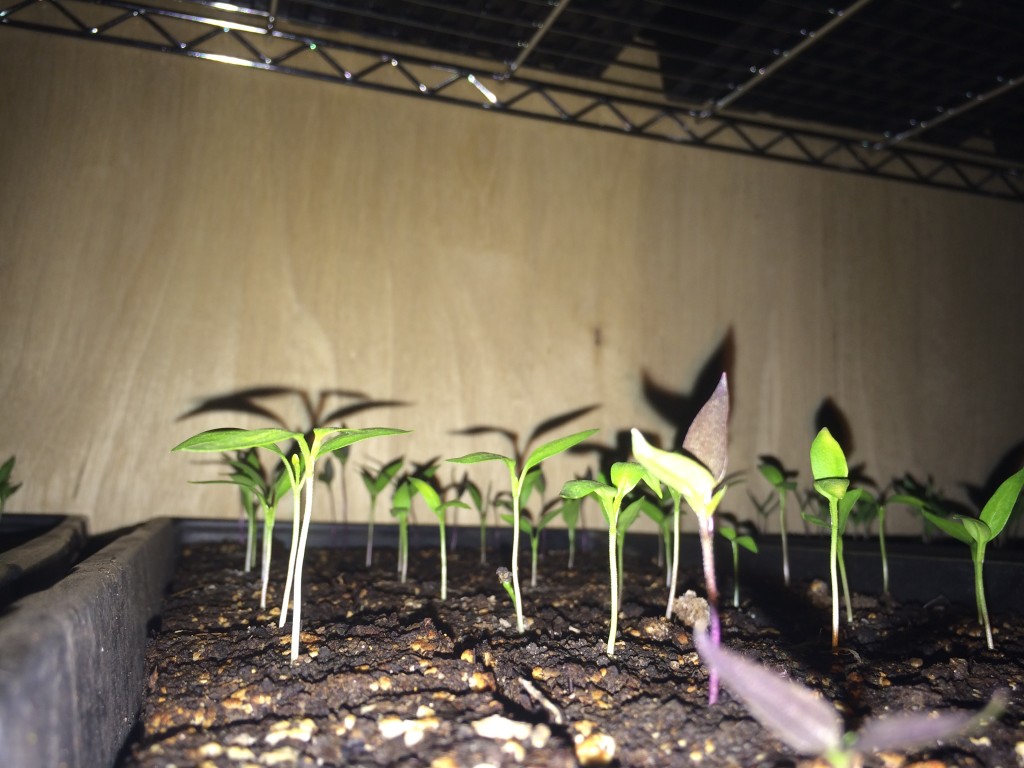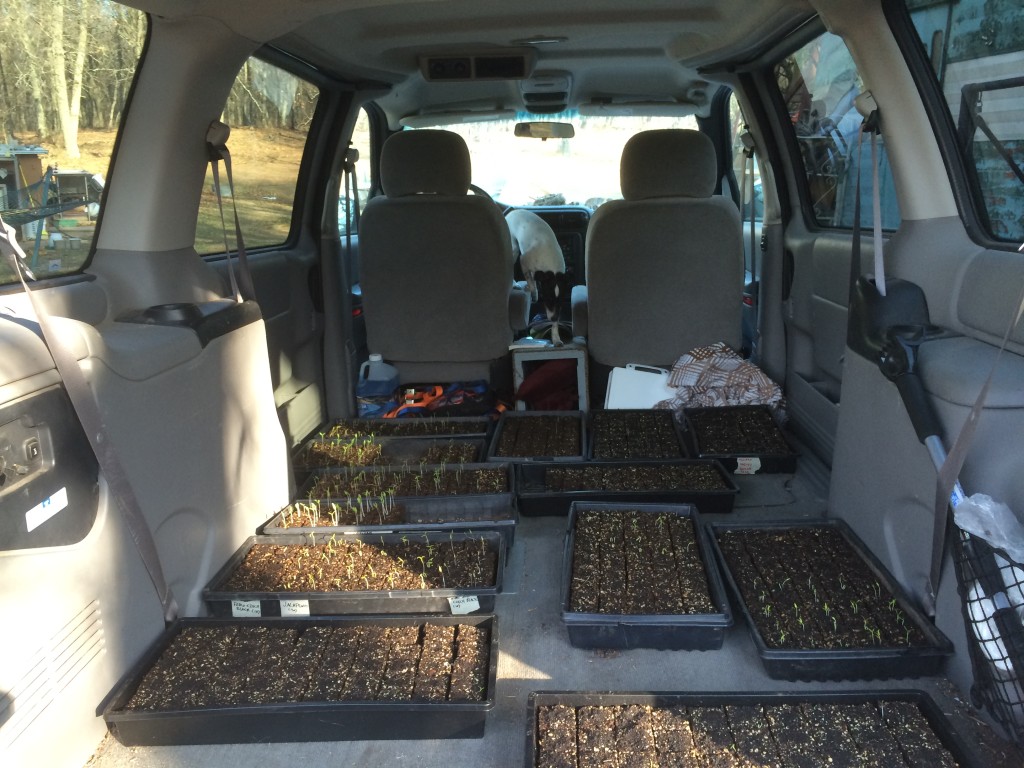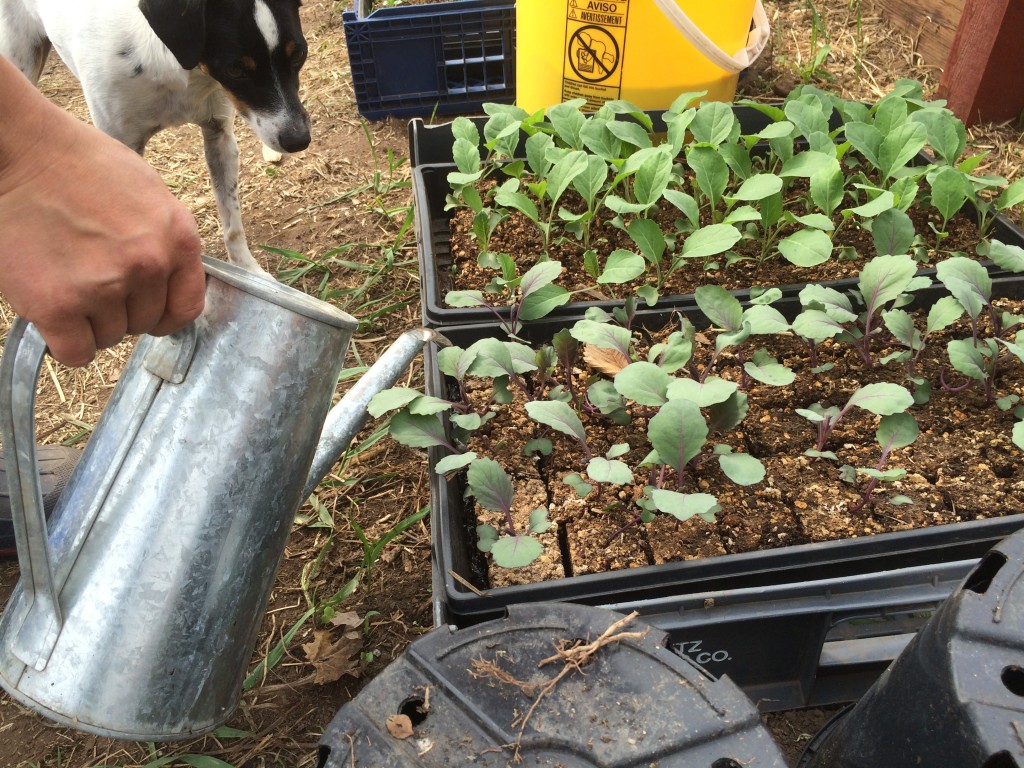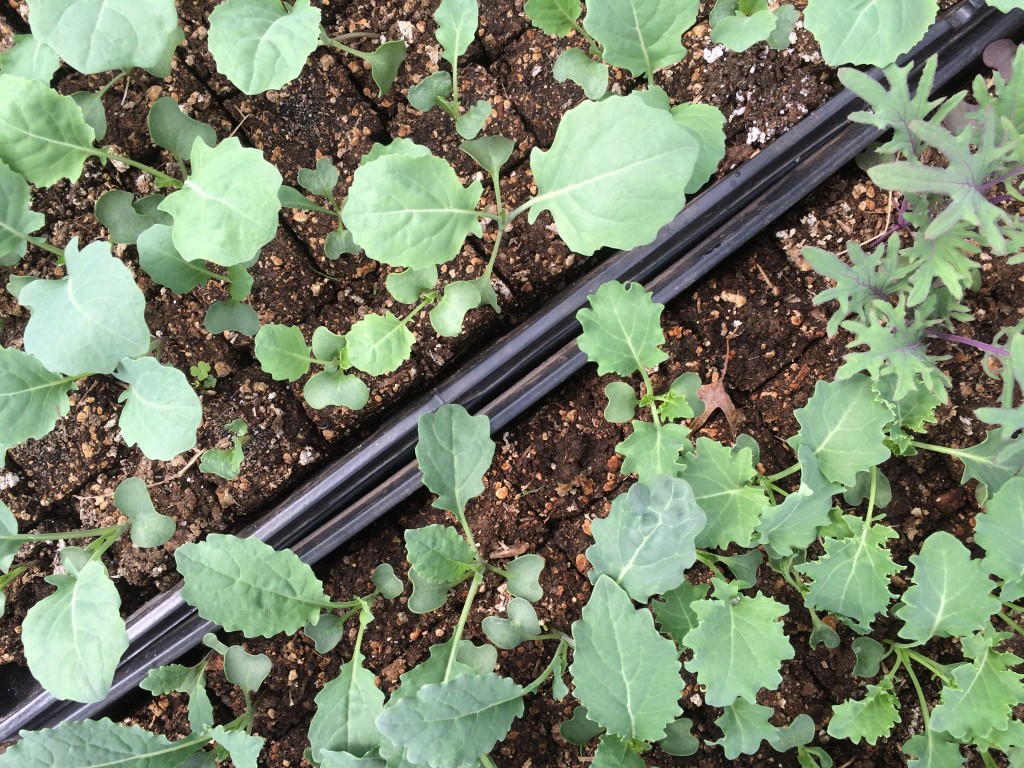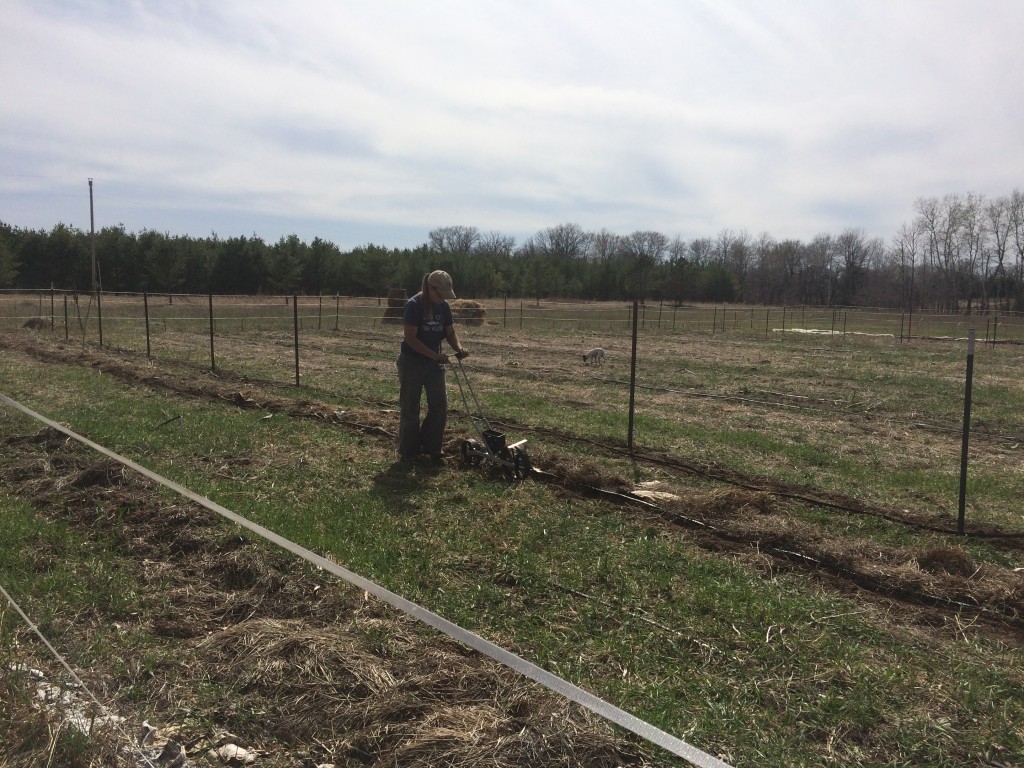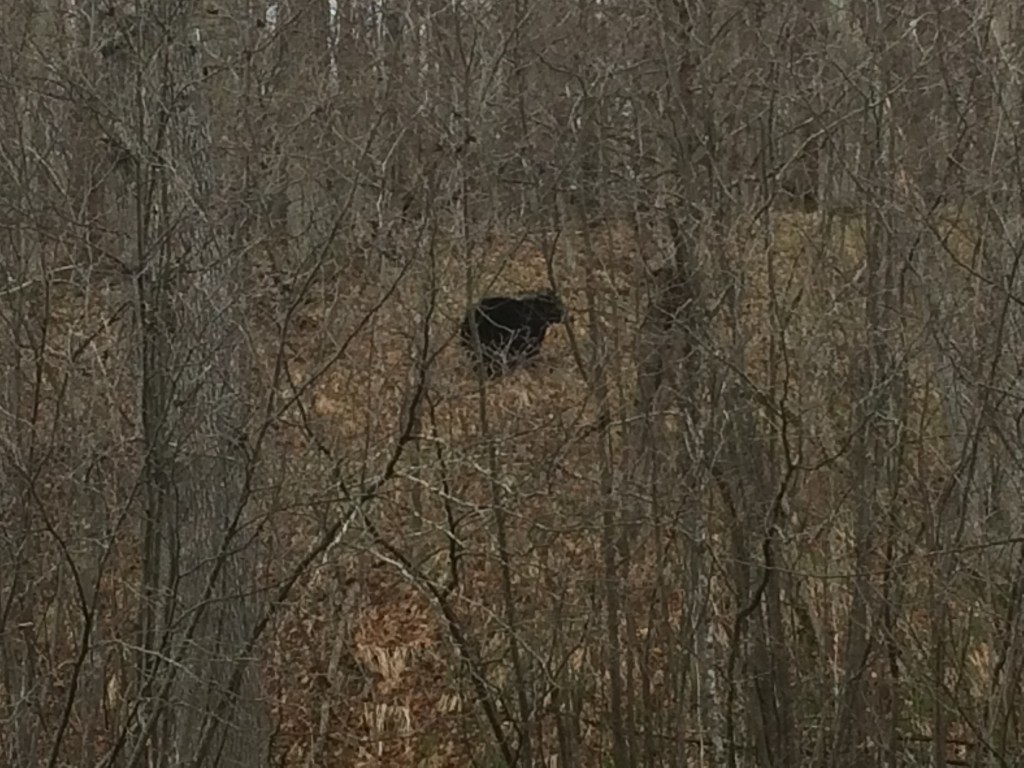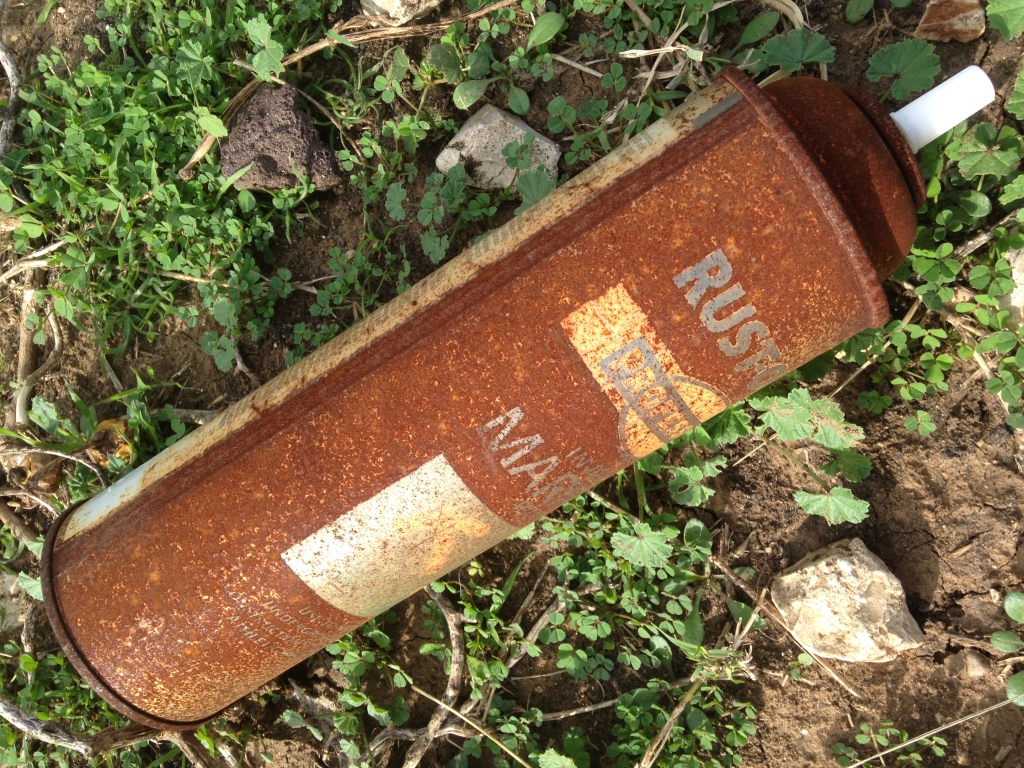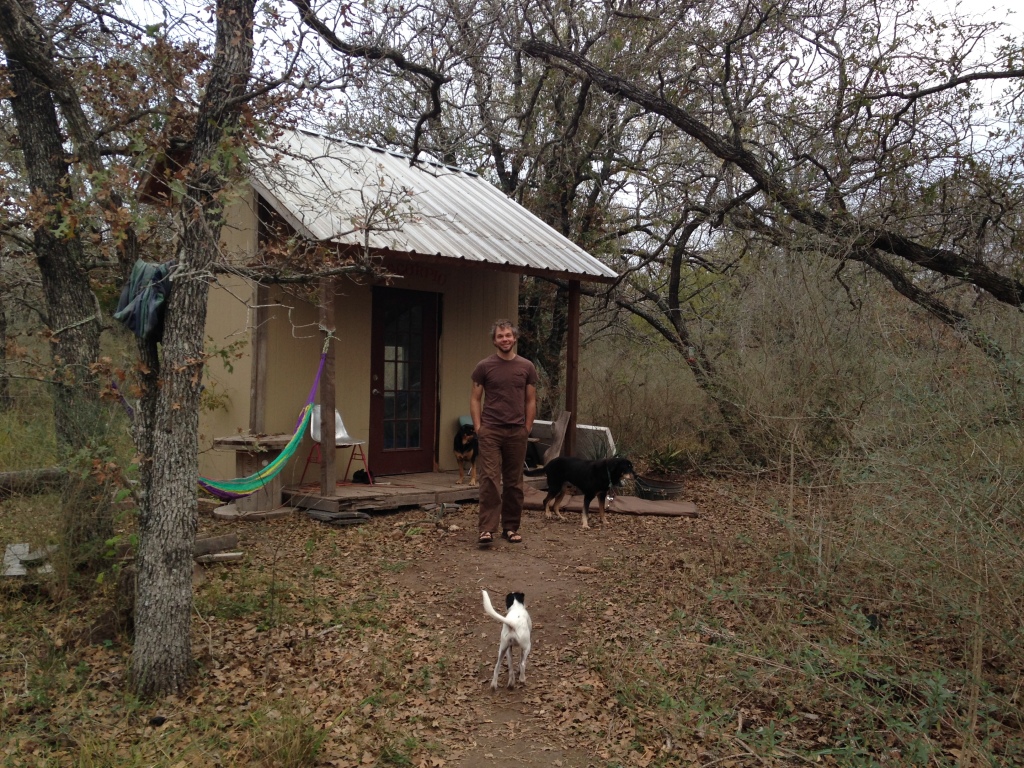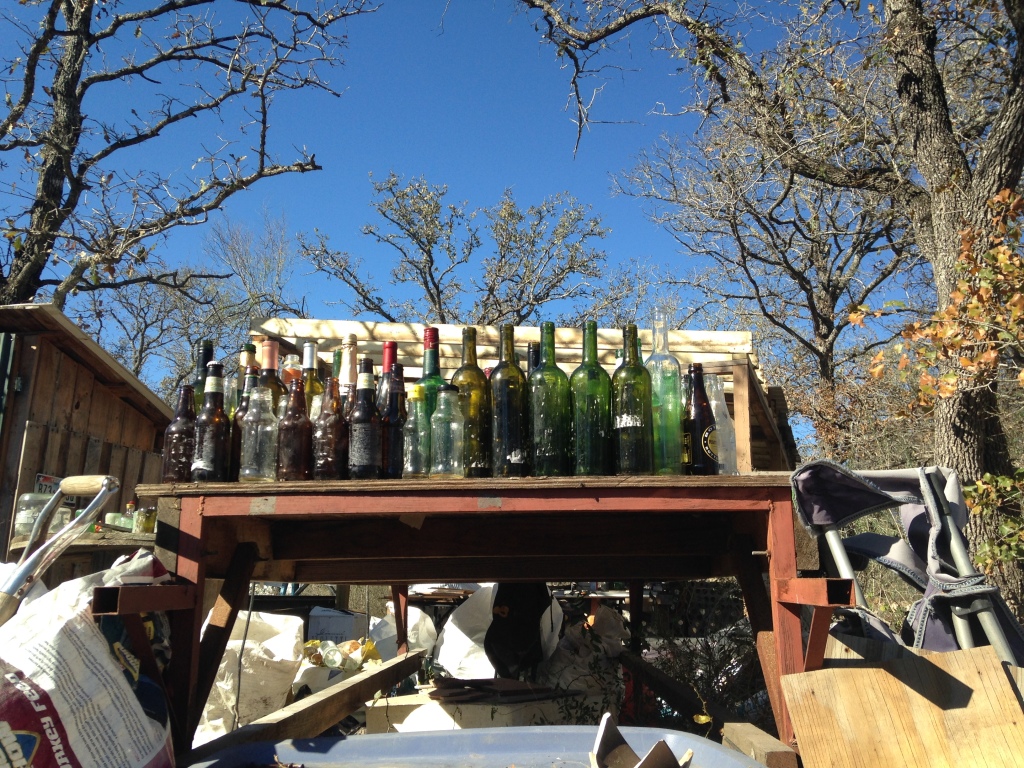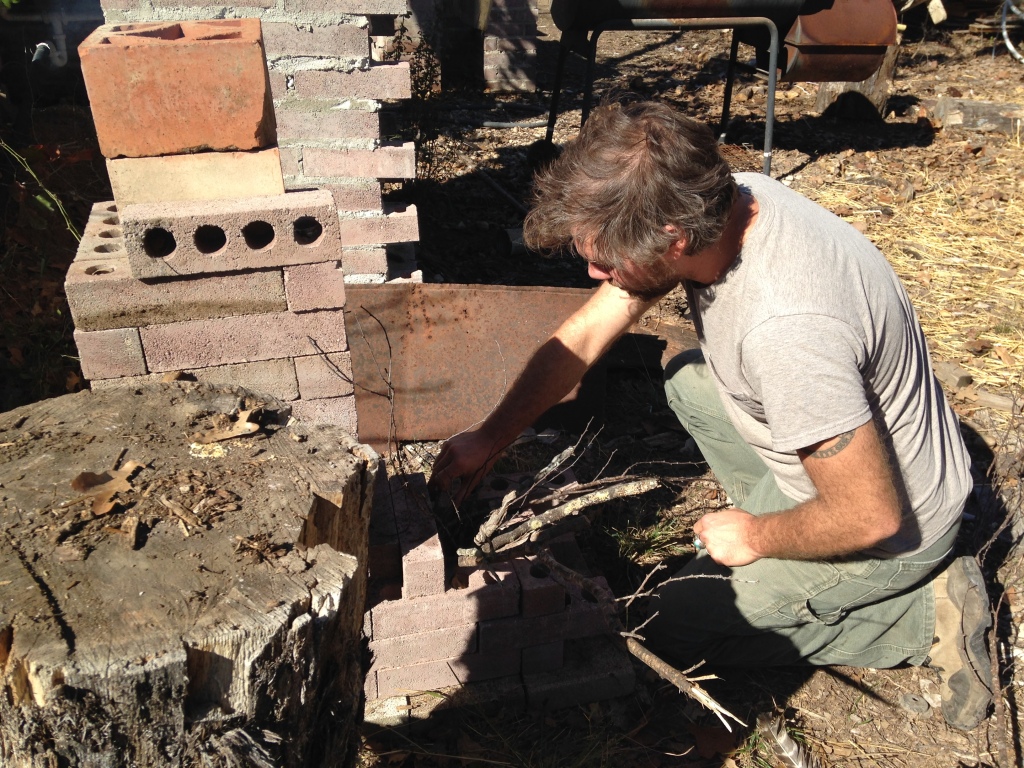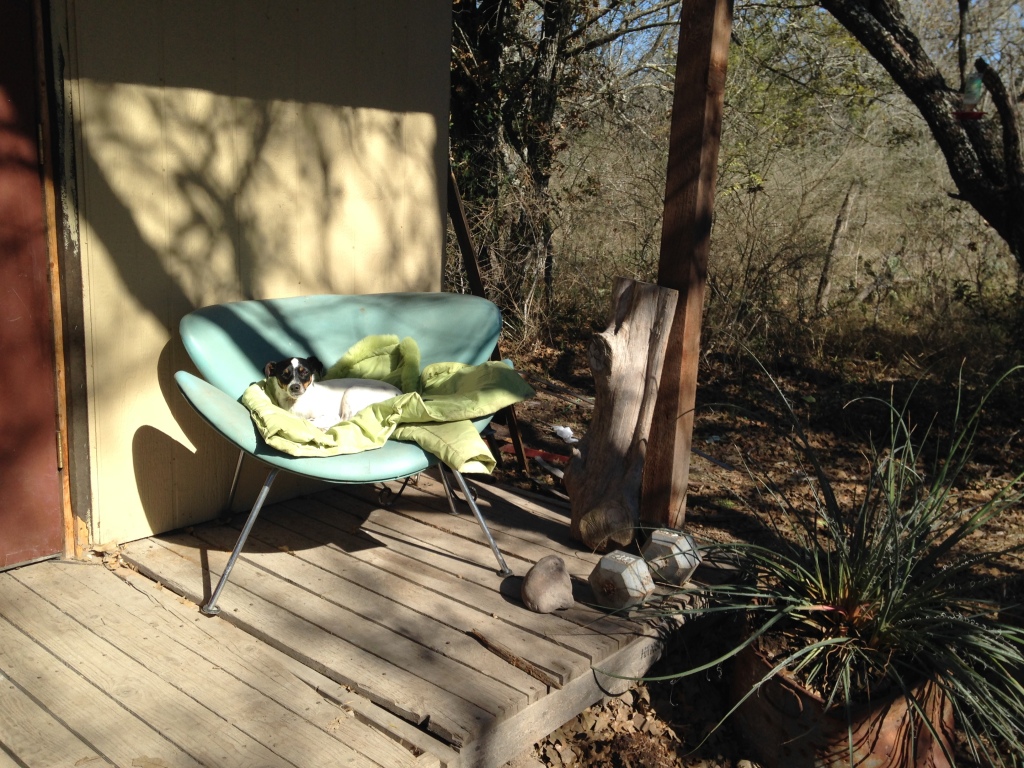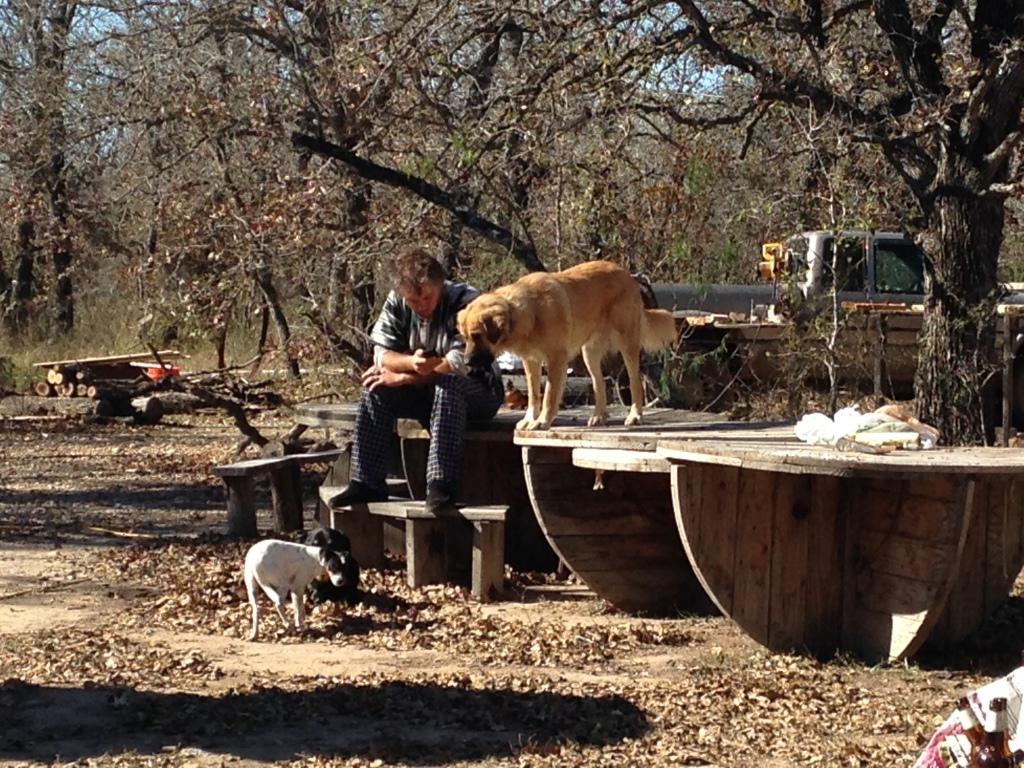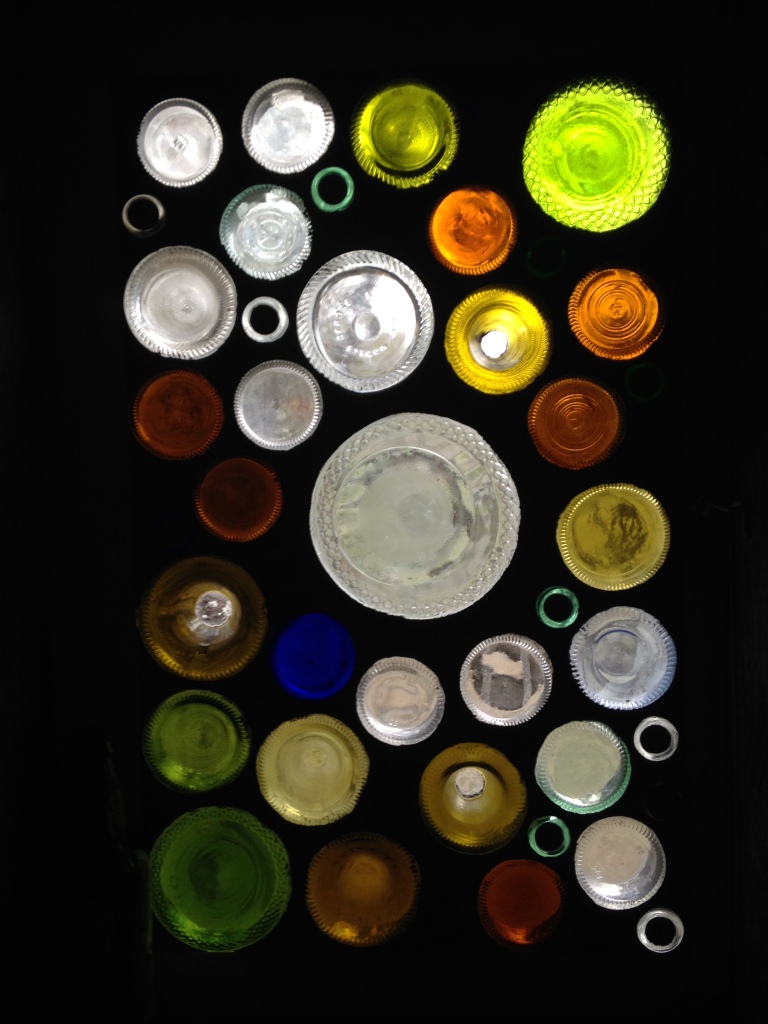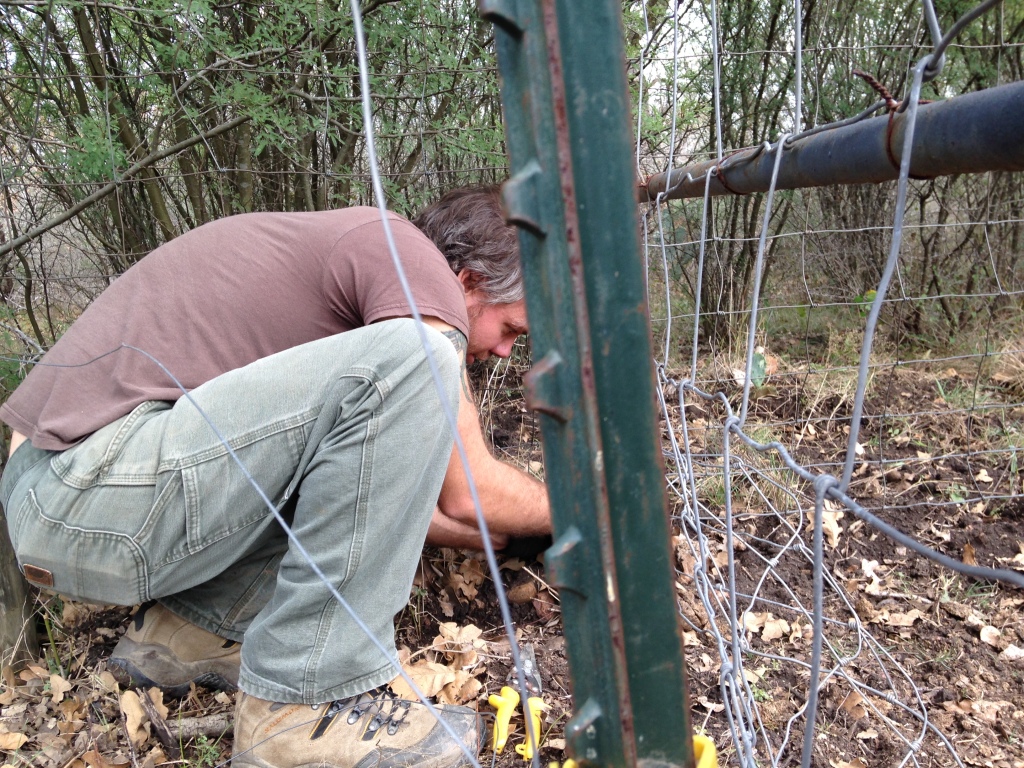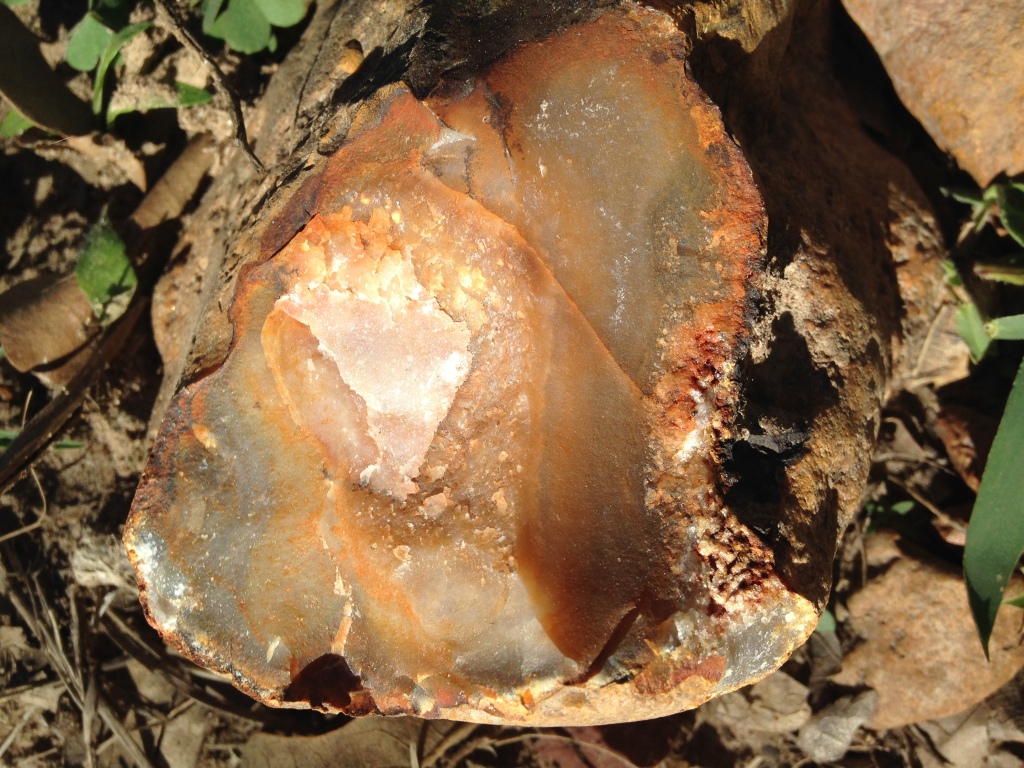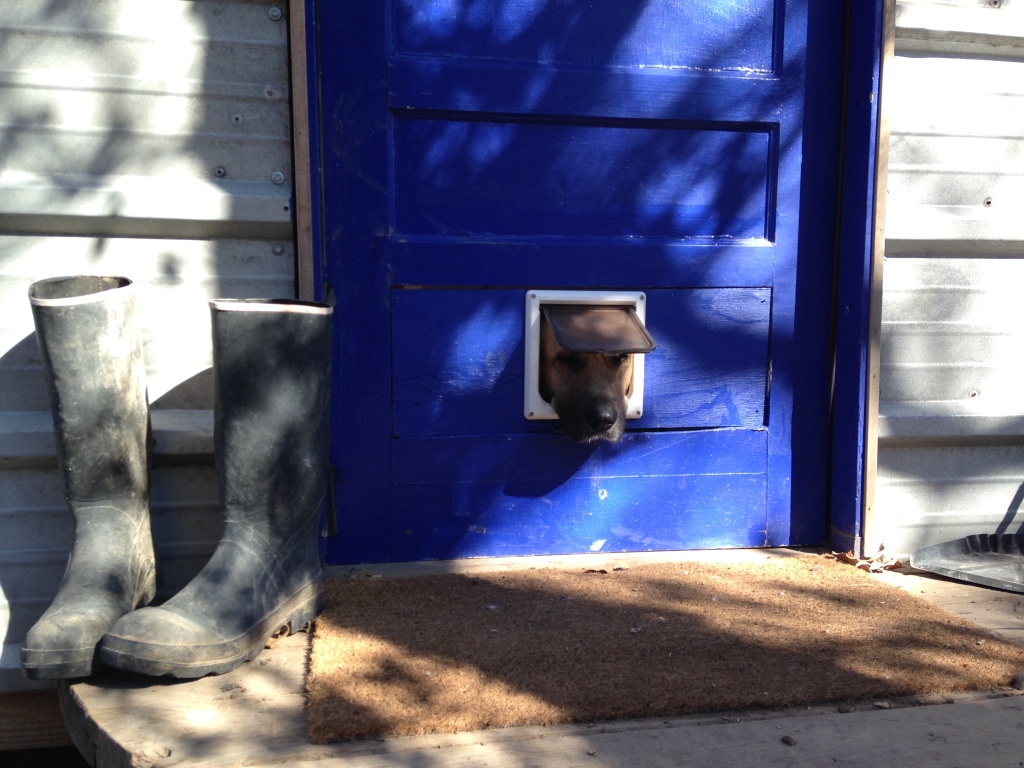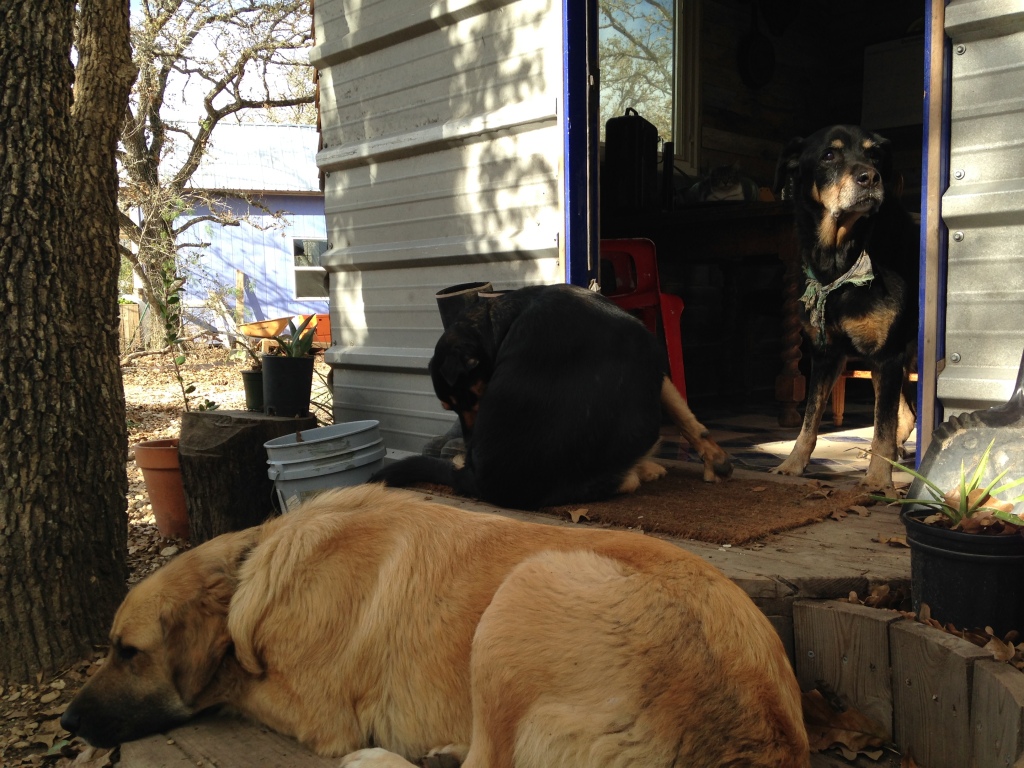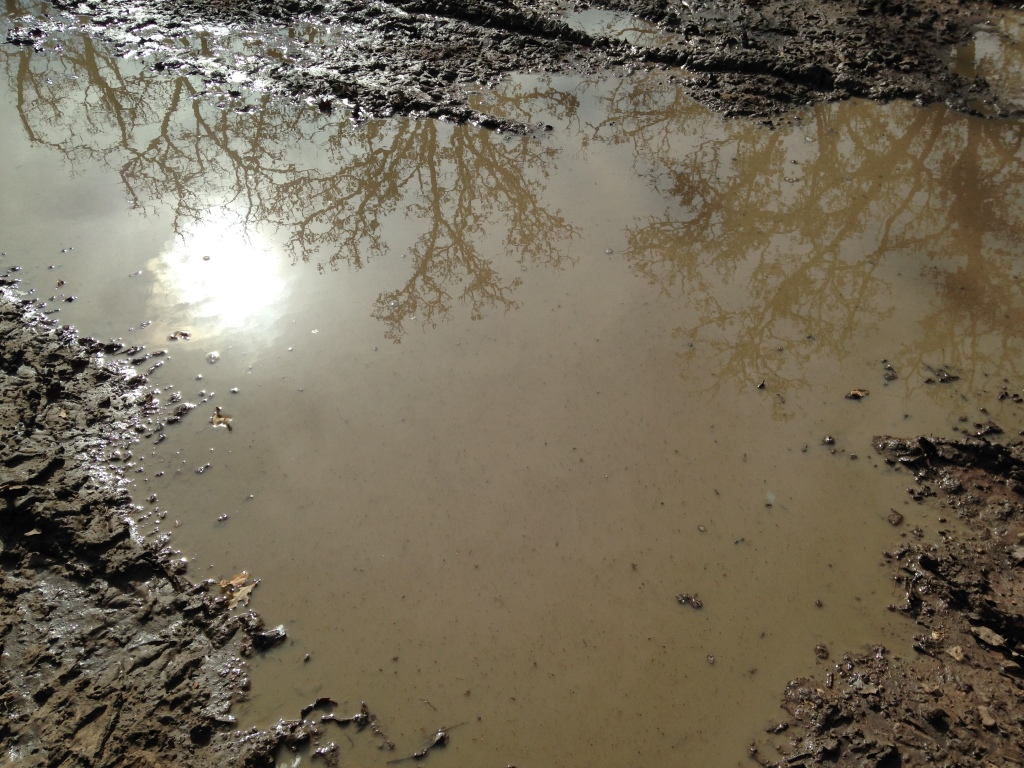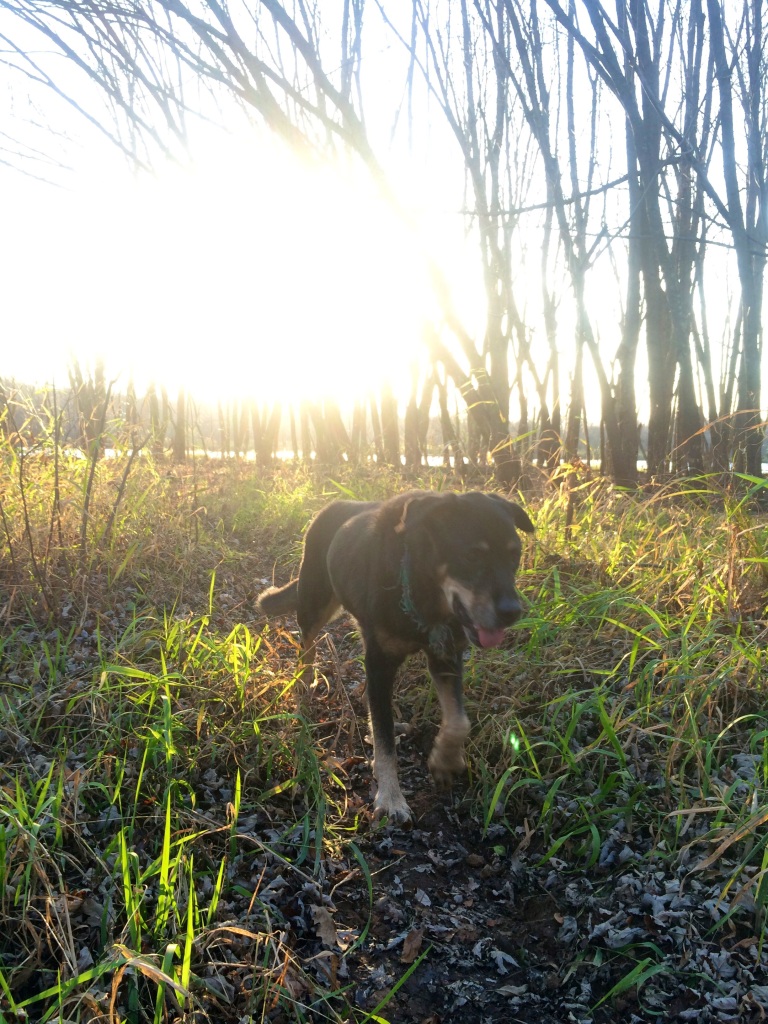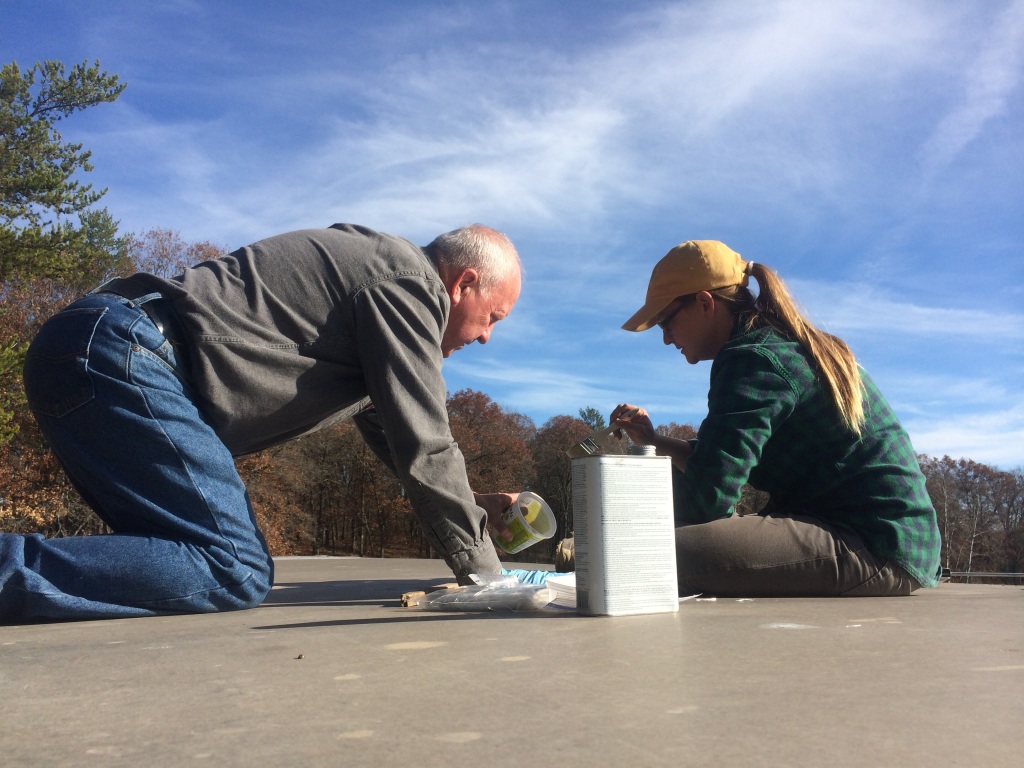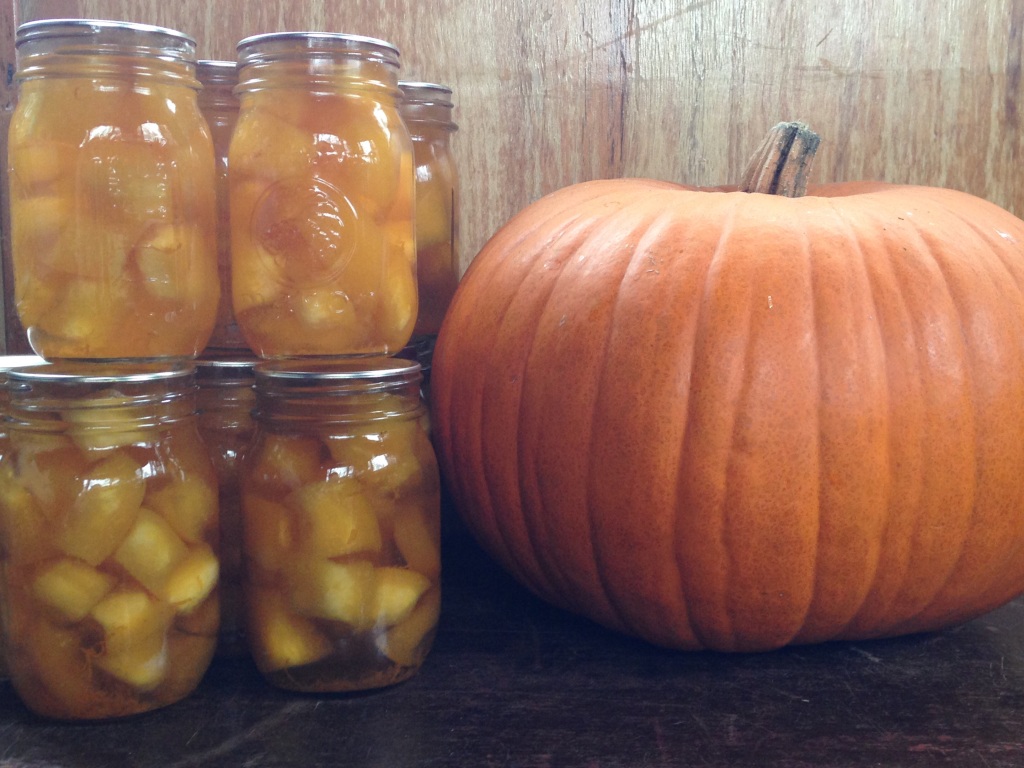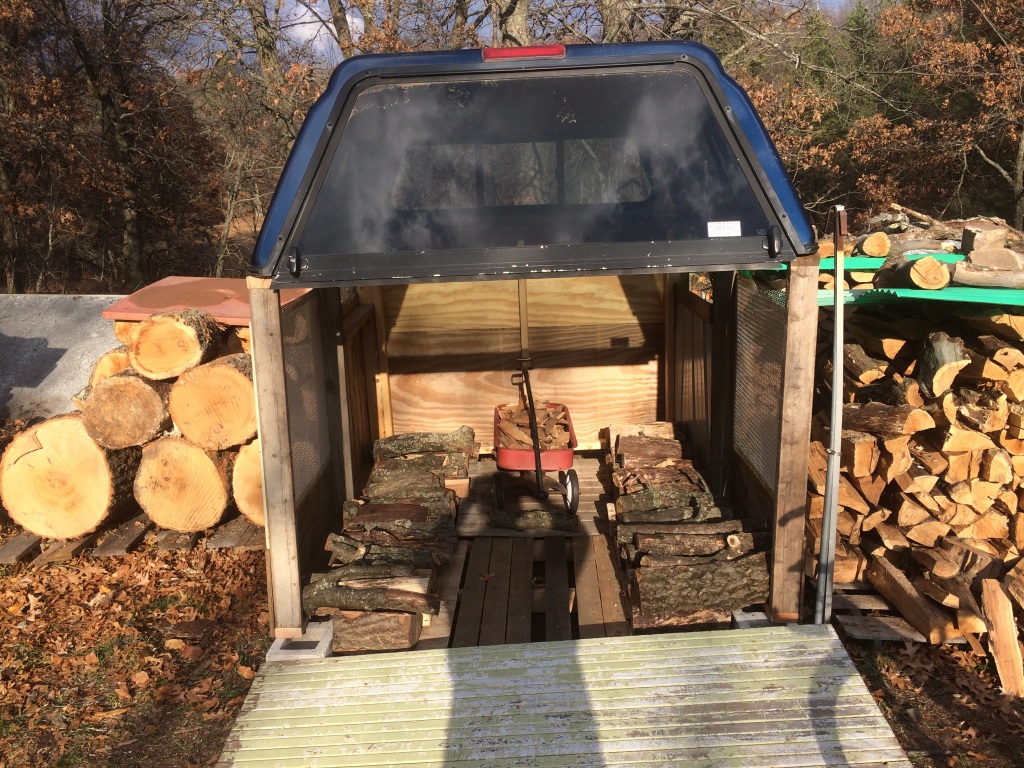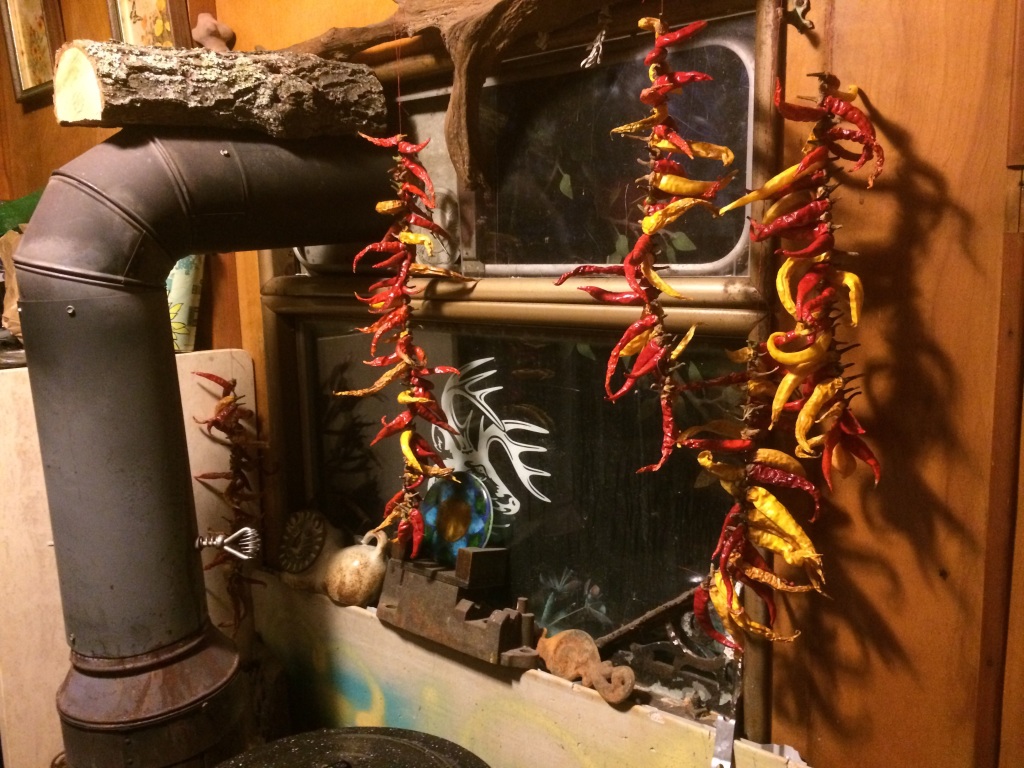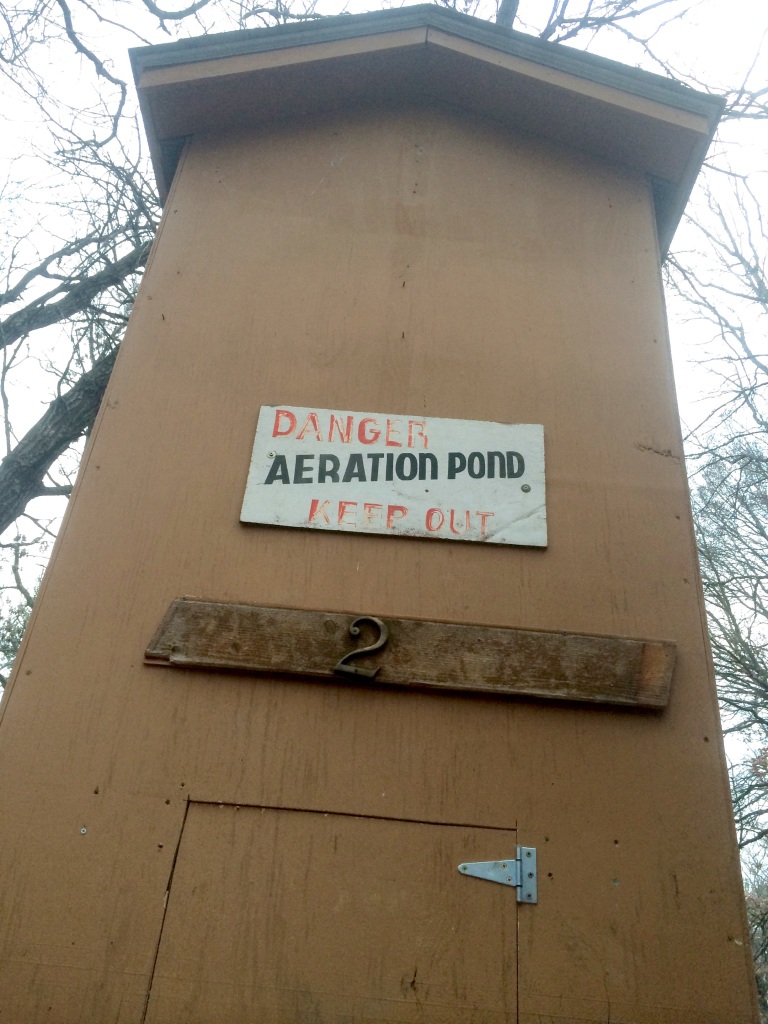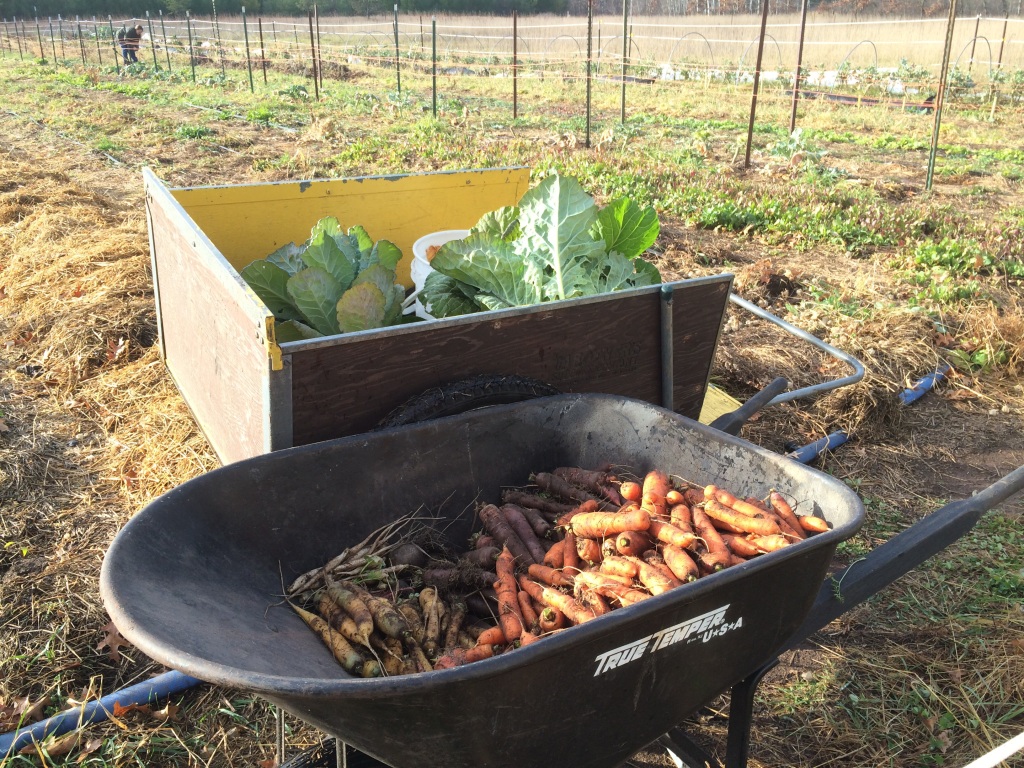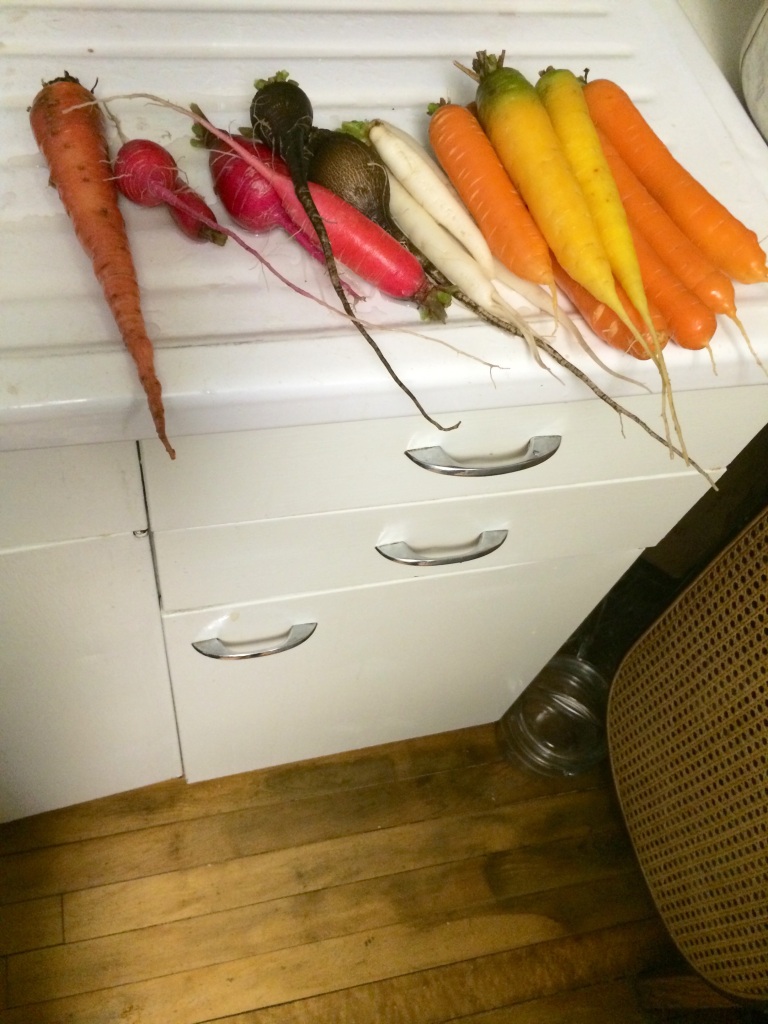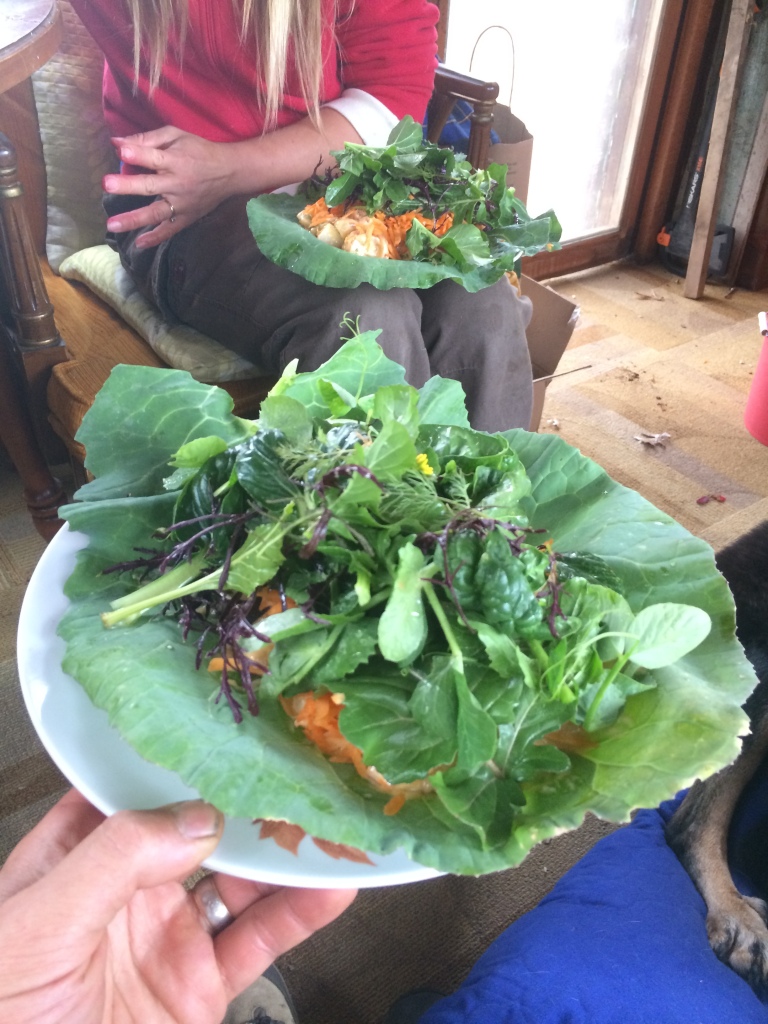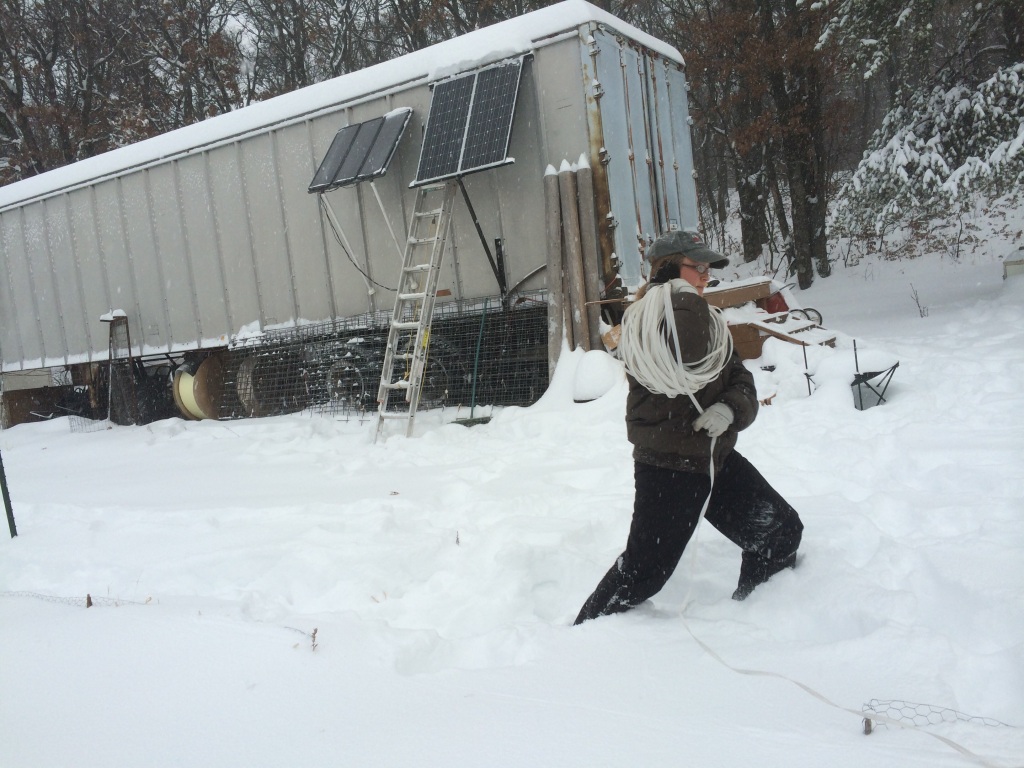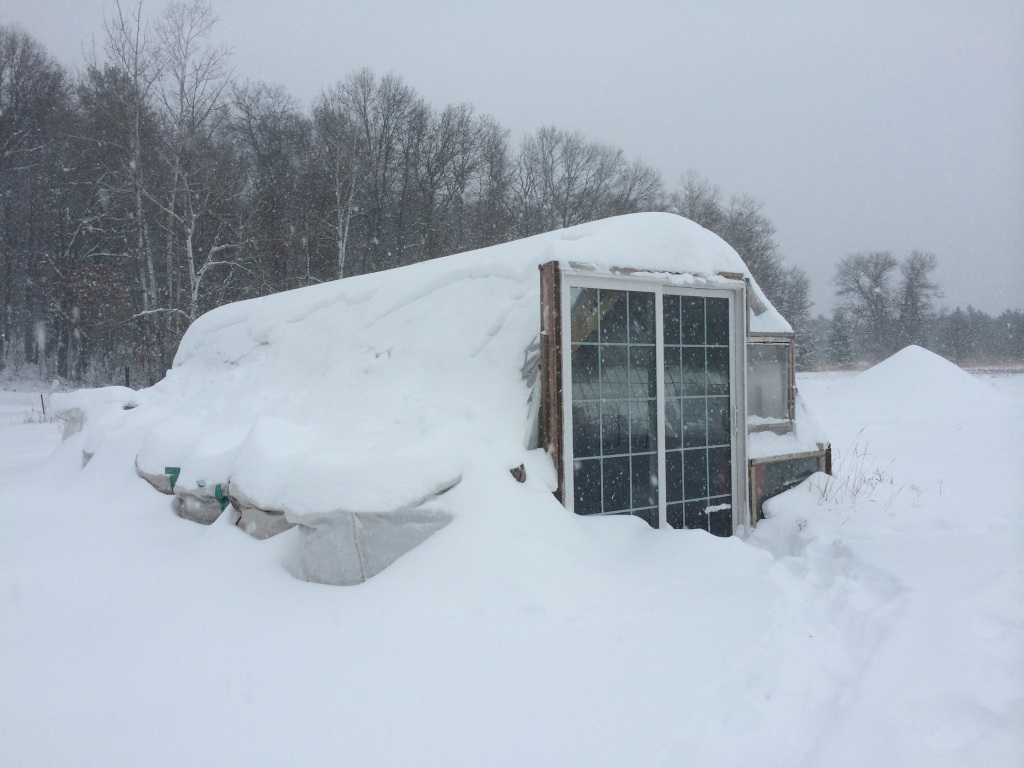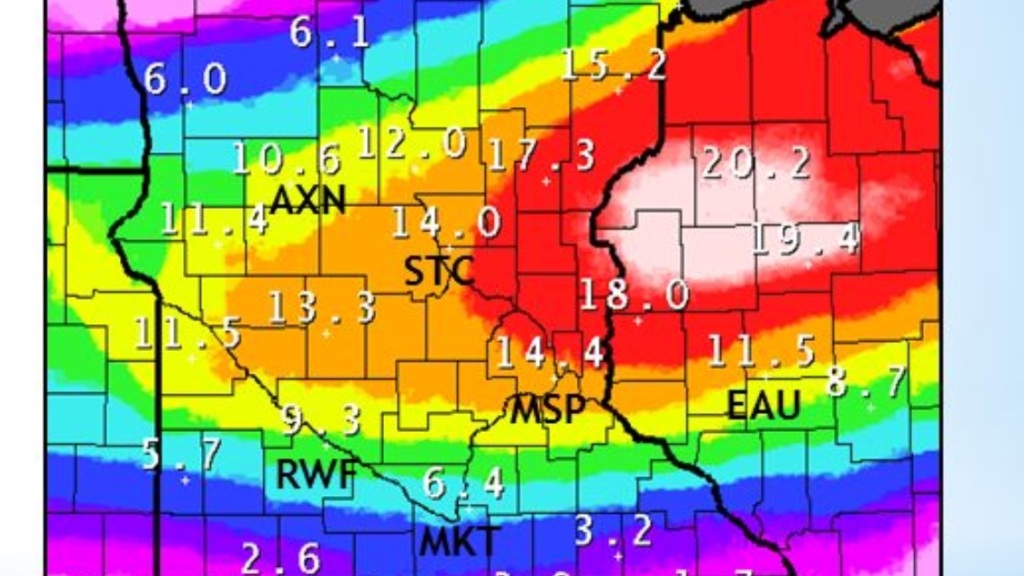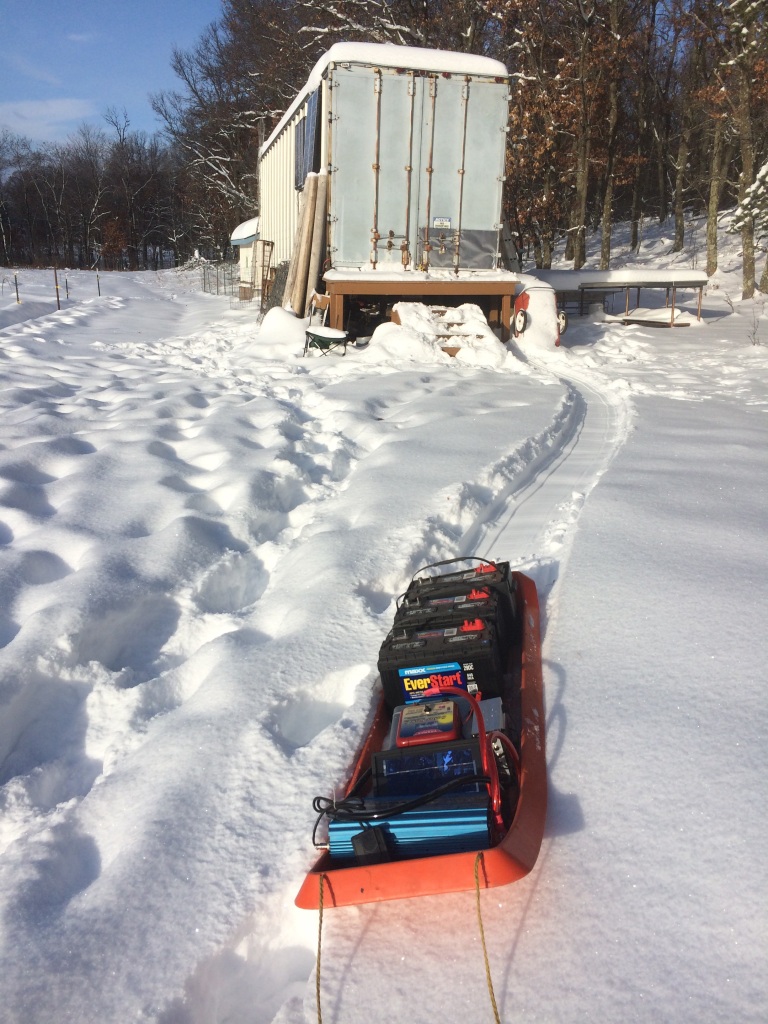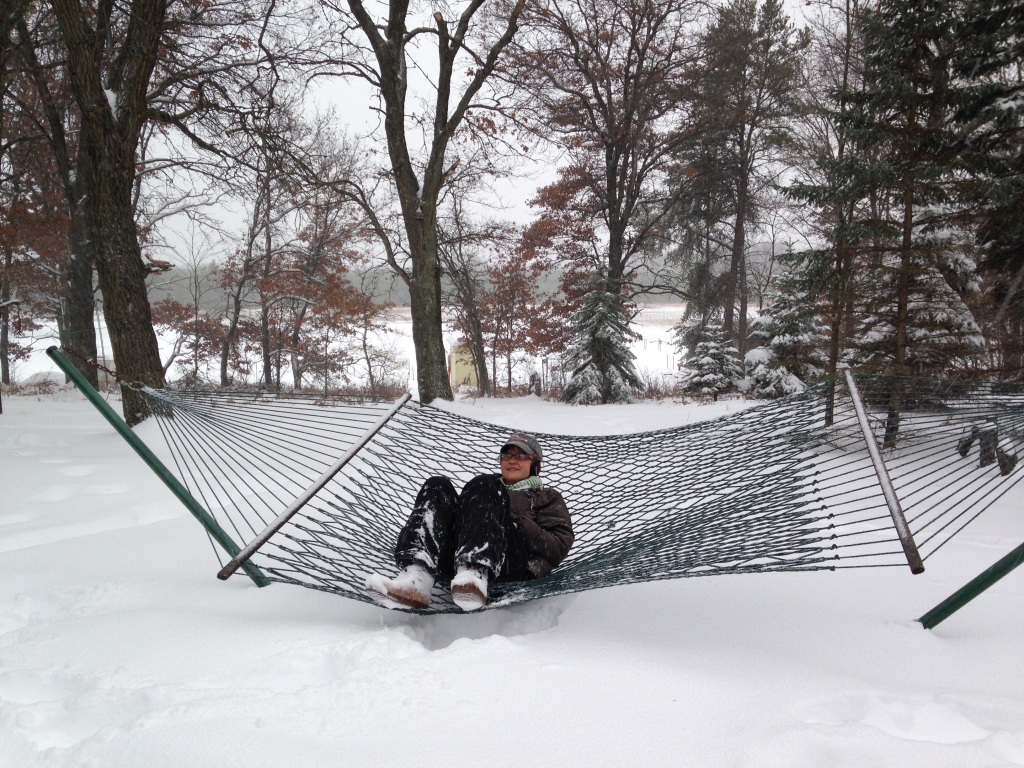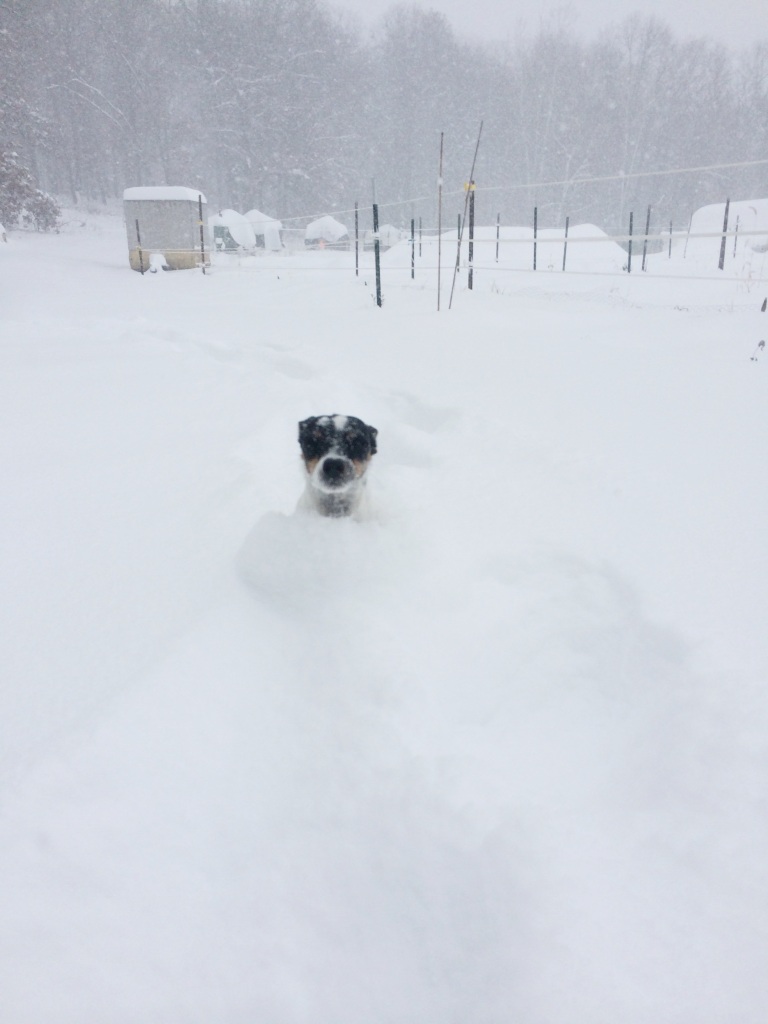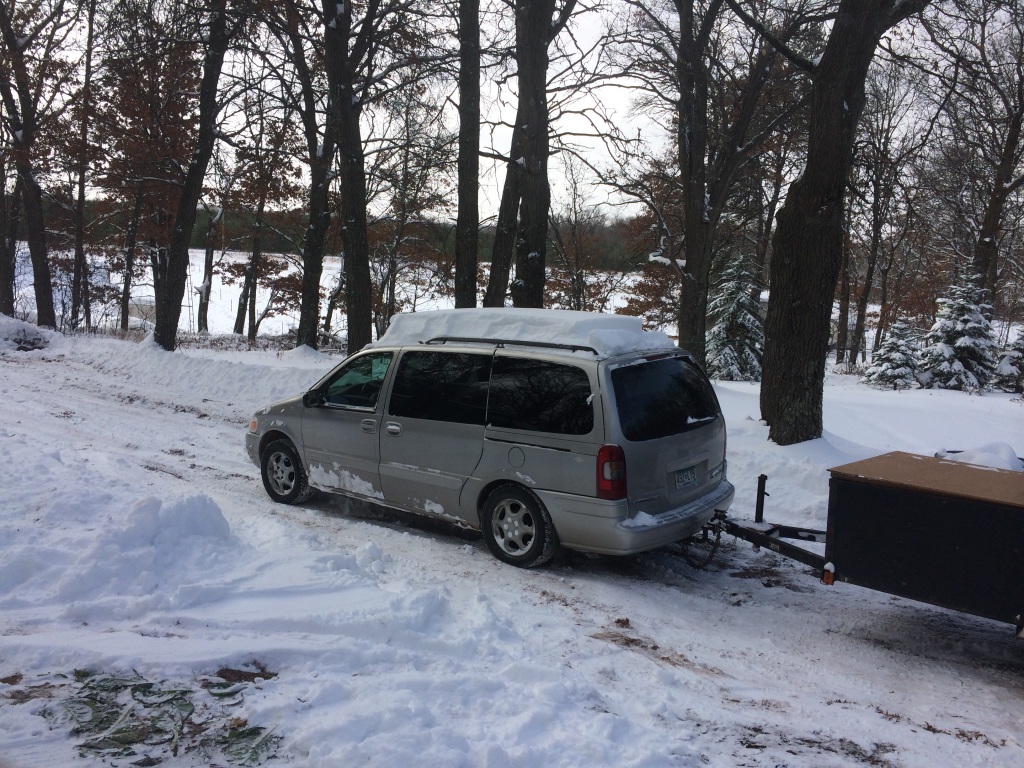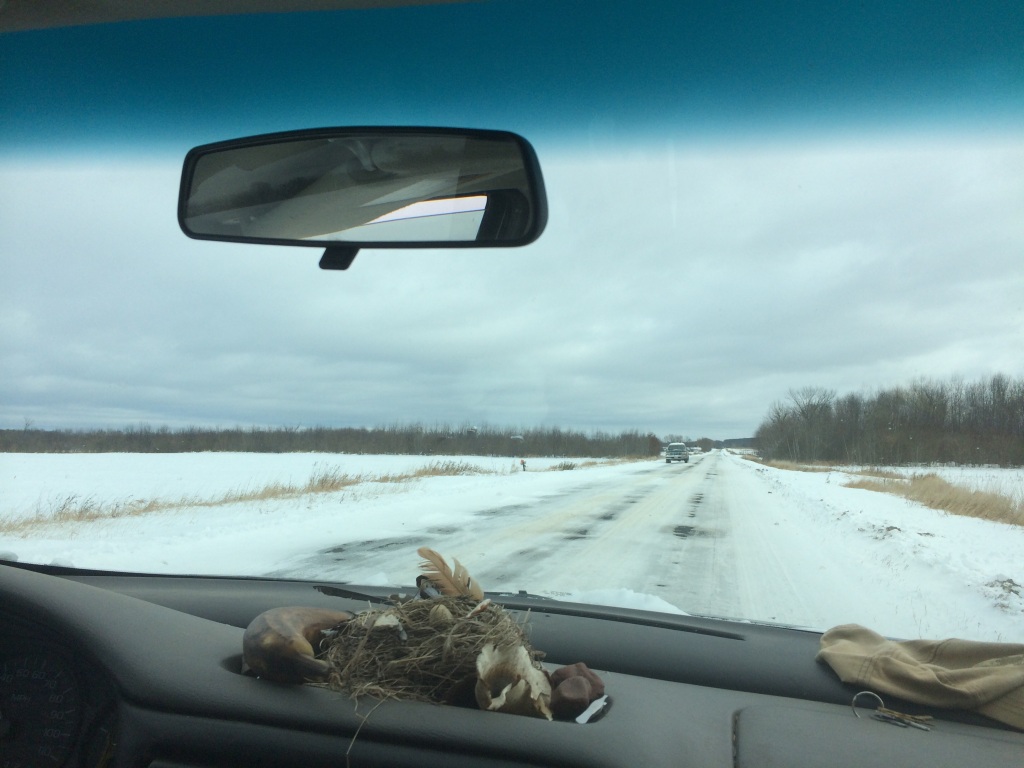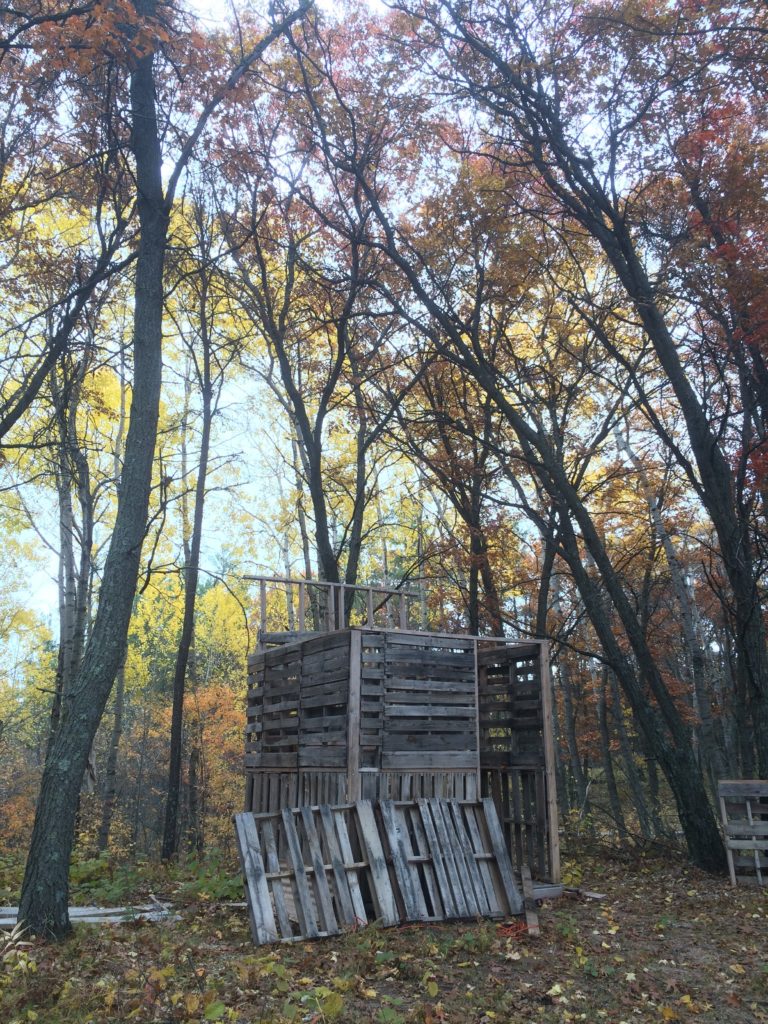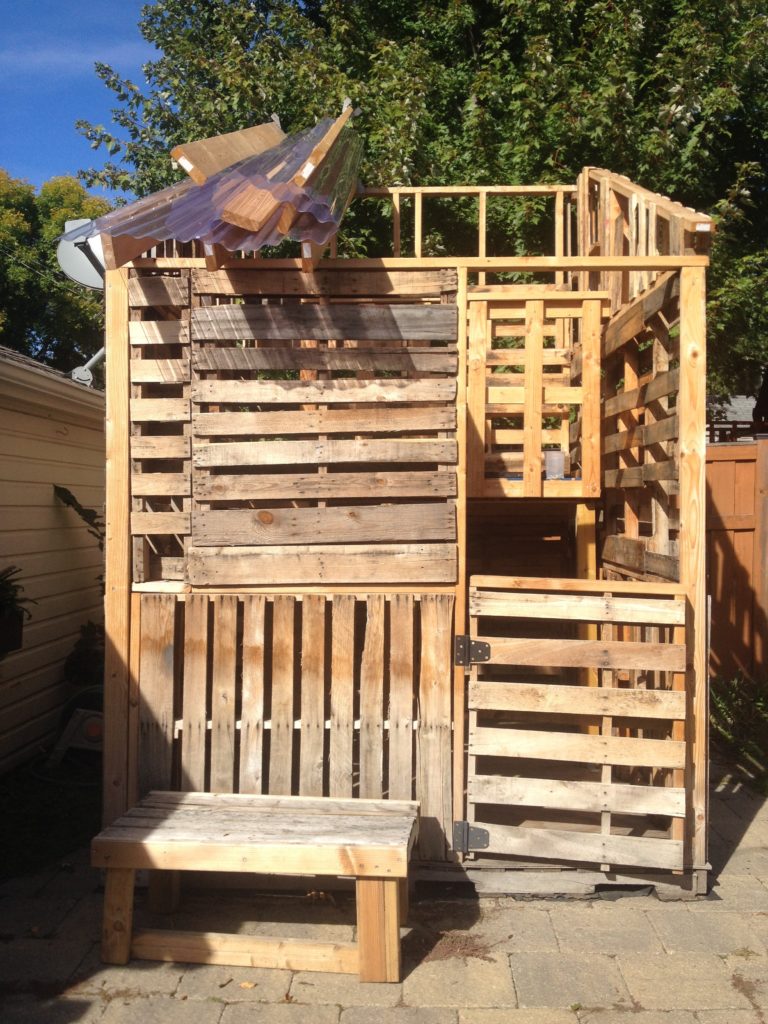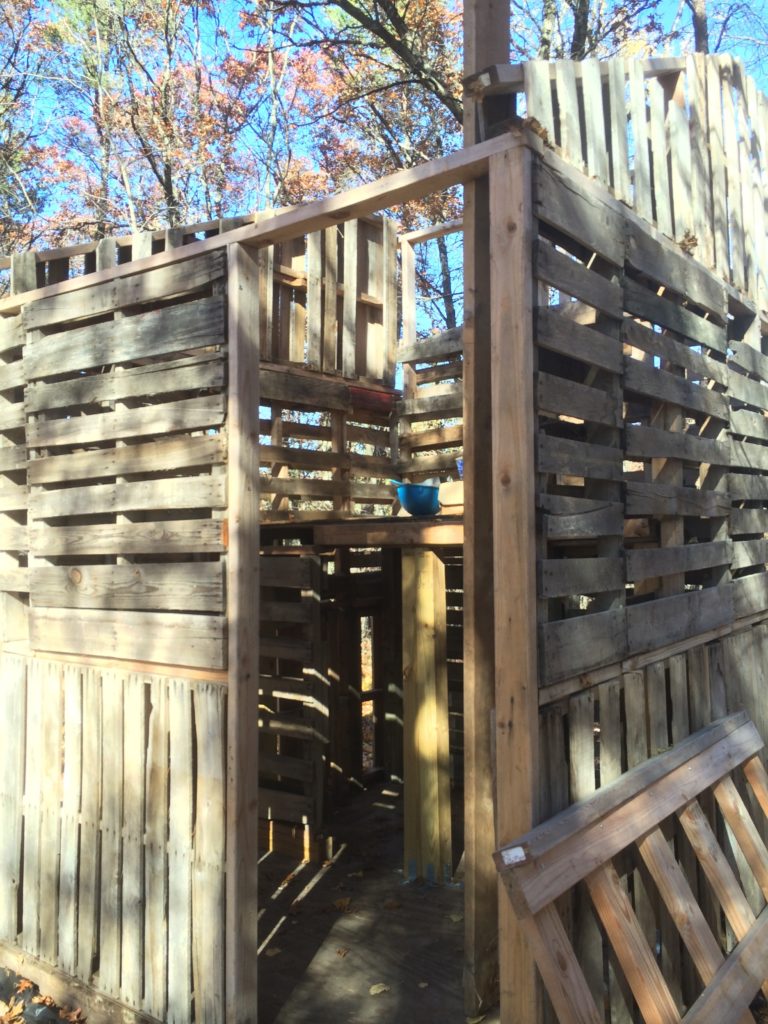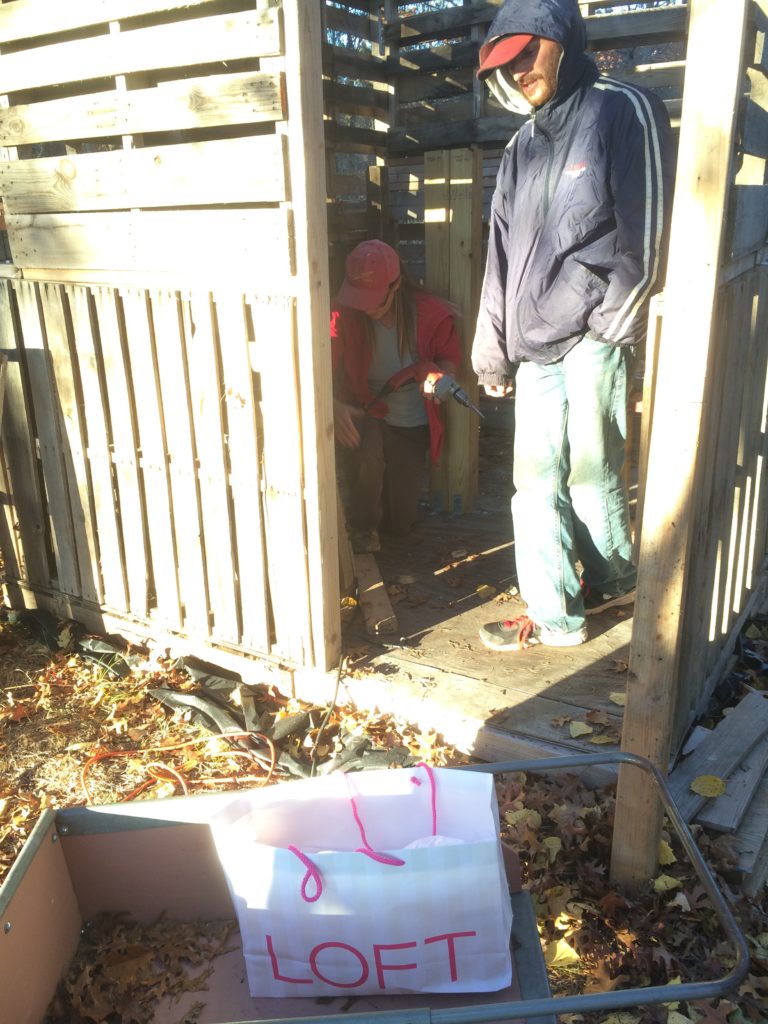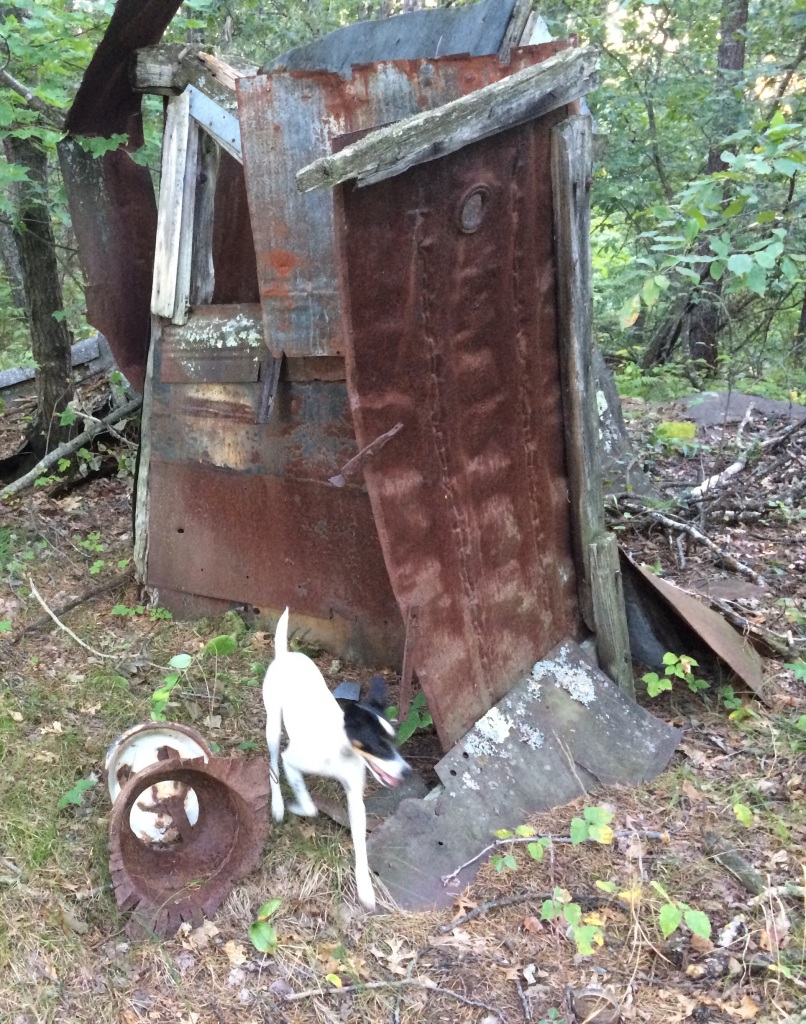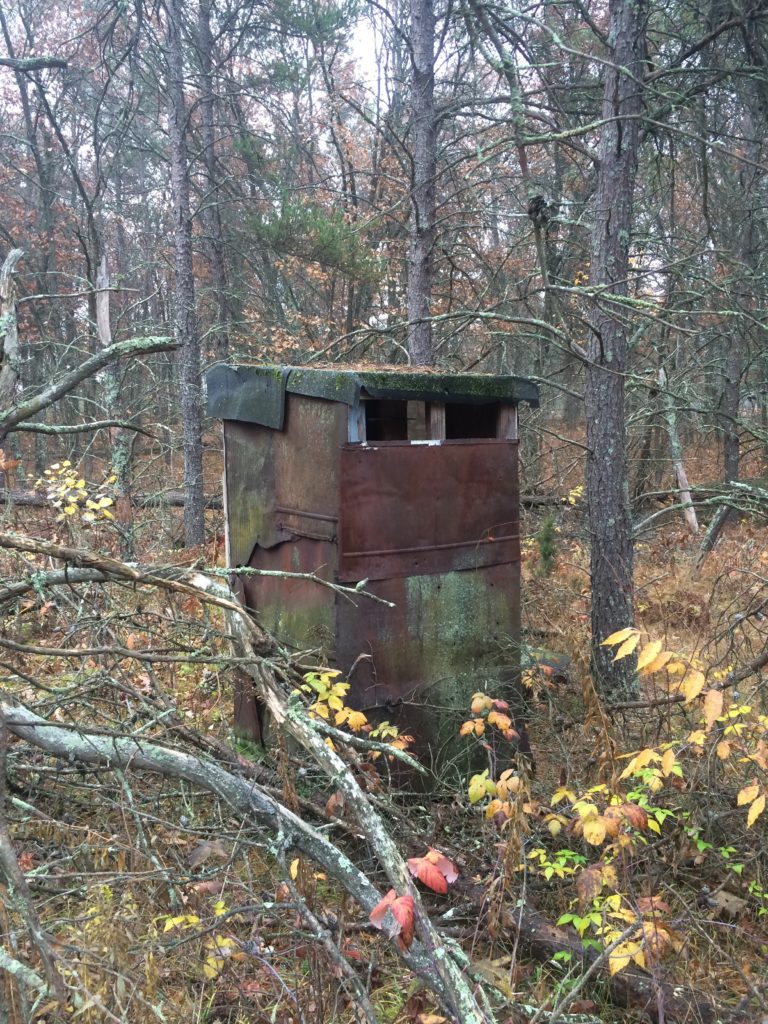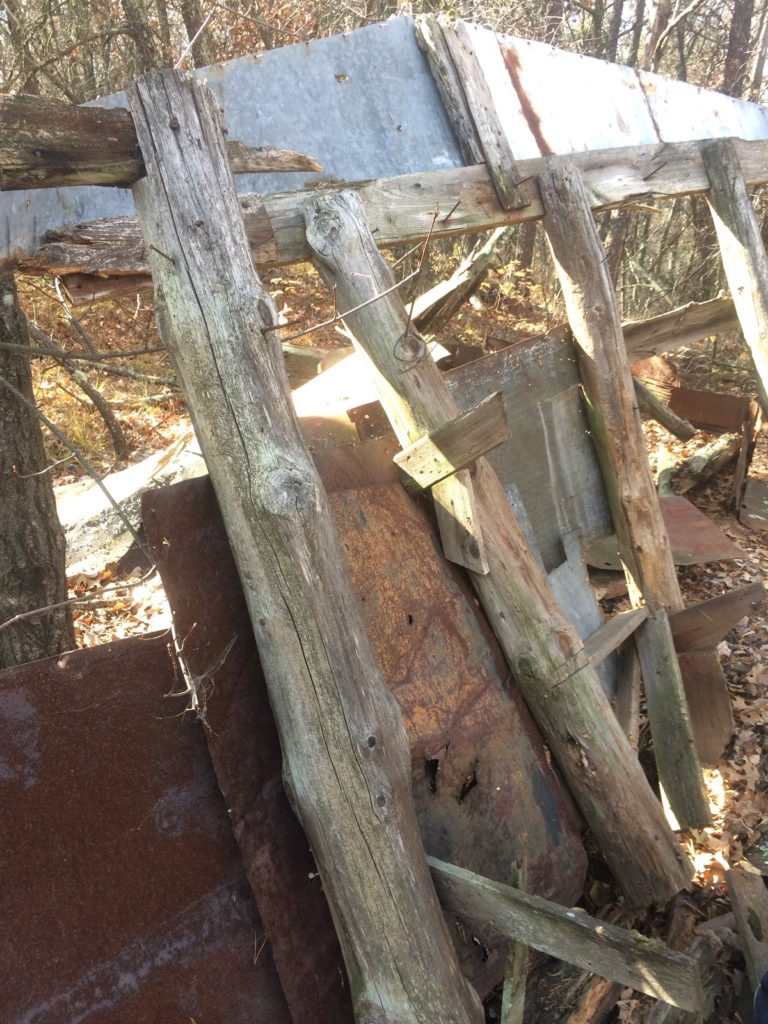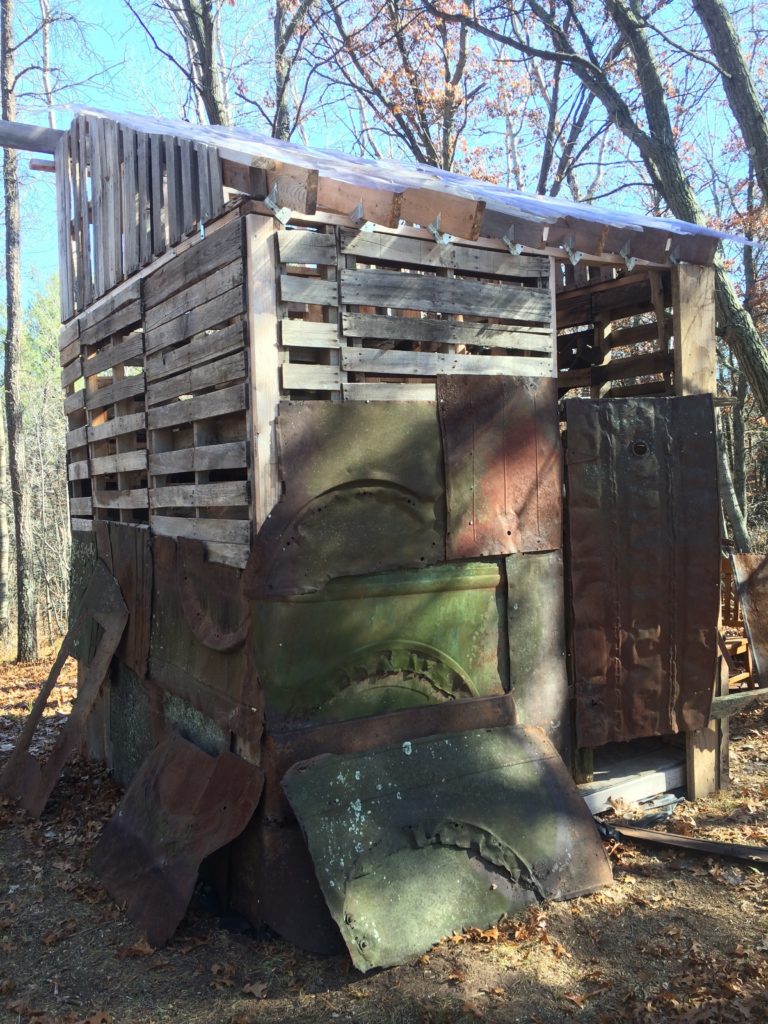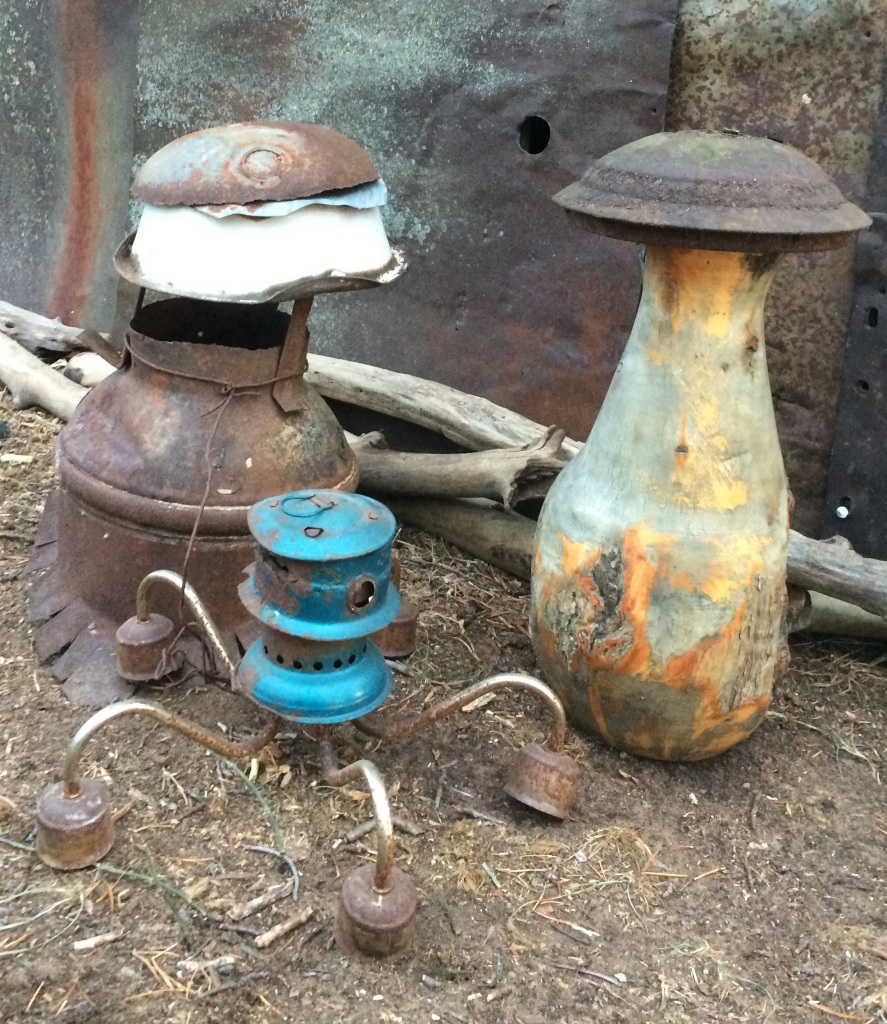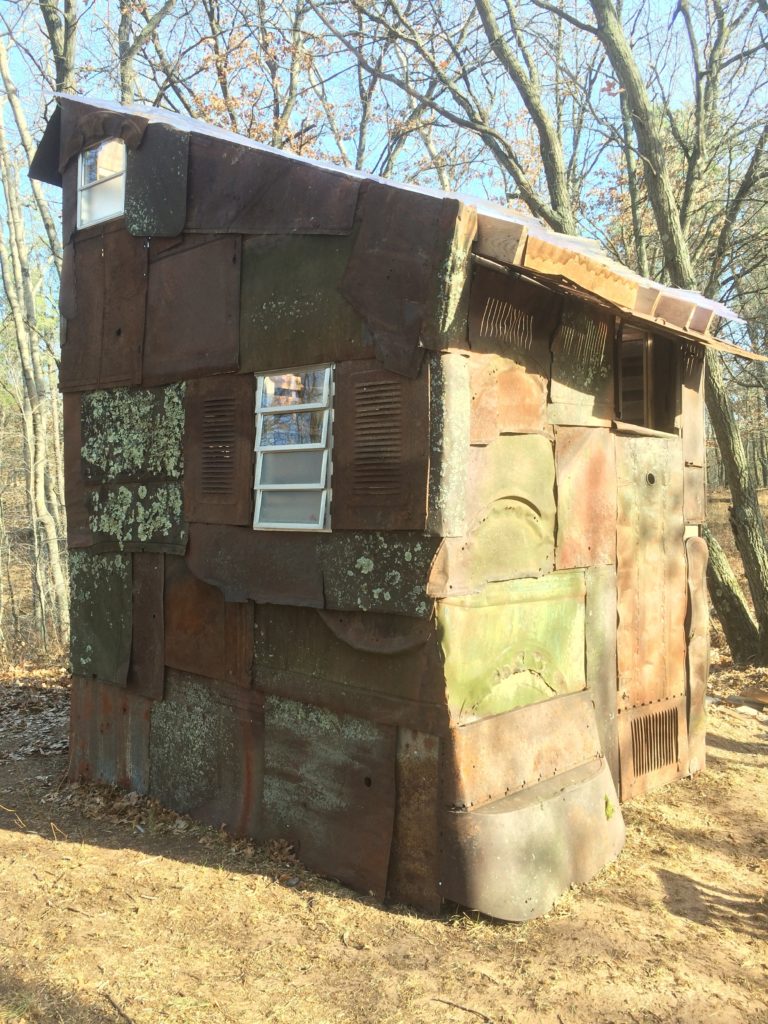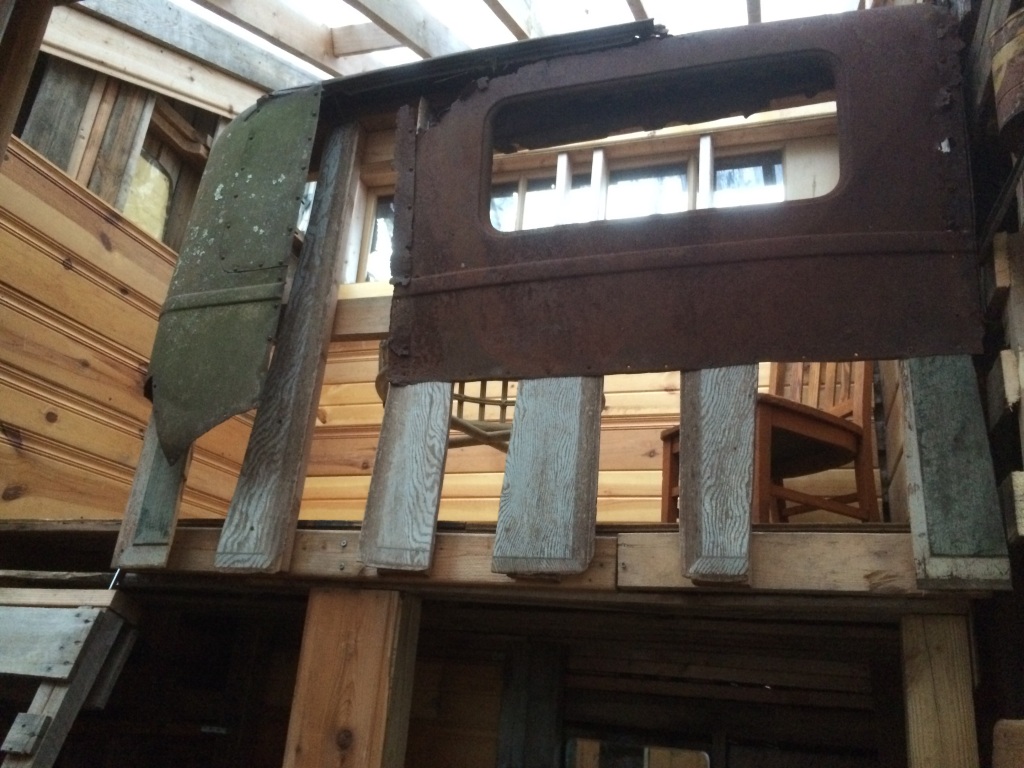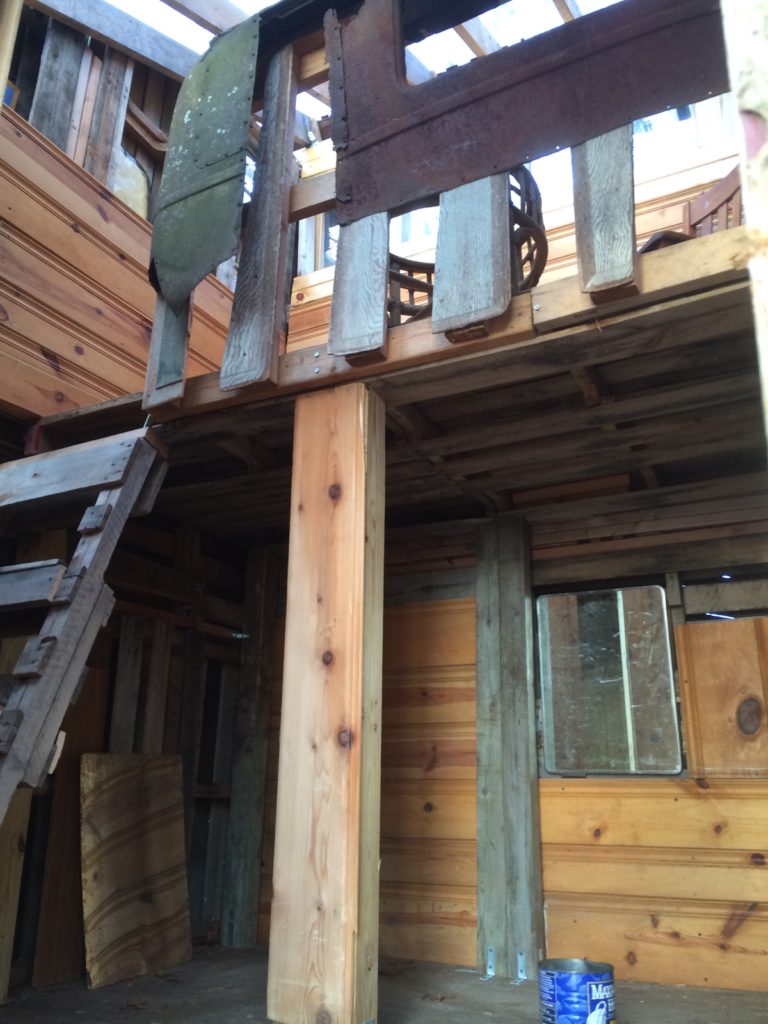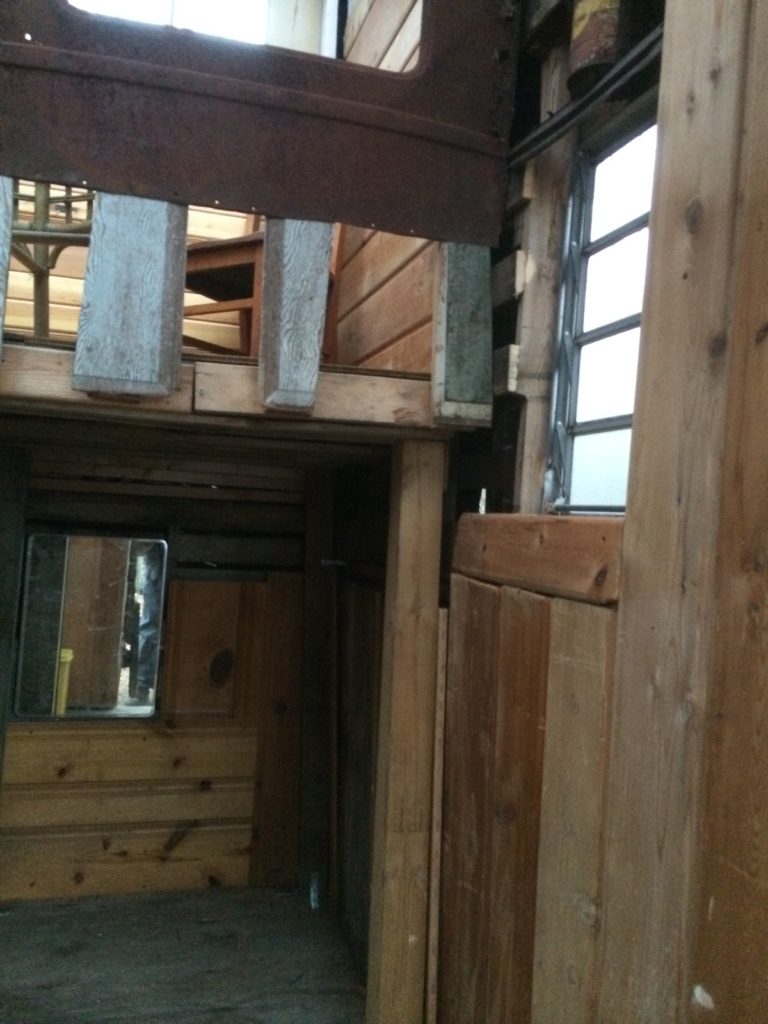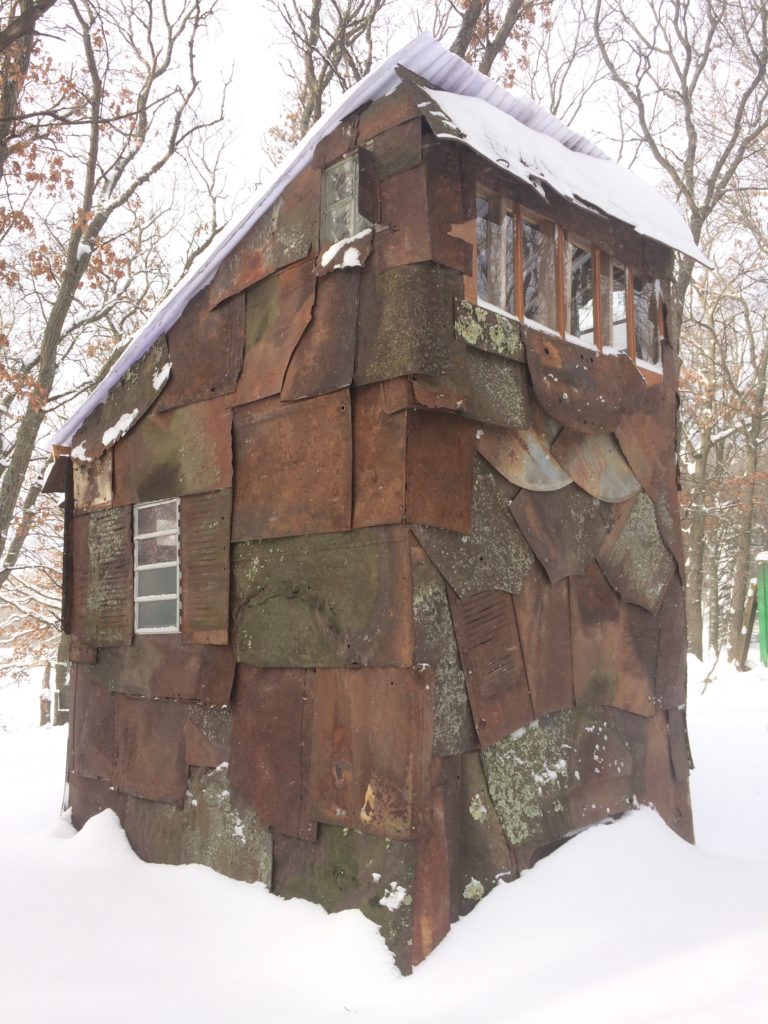Holy wow, it’s already well into May! Signs of the season surround us, reminding us just how lively this landscape is … greenery is bursting forth from every tree, every patch of earth.
Our apple and pear trees are blooming, as are the trillium, violets, and wild plum trees. The perennials are coming up – chives, rhubarb, raspberry, mint, lemon balm … and we ate our first fresh asparagus of the season last week.
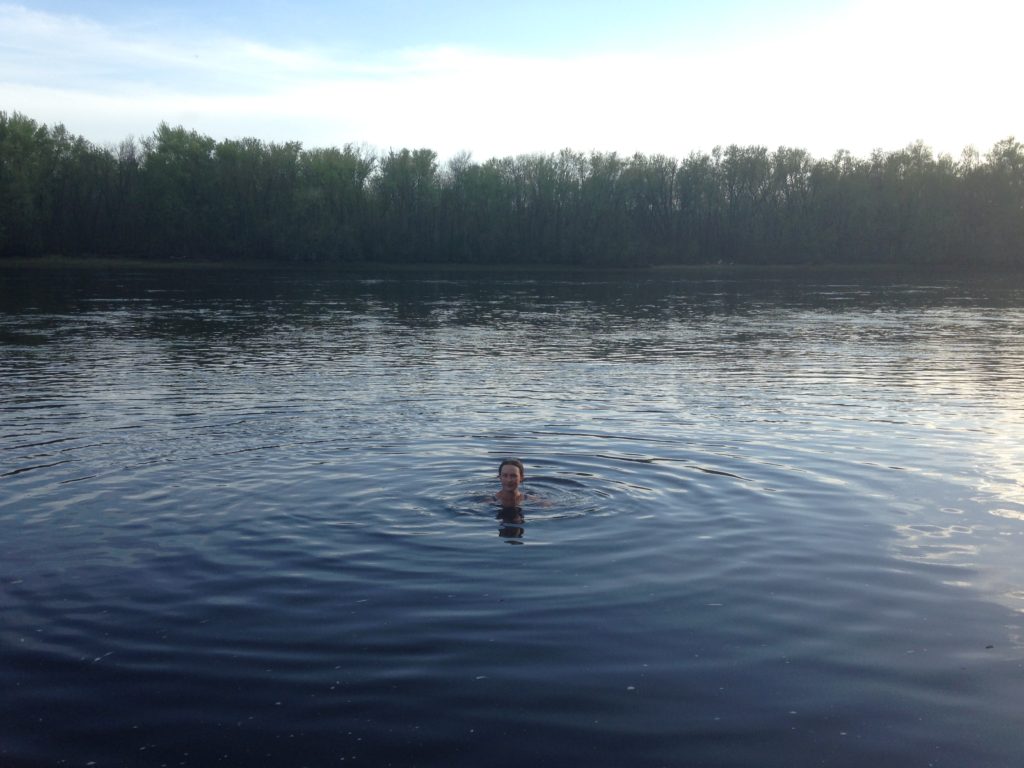
Throughout the nights, mystery critters crunch through the undergrowth or scramble across our trailer, coyotes caterwaul in chorus, barred owls demand to know “who cooks for you?“, and once in a while a fox or civet makes a freaky womanlike scream. My favorite night sound is the abundant whip-poor-wills – nocturnal bug-eating birds that I only hear here.
The black bears are out and about, scavenging for treats – a young male has been knocking over Neighbor Marcia’s birdfeeders, and the momma bear and her three cubs from last year were spotted in the woods behind us – the cubs are huge now, in their second year, and about ready to set out on their own.
As always, Spring has been an incredibly busy time, as we get everything ready for the season. My hands are stained black with soil, and feature a wound on each palm, from ignoring Kristin’s sage advice and pounding in a row of t-posts without gloves … which led to blisters that didn’t hold up well to the continued post-pounding I subjected them to.
Starting seeds, nurturing baby plants, preparing the field, keeping ourselves and the tender plants alive and warm through the chilly nights … it’s an intense time of the year, filled with all the opportunities for hope and fear that you could want!
The biggest change this year is the High Tunnel greenhouse we completed at the end of last autumn, thanks to a USDA grant.
It’s a powerful and complex 72×30′ tool that we’re learning to use. After the winter, we returned to find the ground inside it totally green with grass and weeds – a beautiful lively space to hang out in, while everything outside was barren and brown! But soon enough we had to till the green under to prepare the soil for planting.
We then laid out irrigation throughout – since no rain falls inside, all the plants’ water needs must be delivered by us. There are soaker hoses that are gravity-fed by our rainwater collection tanks up on the hill, and drip irrigation lines in each row, fed by the well. We’re also adding an experimental rainwater collection system on one edge … which should be able to collect over 600 gallons of water from a 1″ rainfall.
We primarily plan to grow hot weather crops inside, but to get things started while nights were still going below freezing we planted some salad mix and peas. They survived the cold nights just fine – but now the challenge is to keep them from overheating during the sunny days, when temperatures in the high tunnel can easily reach triple digits if we aren’t careful. To ventilate the high tunnel, we roll up the 70-foot long side panels, permitting a cross-breeze to move through. This works pretty well, however, if it’s not merely breezy but windy (basically anything over 10mph), then we have to close at least one side up to prevent damage to the structure. It’s been a learning experience trying to balance wind minimization with heat regulation – and it will get even more interesting when the hot, sunny days of summer are upon us. (We plan to add additional ventilation in the peaks on both sides to help move hot air out even when there is no breeze.)
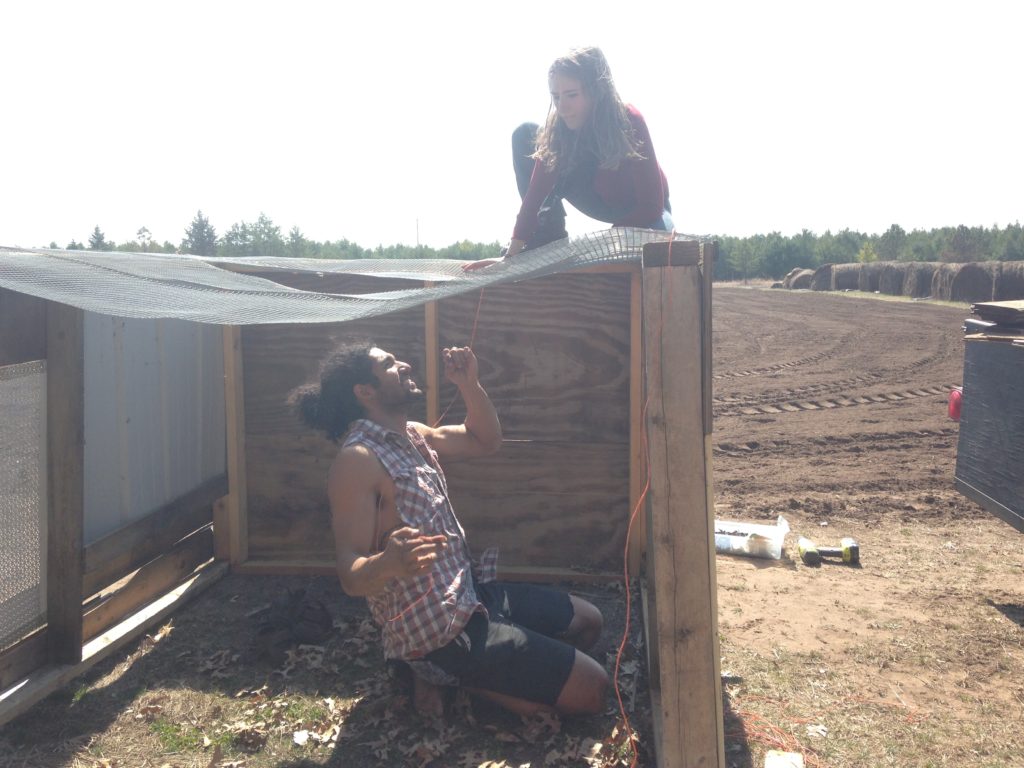
We’ve been very fortunate to have plenty of help this Spring. It would be a ridiculously long blog post if I tried to list it all, but I’ll try to hit some highlights …
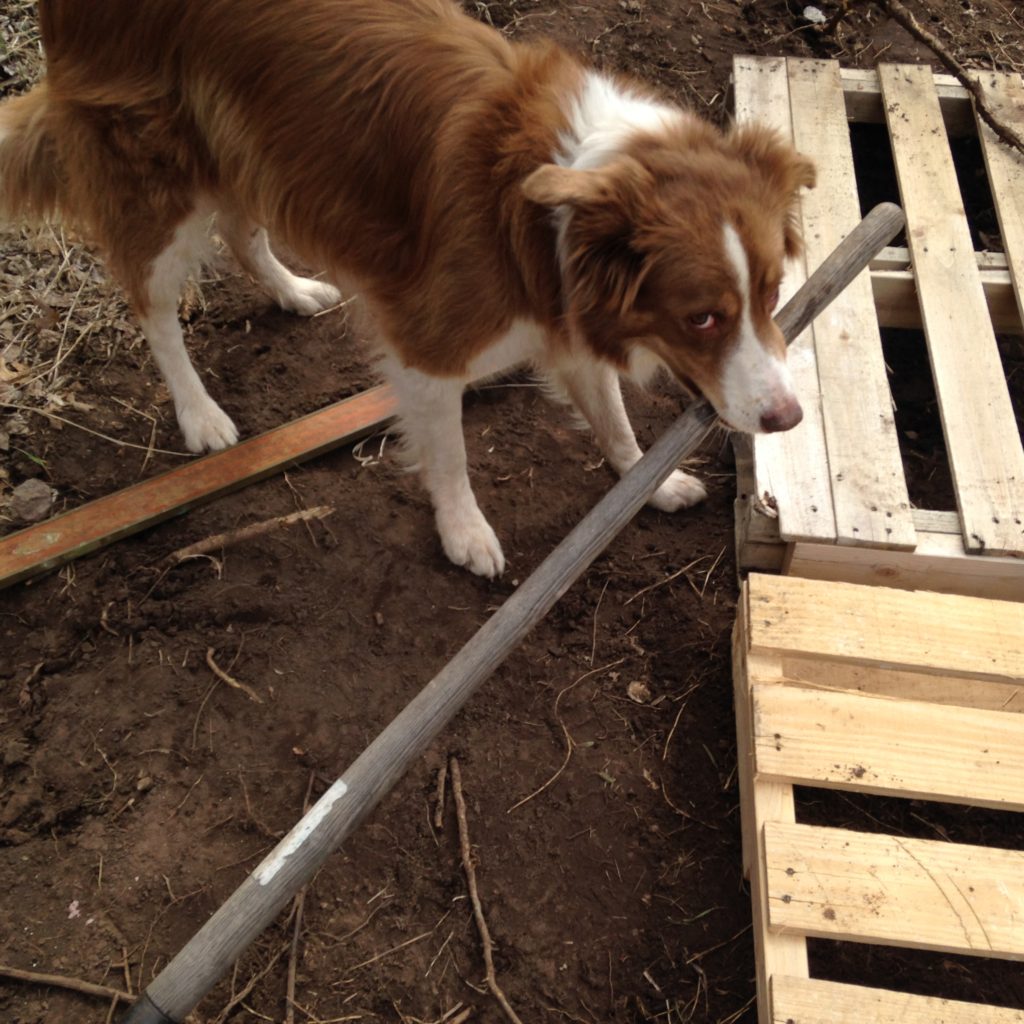
Kristin’s dad Patriarch Jim Sehr has been helping us out a ton with various construction and repair projects – he added a service door to the high tunnel for far easier access, engineered the rainwater collection on there, got the riding mower working, and plumbed in our new and improved well pressure tank. And Matriarch Deb Sehr came out to cut and plant potatoes – and even do some dishes so we can stay on top of the field and construction projects.
Neighbors Dave & Marcia kept our flock of hens happy throughout the winter, provided us with additional firewood to fuel both the greenhouse heater and the new WWOOFer cabin (more on that a bit), lent us gopher traps, tools, and best of all, their tractor!
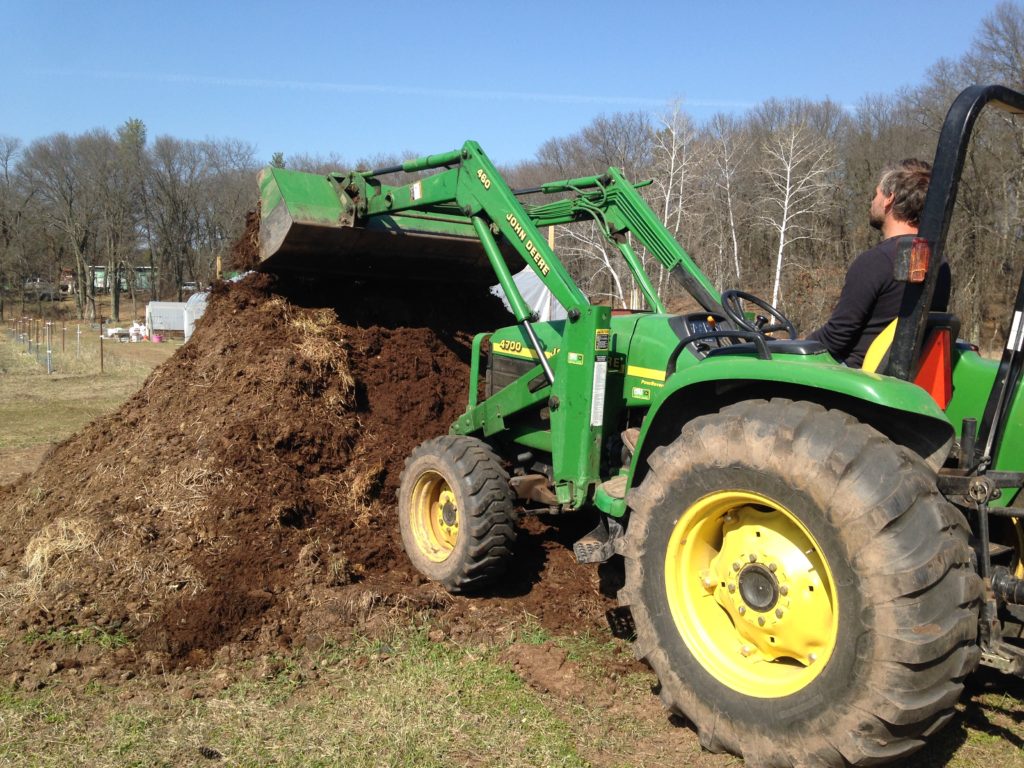
Plus, when I was despondent thinking I’d killed our well pump (it turned out to just be a flipped breaker in the generator), Marcia brought over rhubarb custard dessert and ice cream; I literally cannot imagine better neighbors to have.
Our friends from the Cities have come out to work with us (thanks Tyler, Amy, Steffan, & Eugene!) , and we’ve had lots of help from B & Nora – the WWOOFer/musician couple that worked here throughout the end of last season, and then returned early this spring. We got a free ice fishing shack off of Craigslist – insulated and complete with a little wood stove.
This turned out to be a perfect solution for them to sleep in throughout April – they helped us build it, and then made it their home – although they’d been prepared to just rough it under huge piles of blankets, the heated, insulated Fish House worked out much more pleasantly. Oh, and their Maine Coon cat, “Bucket,” is working with us too – keeping the vole population down.
The field still looks pretty empty, but the first wave of food is taking root out there – potatoes, peas, onions, radishes, turnips, and various salad greens have begun to stir, stretch, yawn, and emerge into the sunshine. And of course, there are many hundreds of plants growing in the greenhouse, awaiting suitable weather to be transplanted out.
The eternal battle with the evil quackgrass is back in full swing – we till or broadfork the soil of each row before planting, and then pull out as much of the tenacious, ropey, unkillable rhizomes as possible.
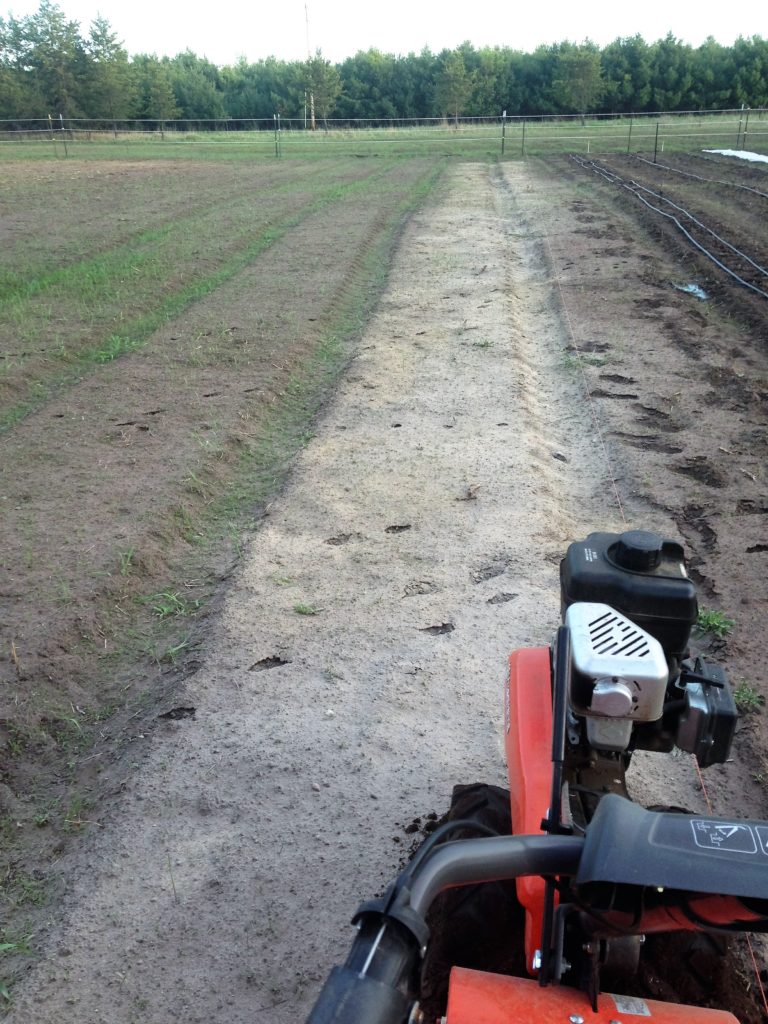
We’ll be using thick layers of mulch to slow down what doesn’t get pulled (it regrows from every tiny piece of root left behind) … it’s not a war that we ever really win, but we hold it at bay enough to get our crops for the year.
We give it the good fight and it reminds us that our farming here is not about efficiency … or even being reasonable.
Like all of life, it’s absurd and irrational – and we love it.
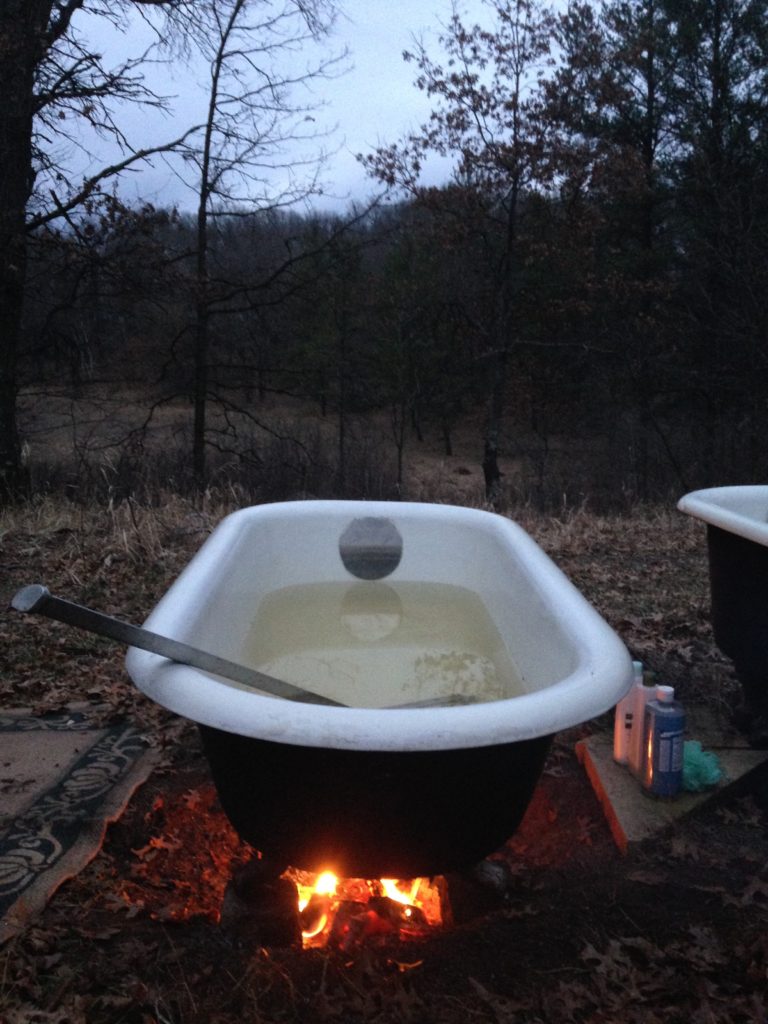
.
Thanks for joining us in the adventure!
